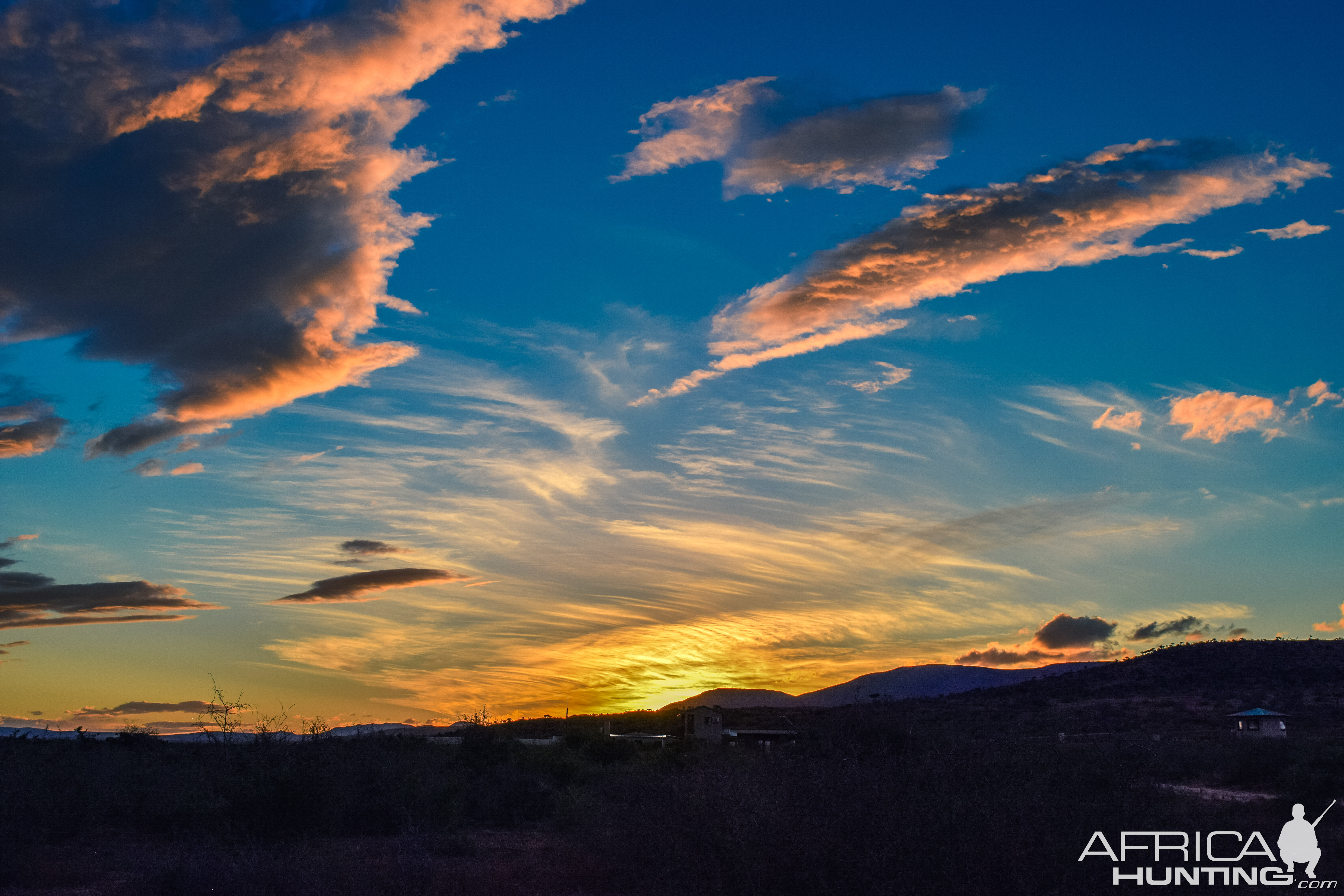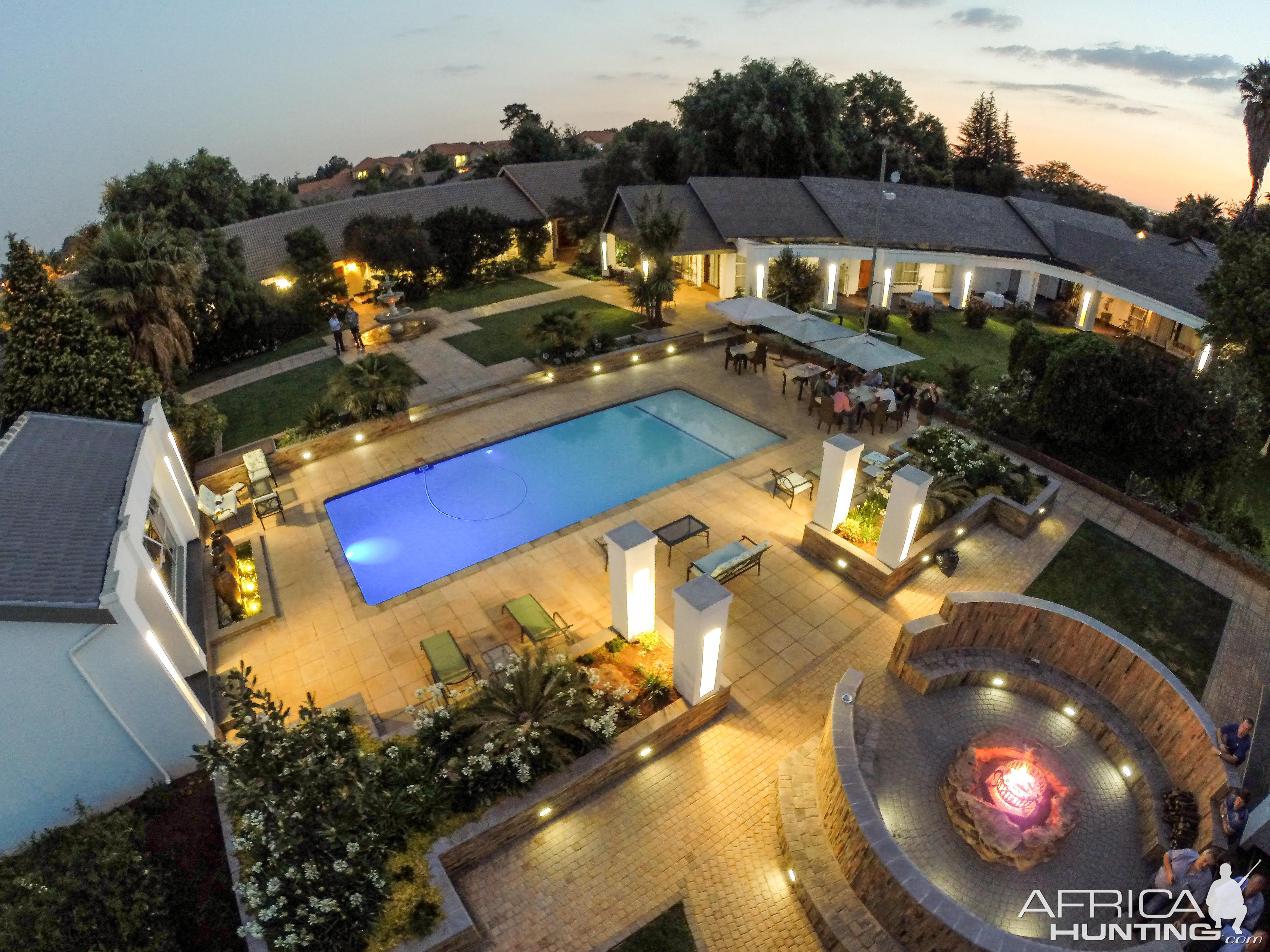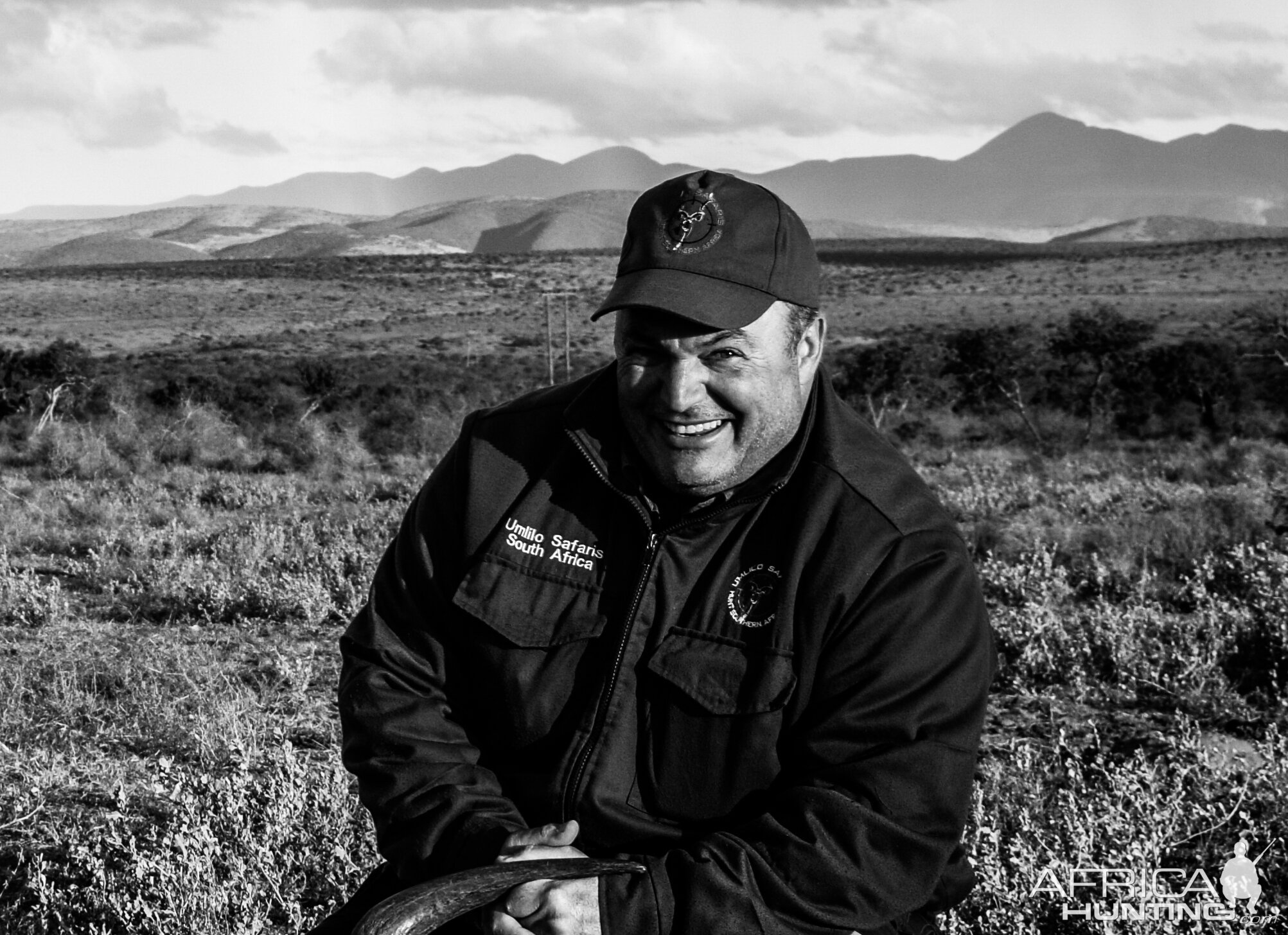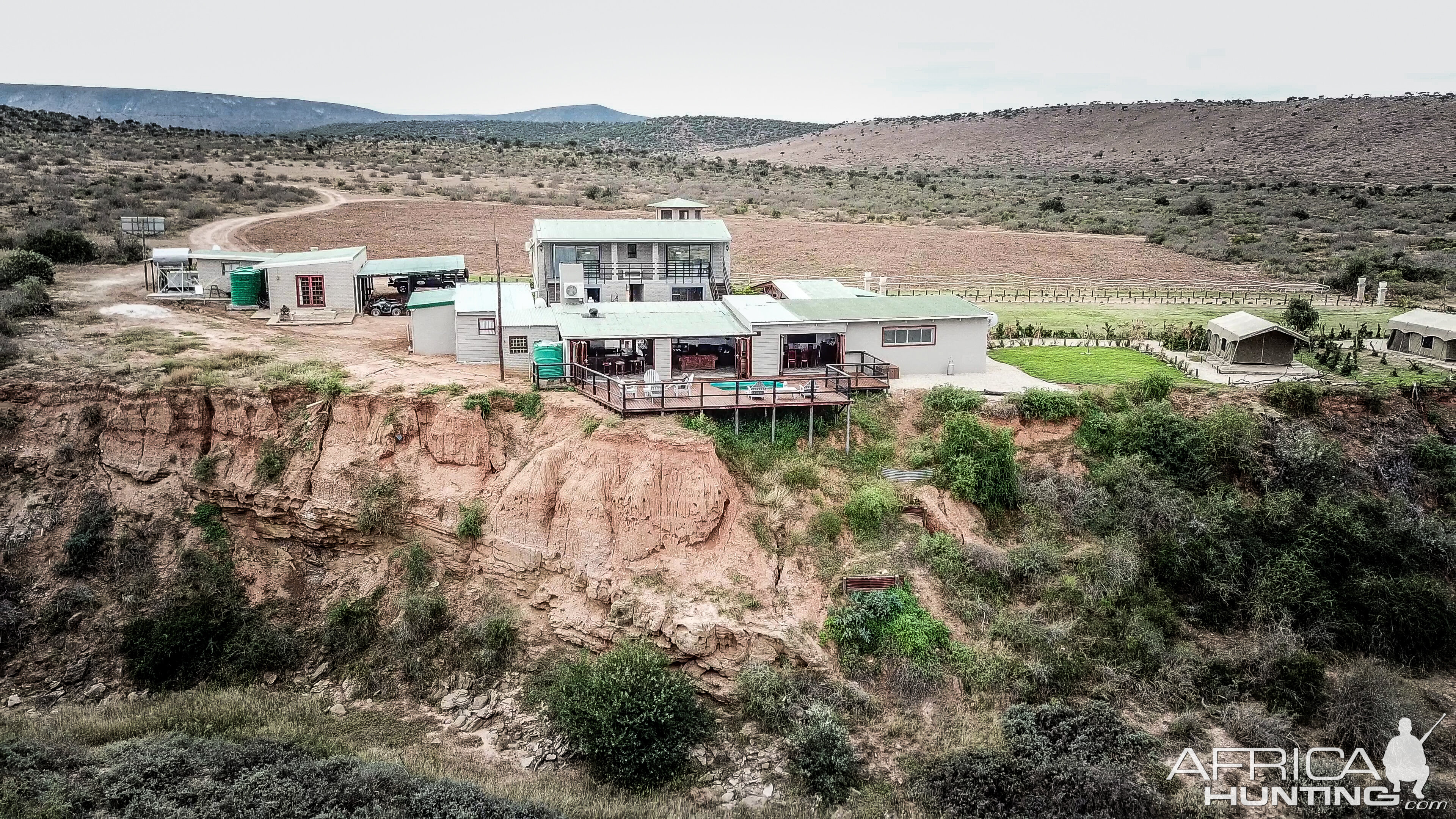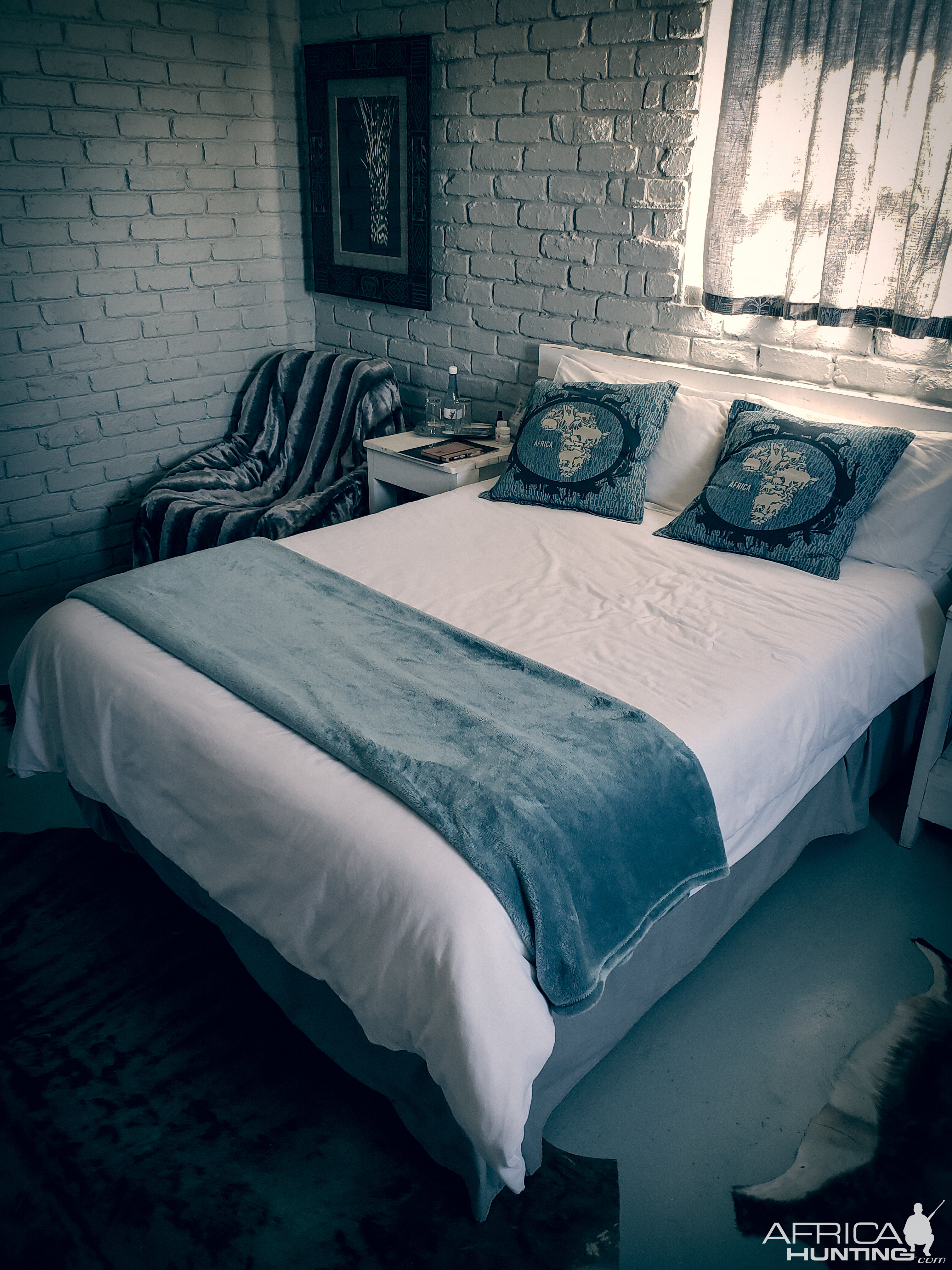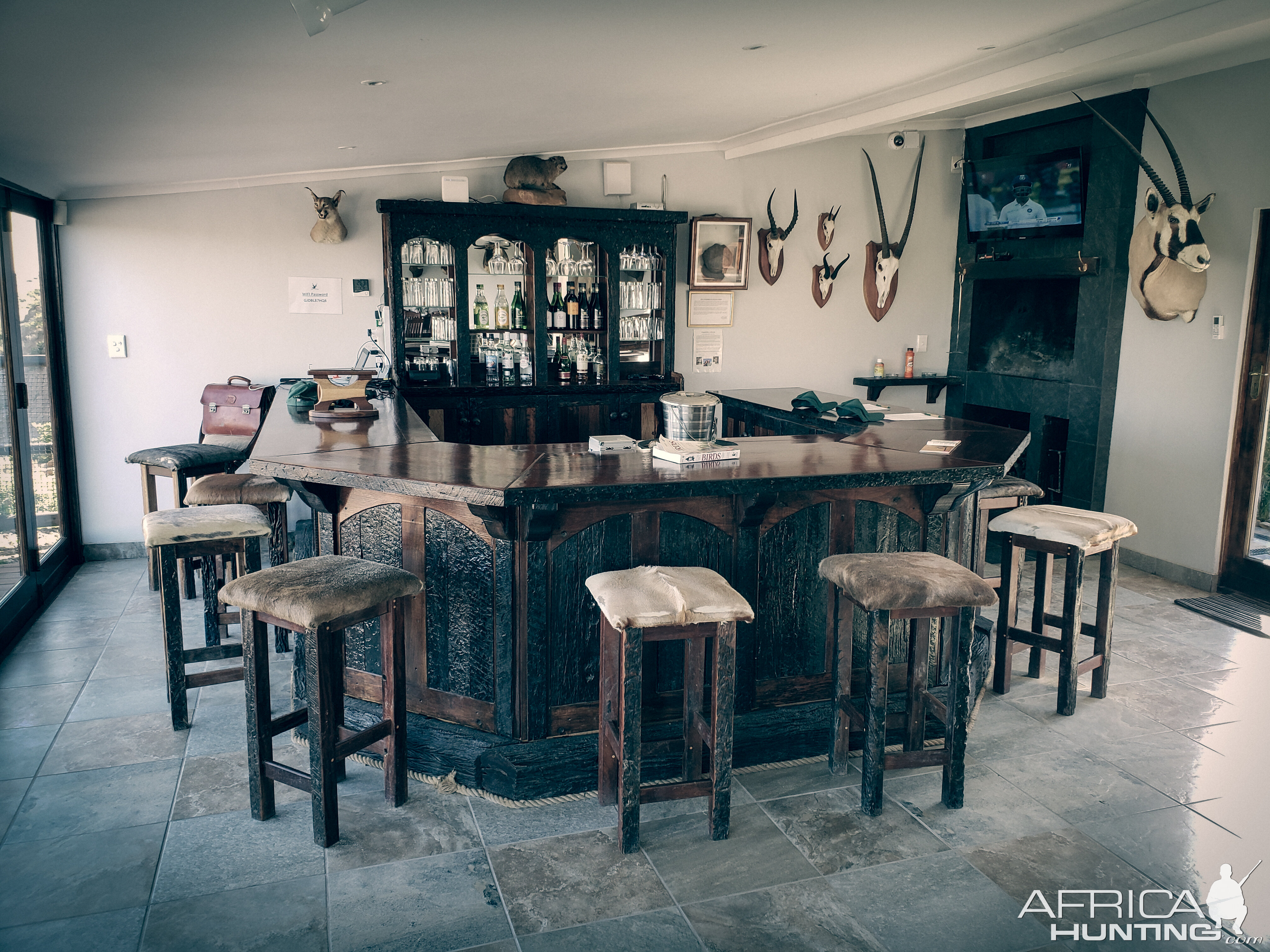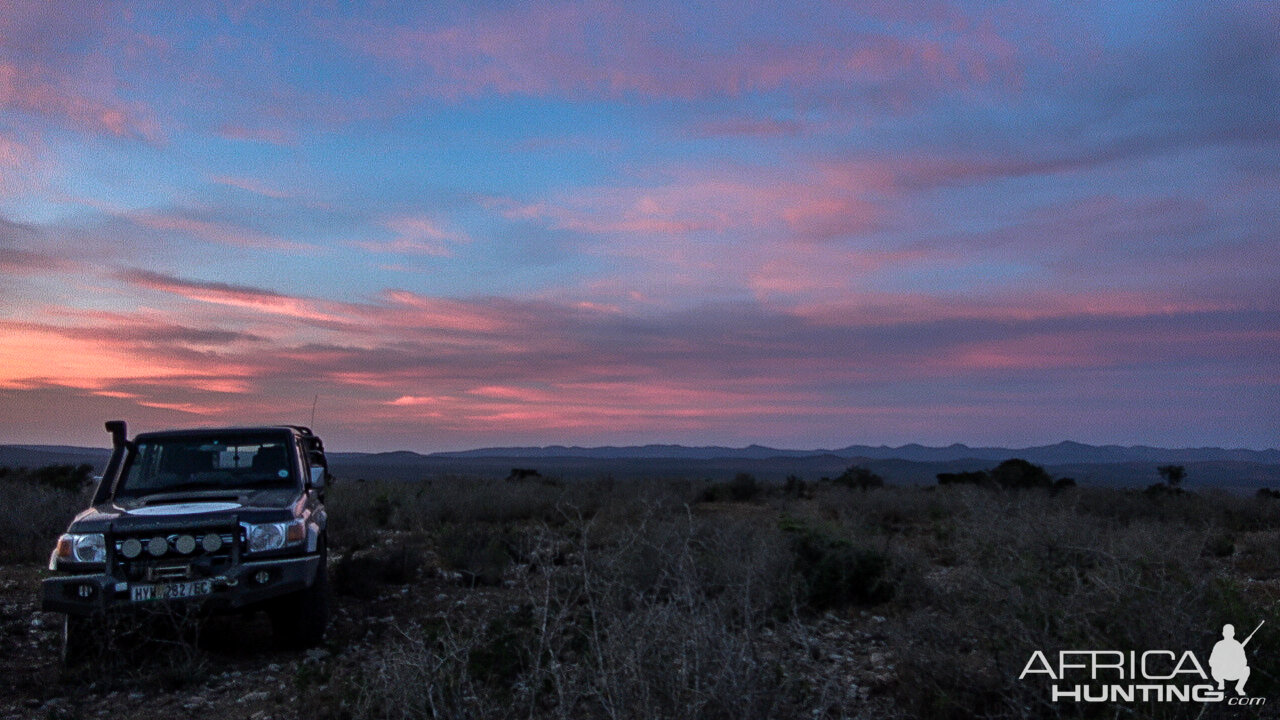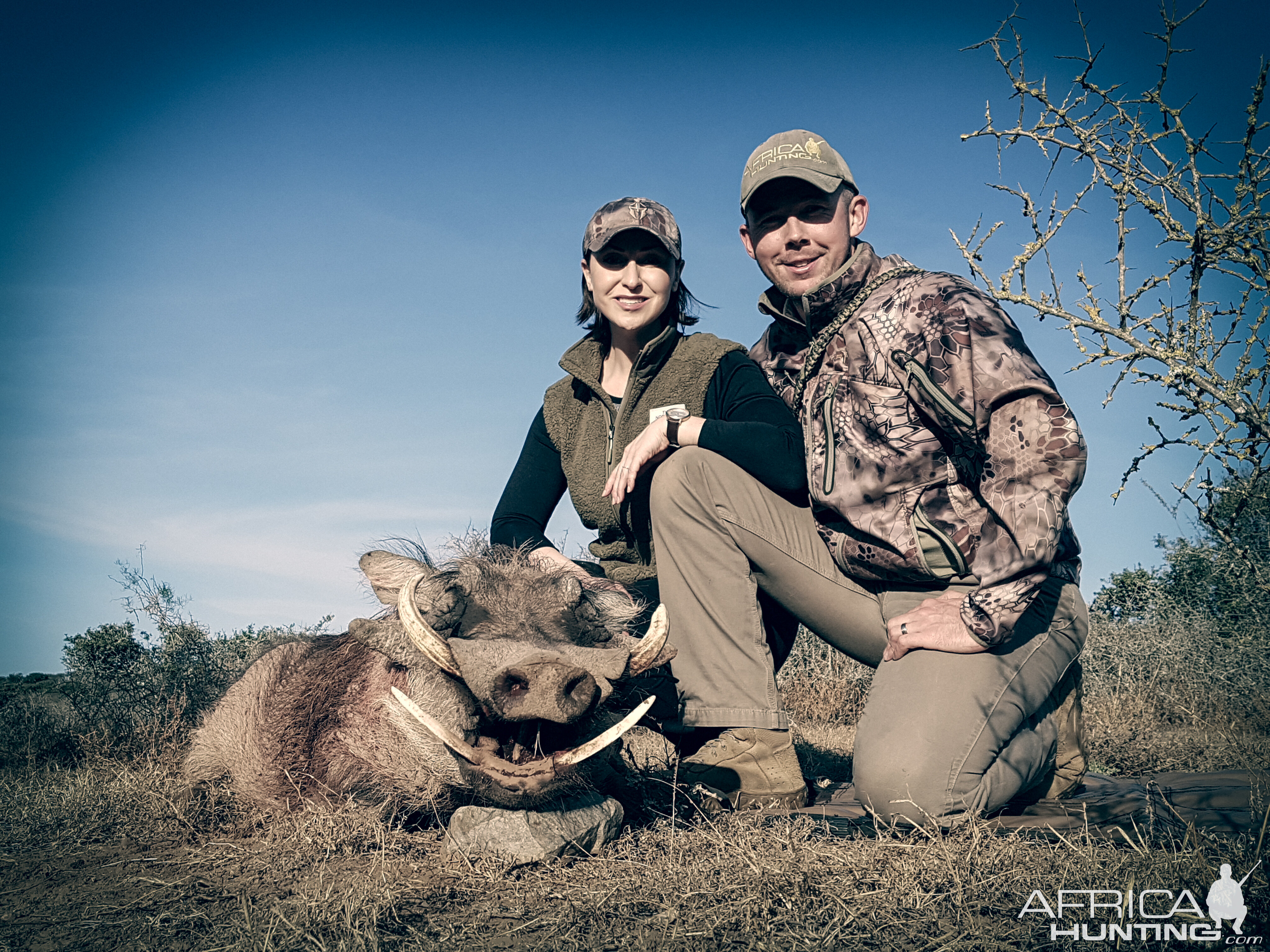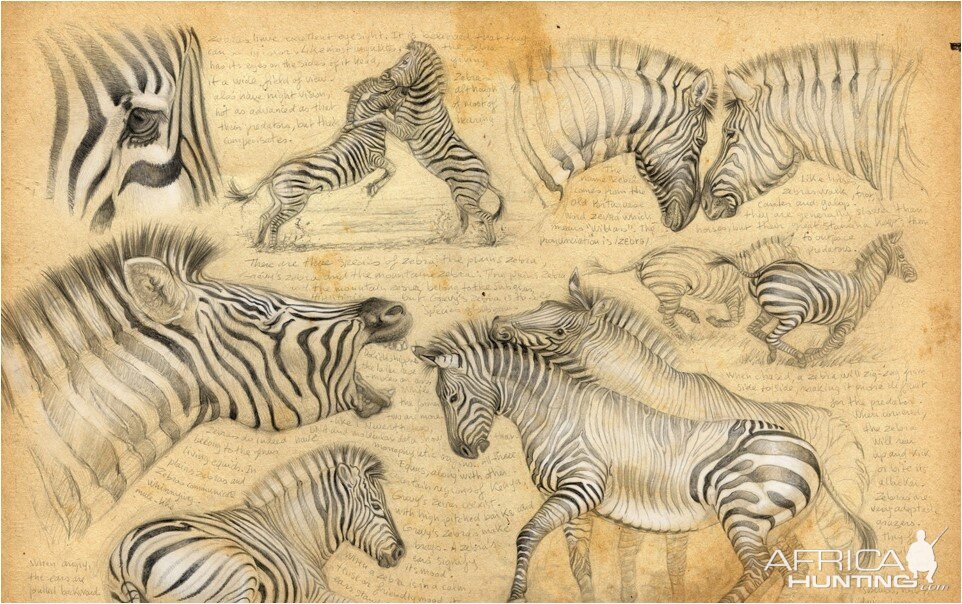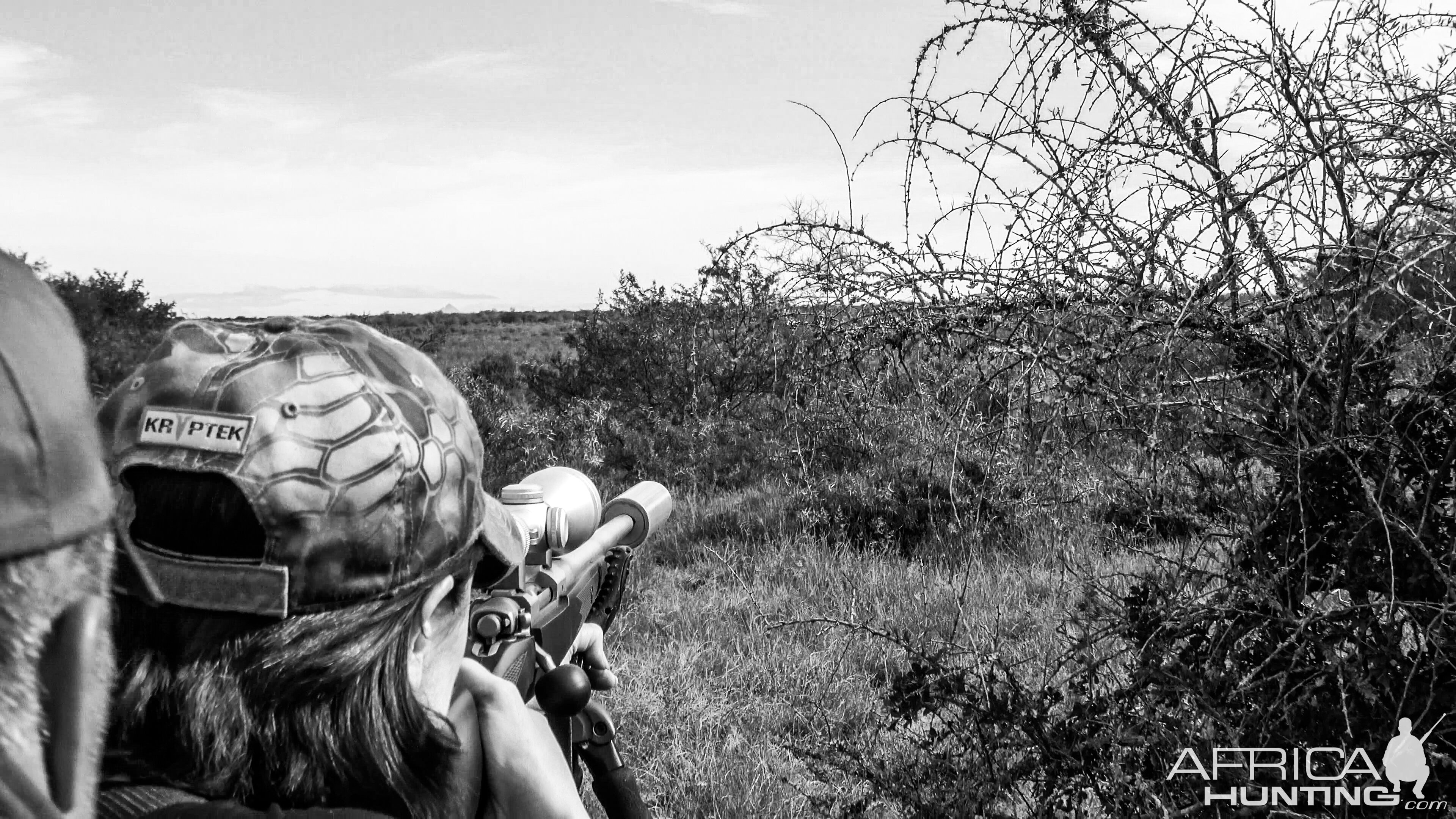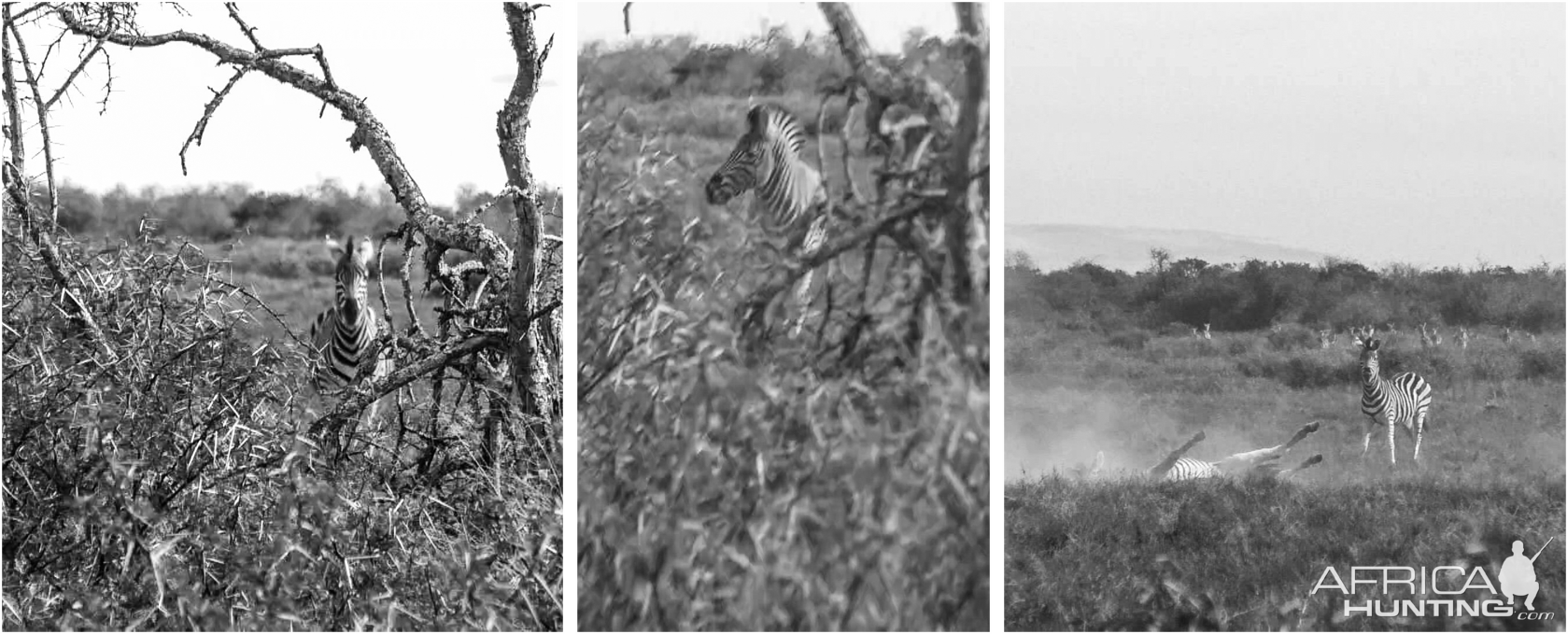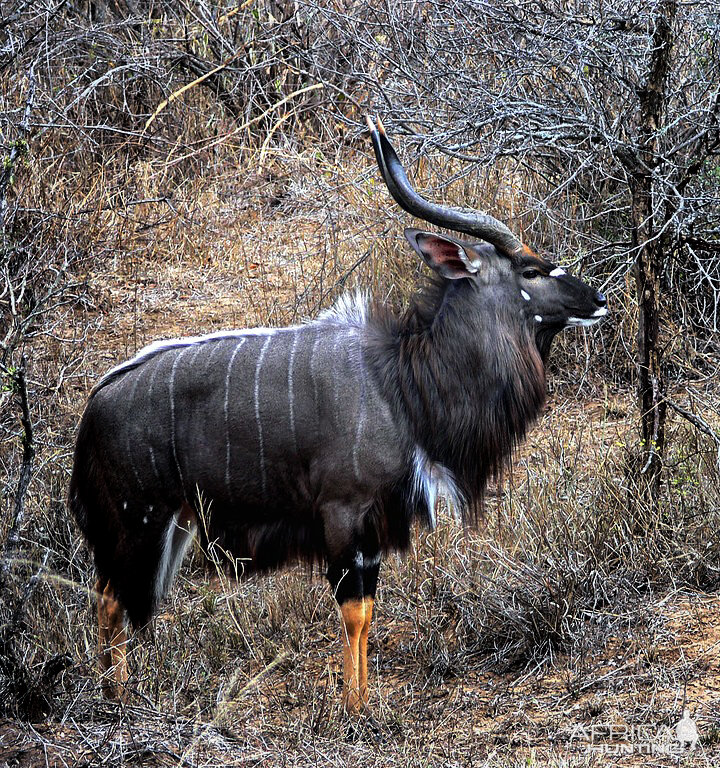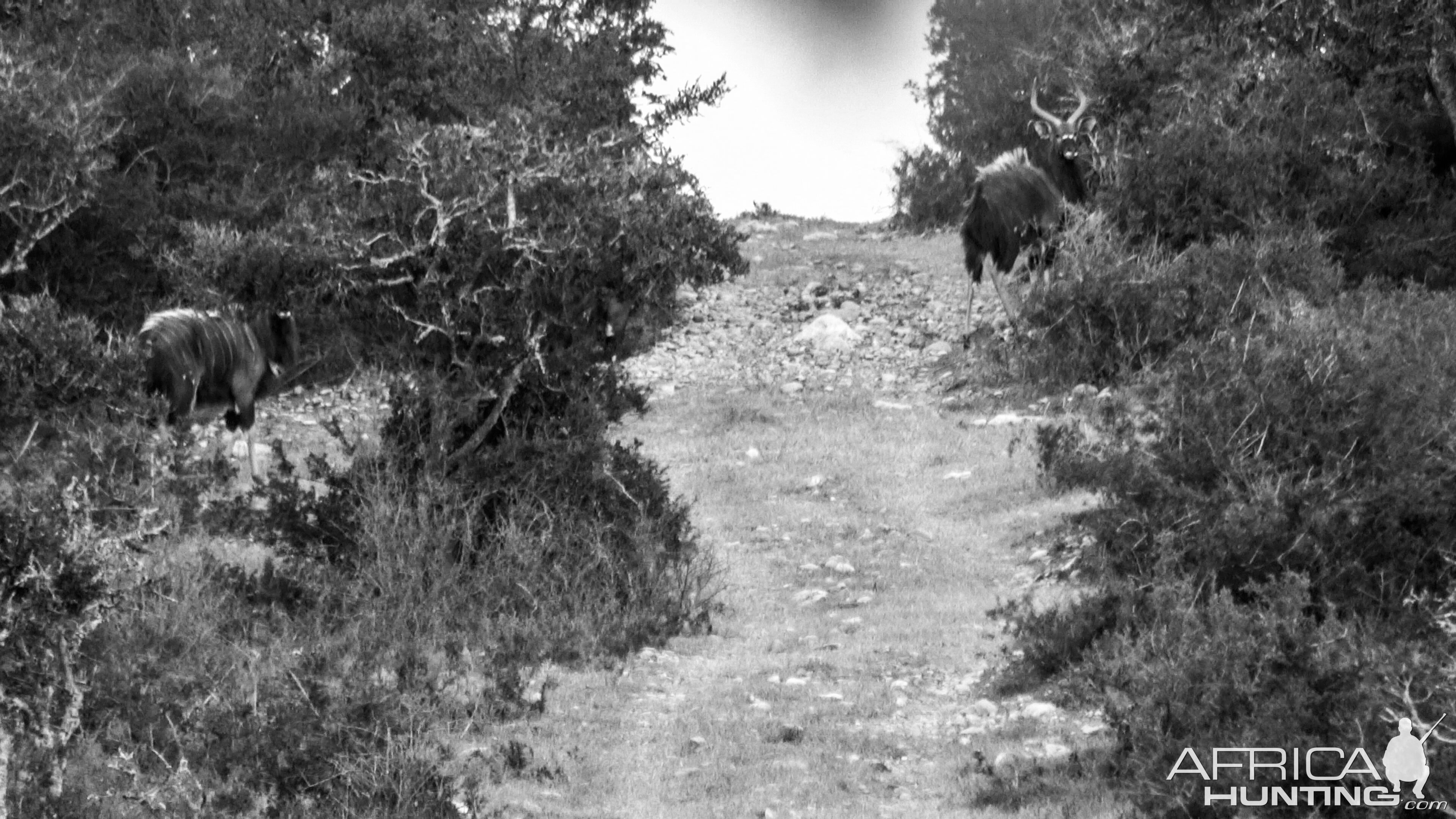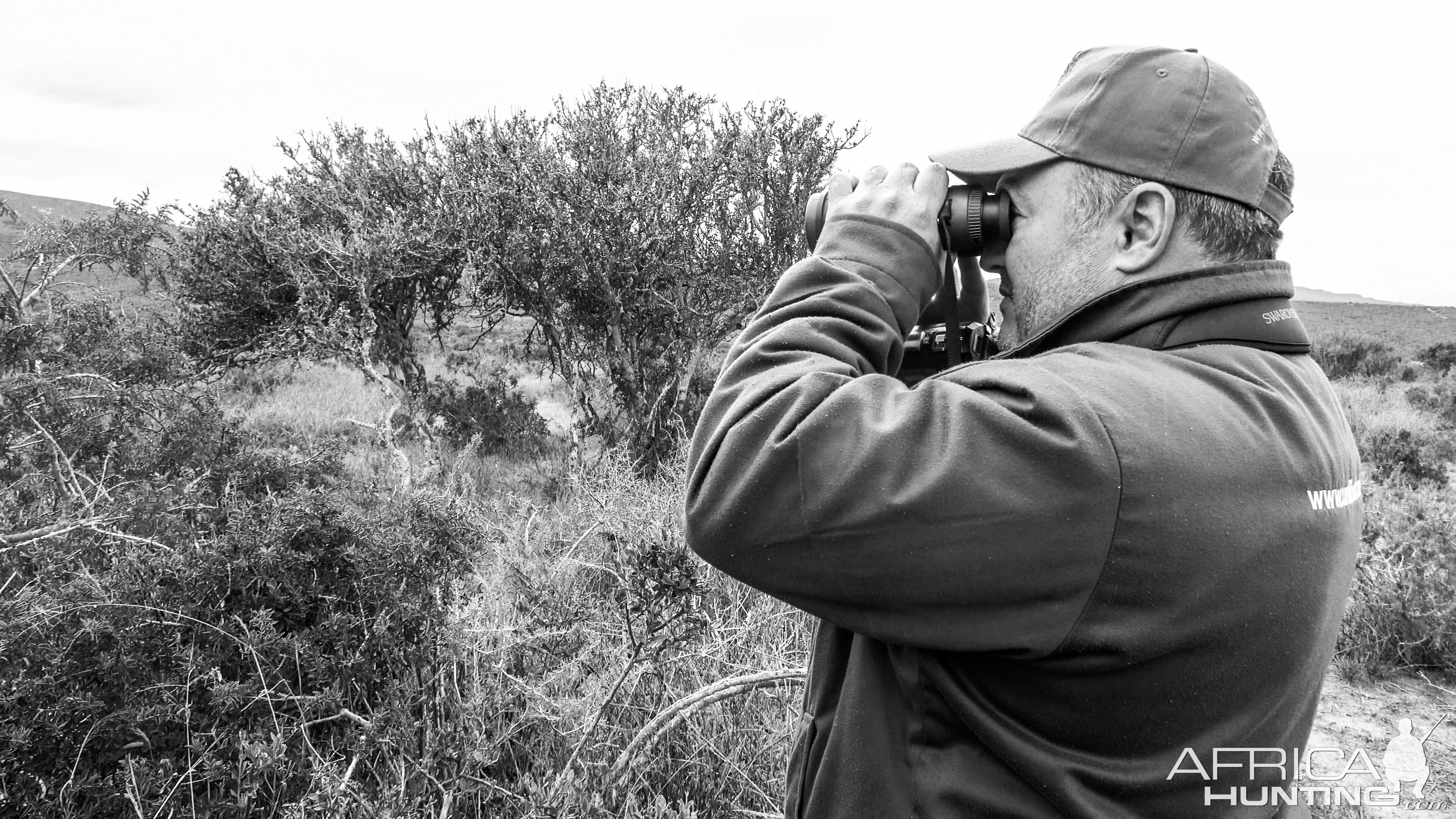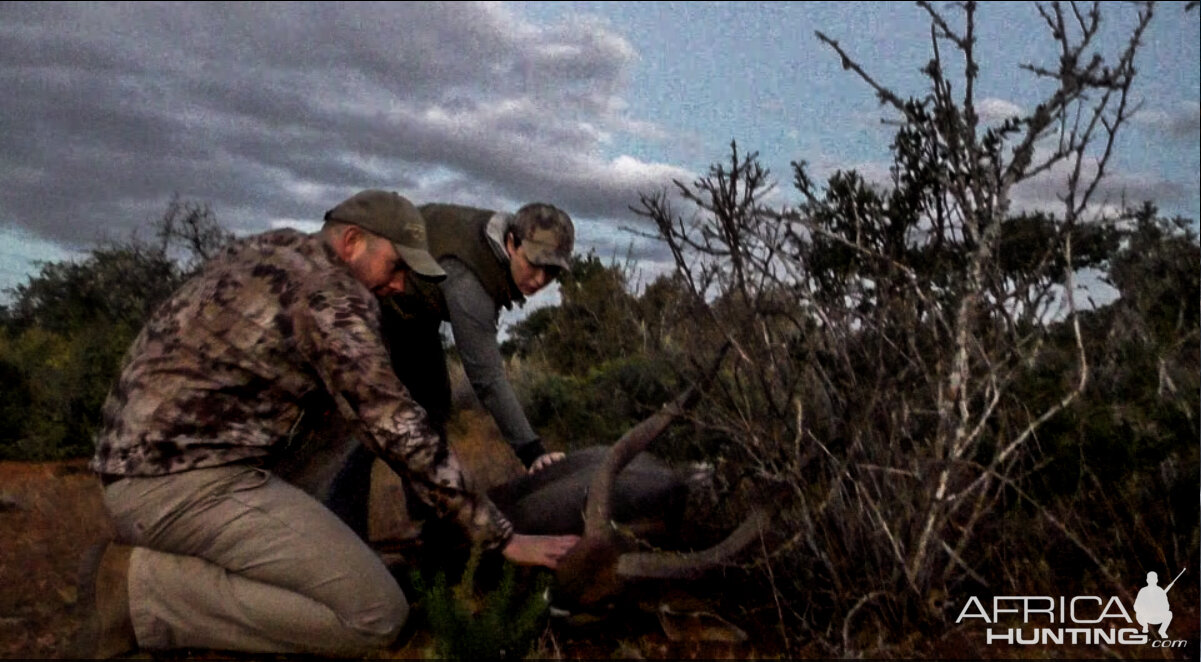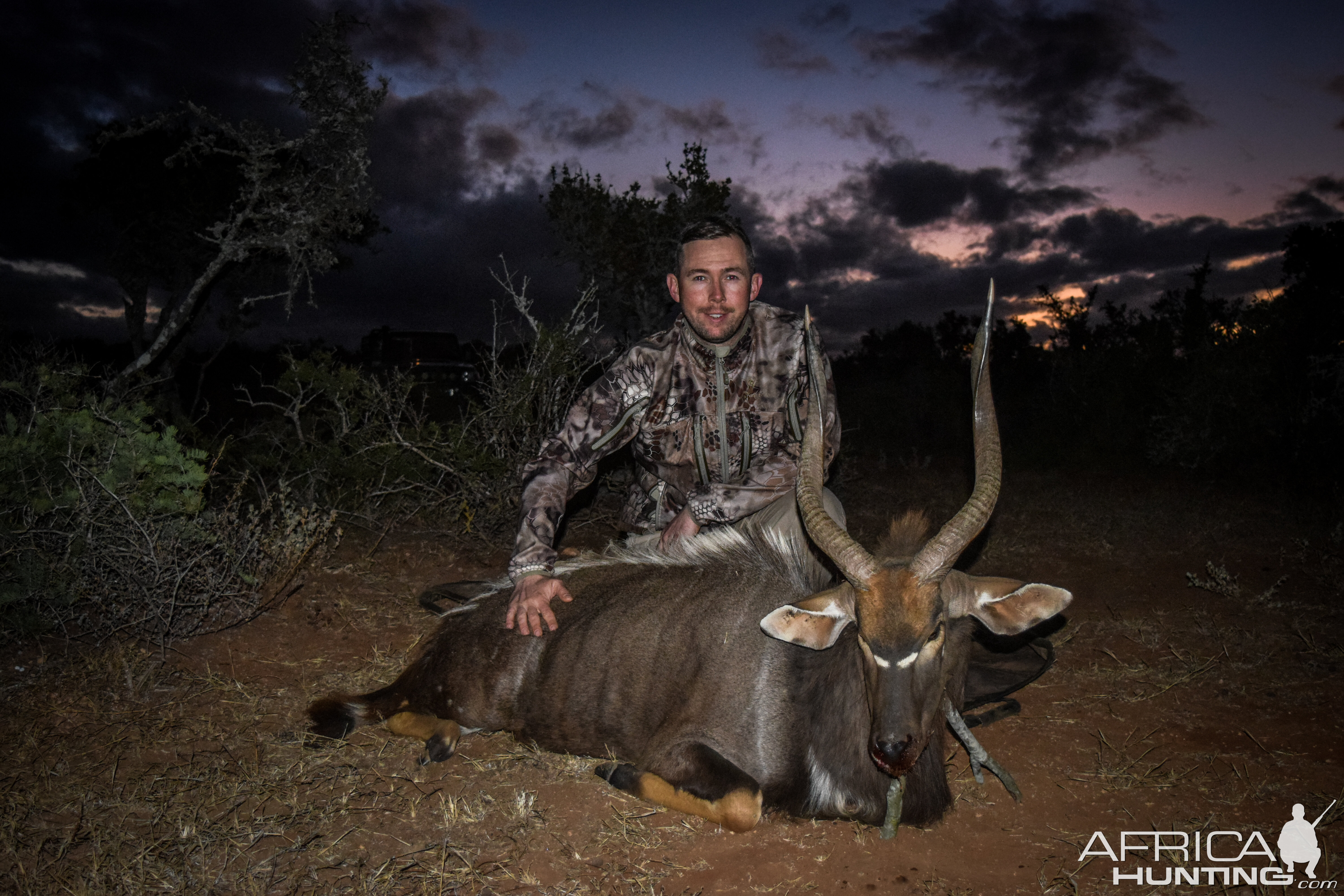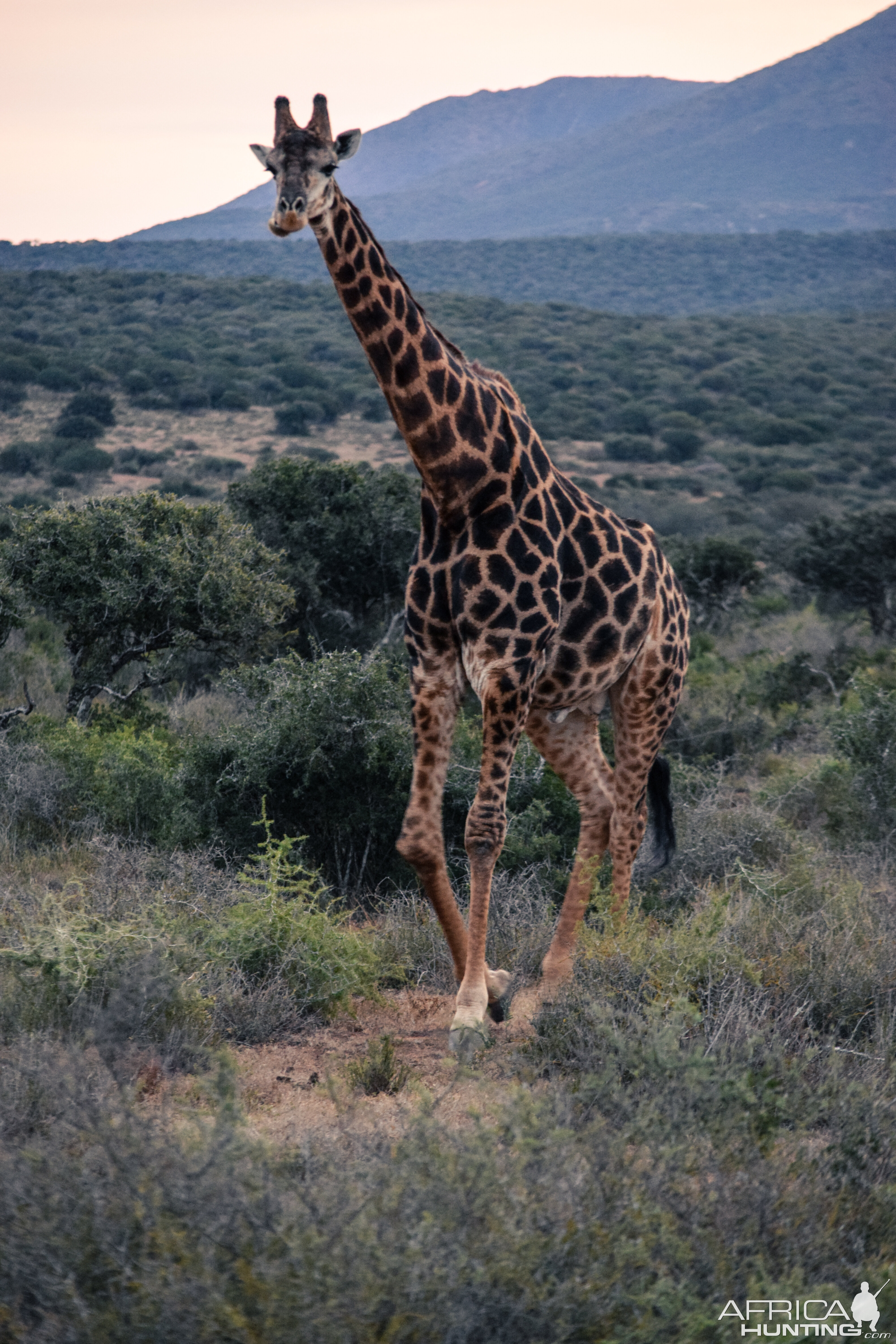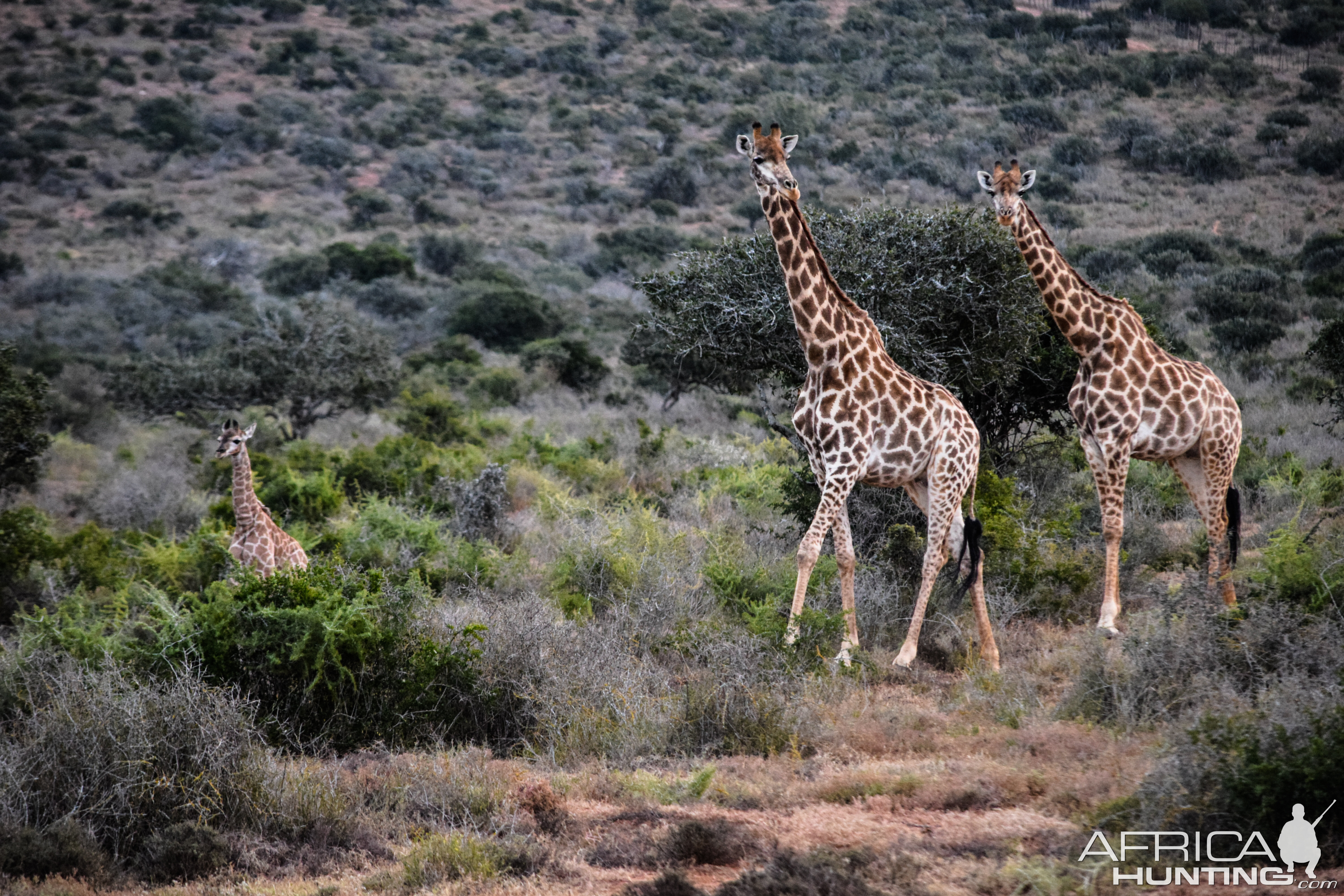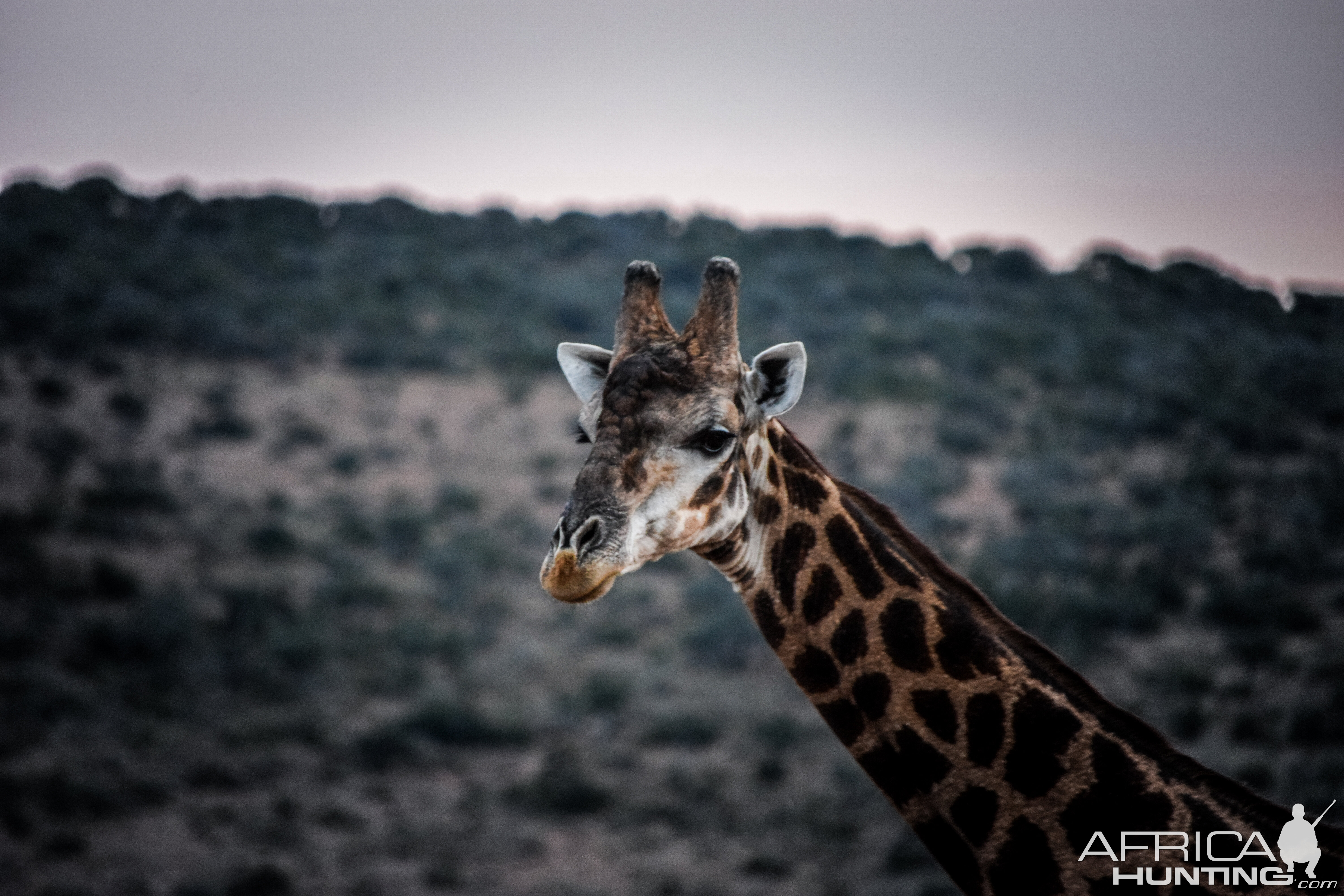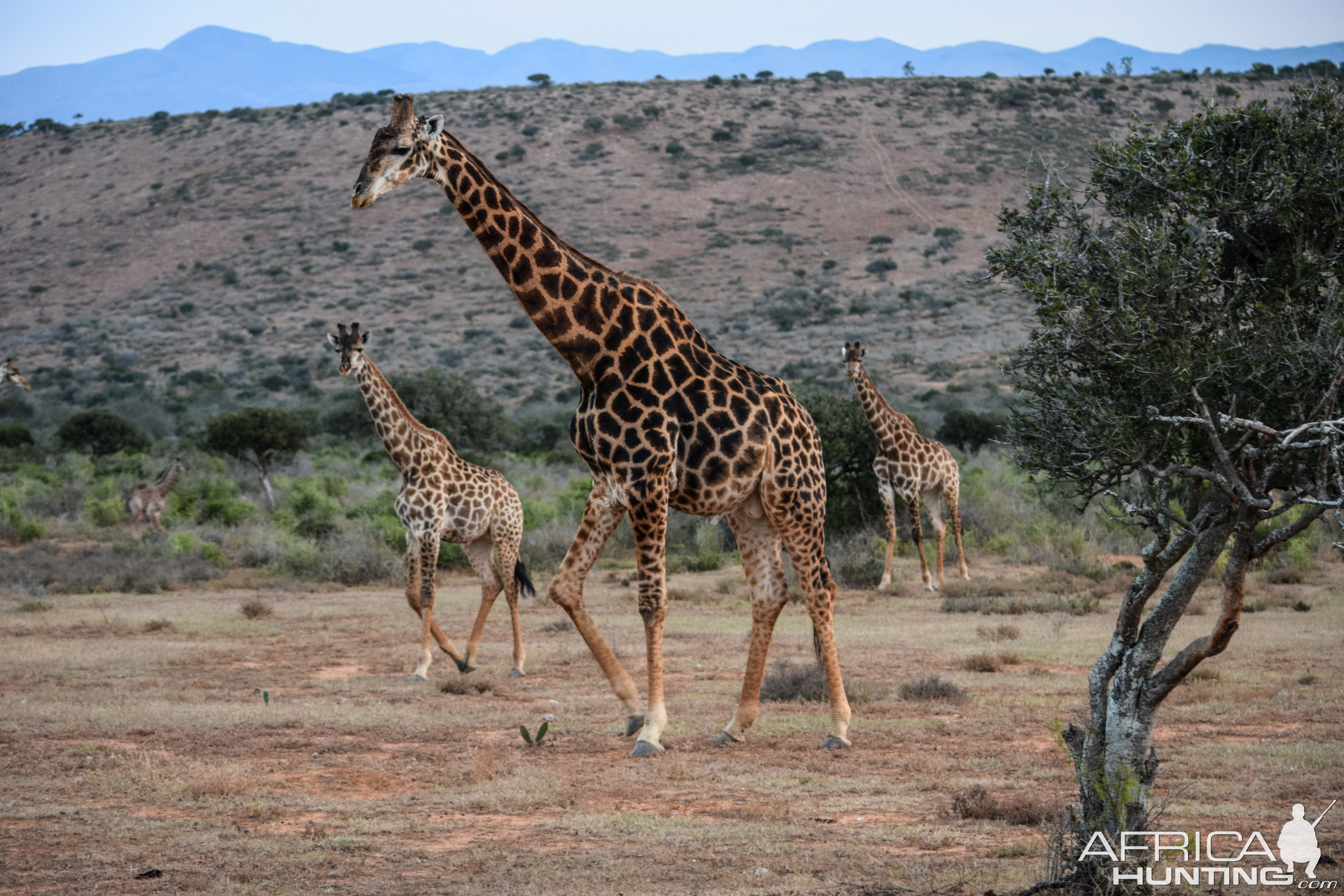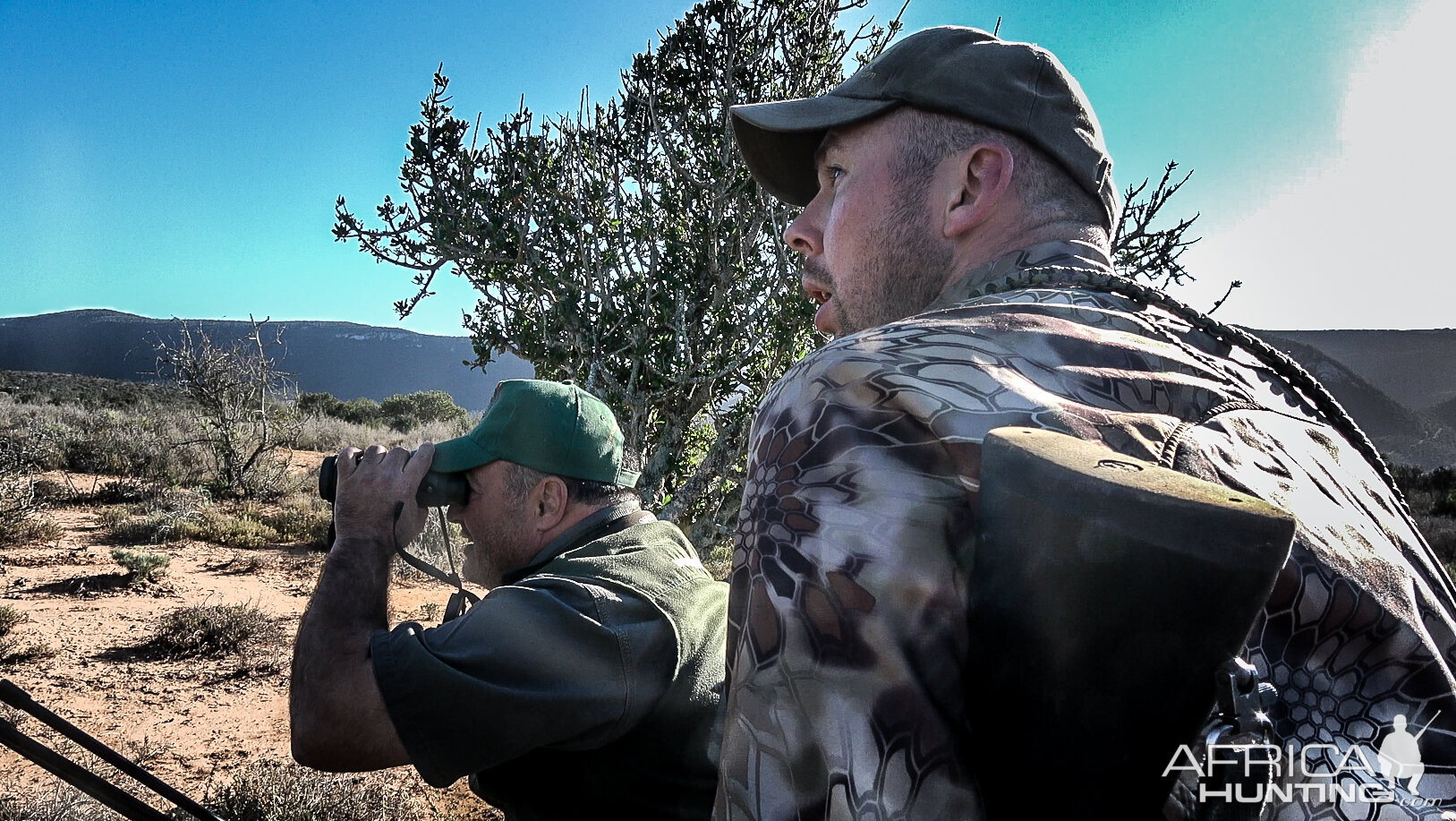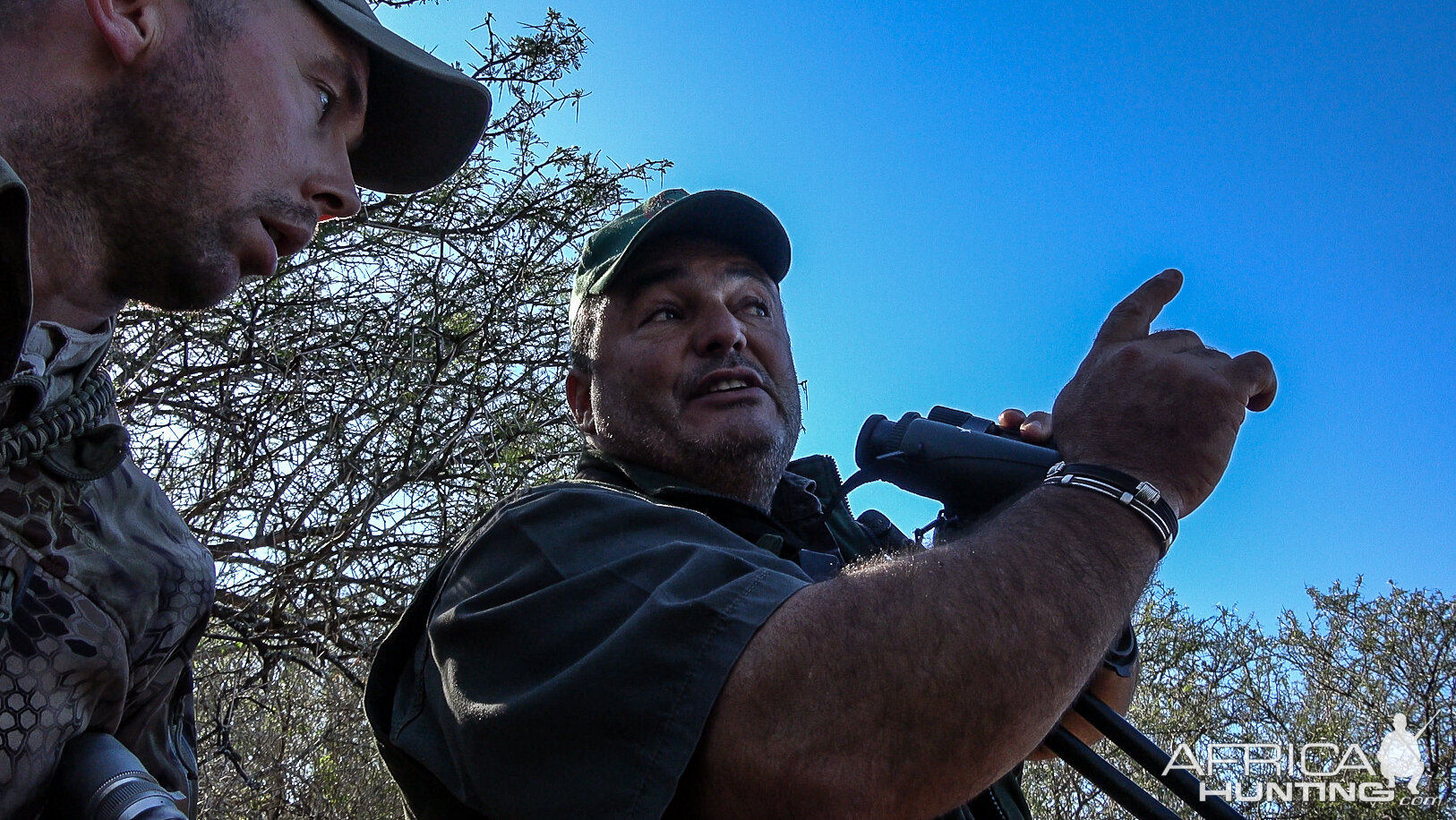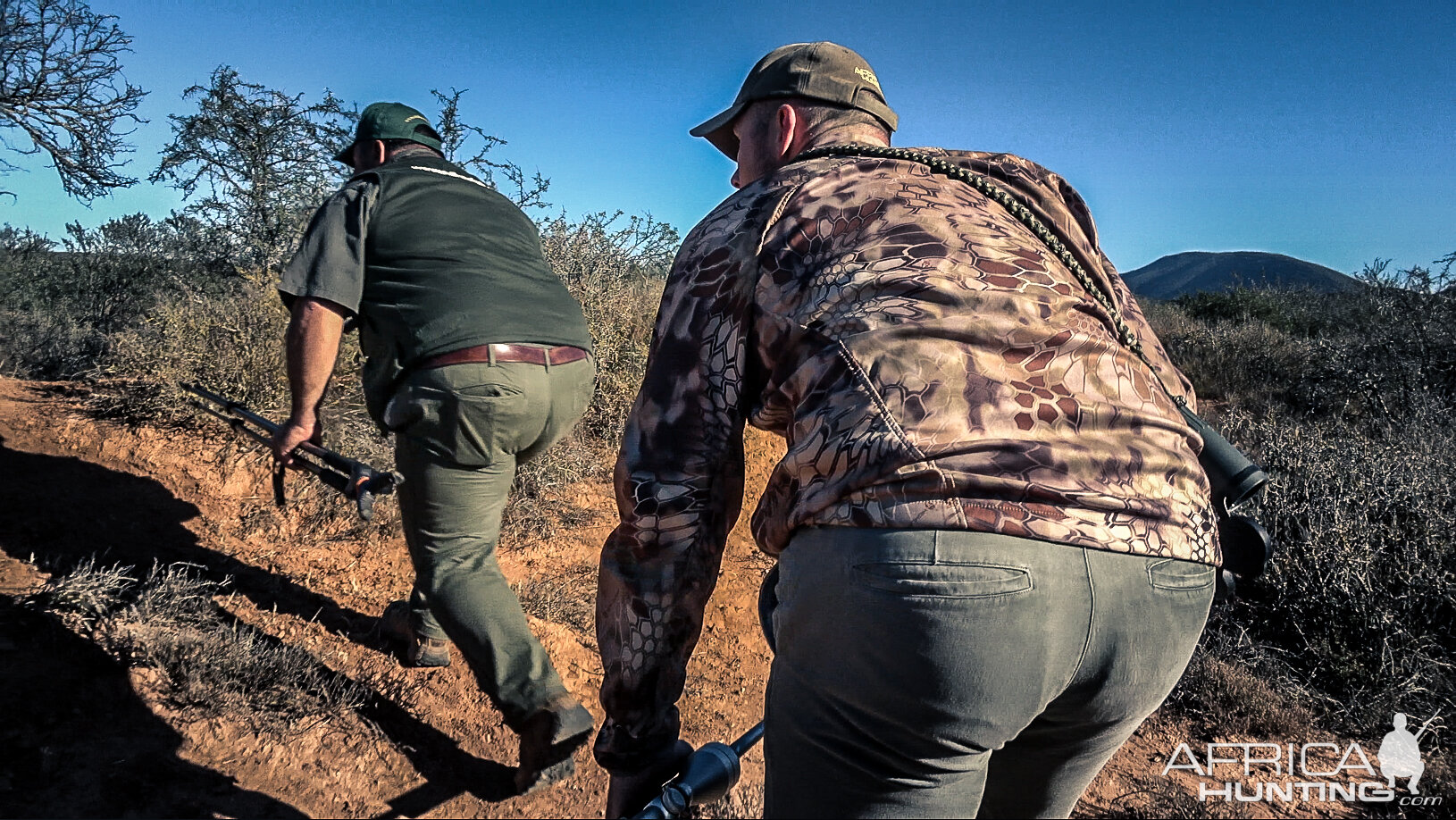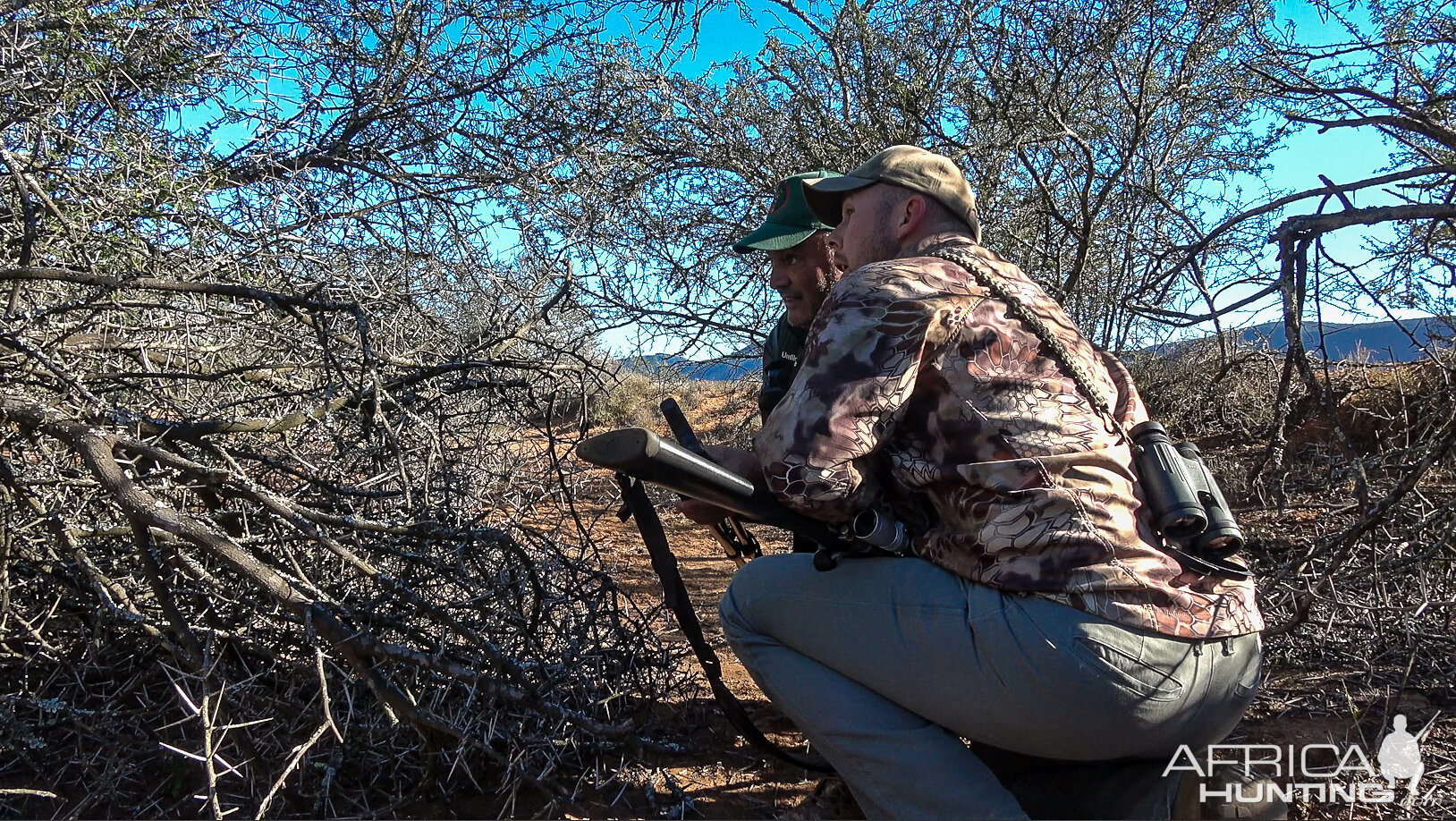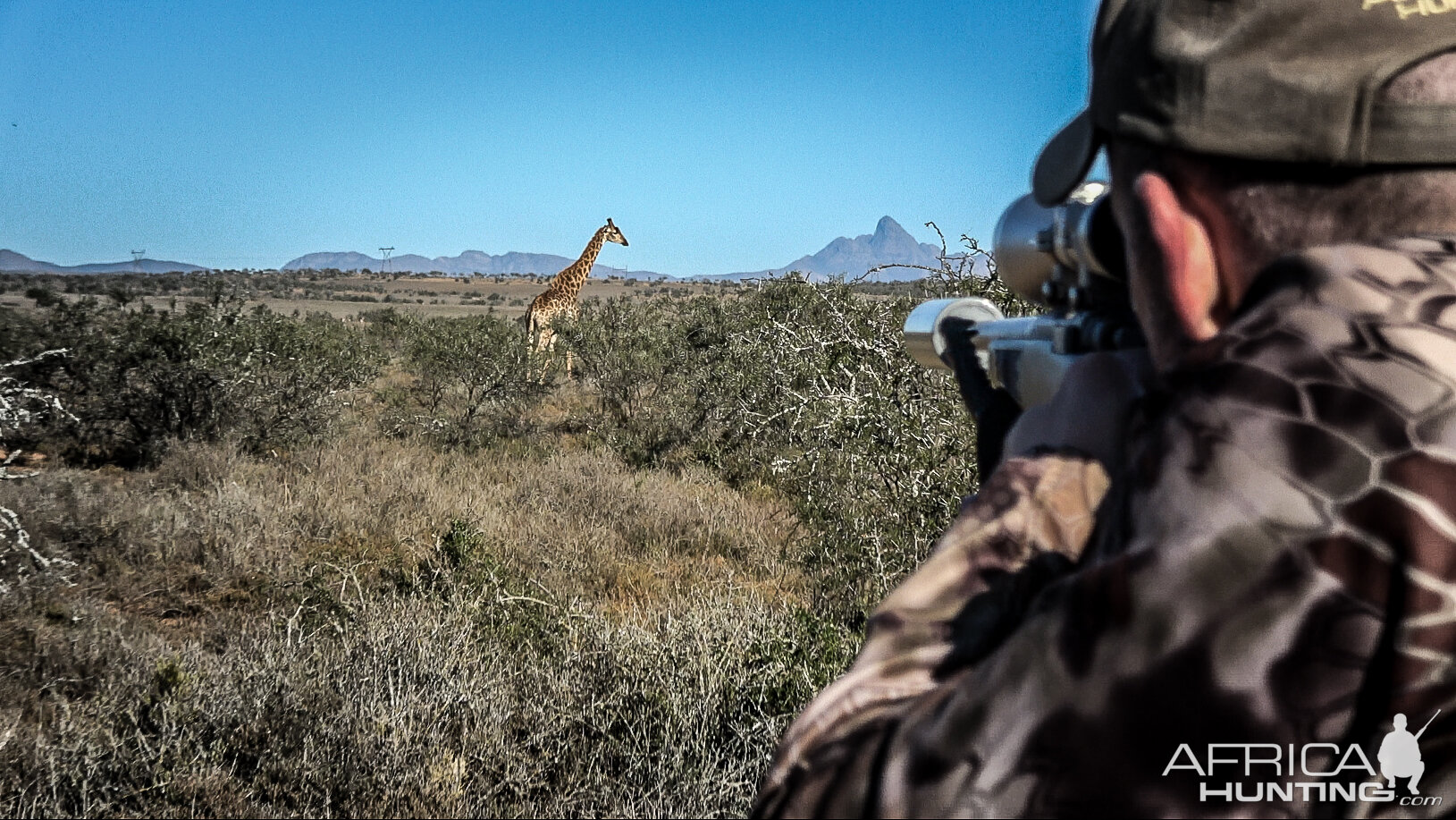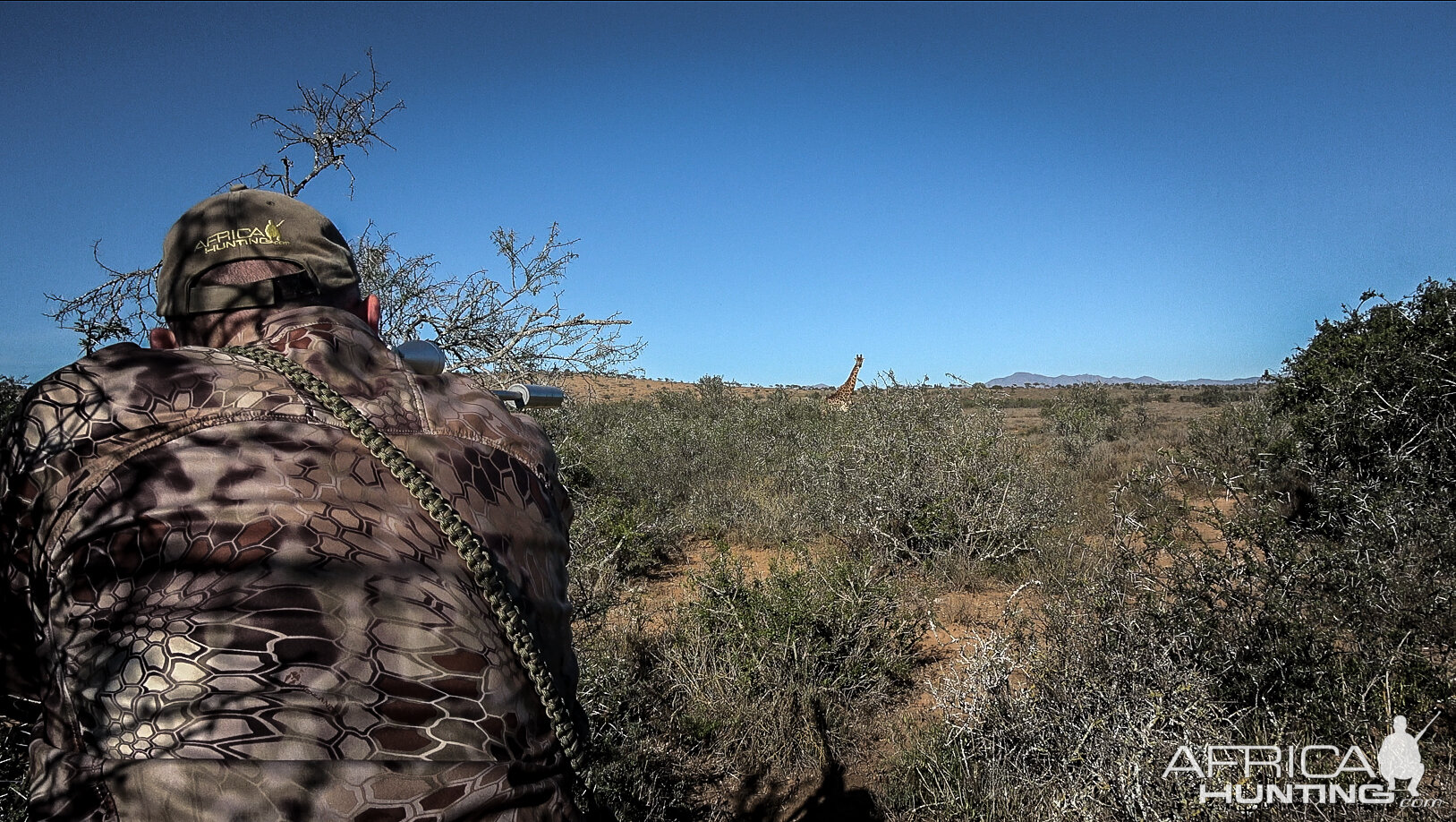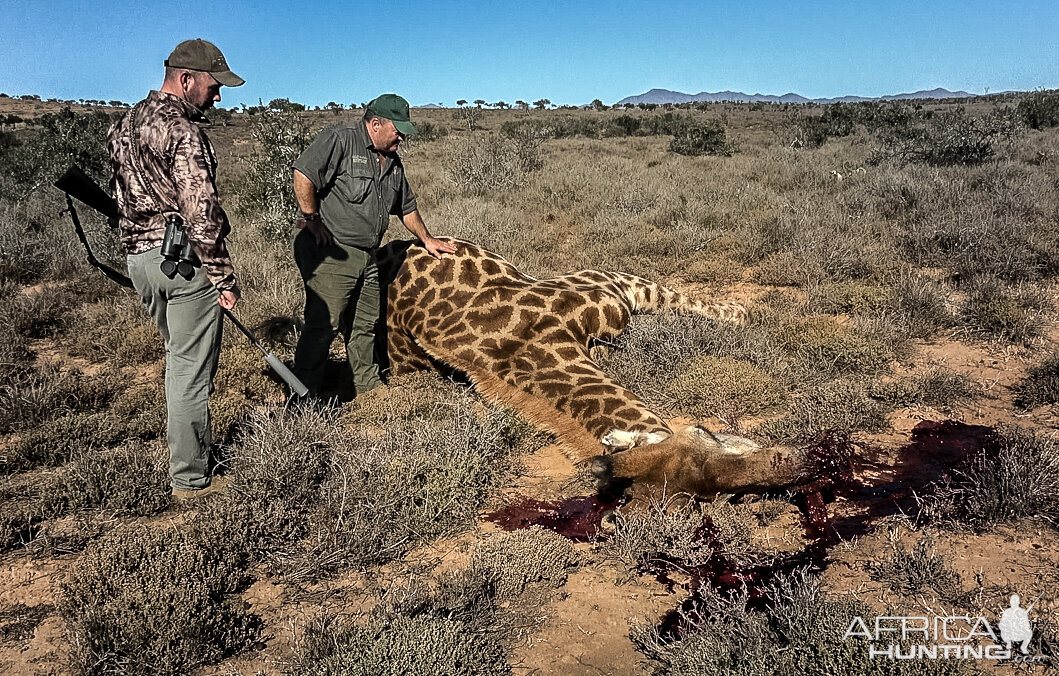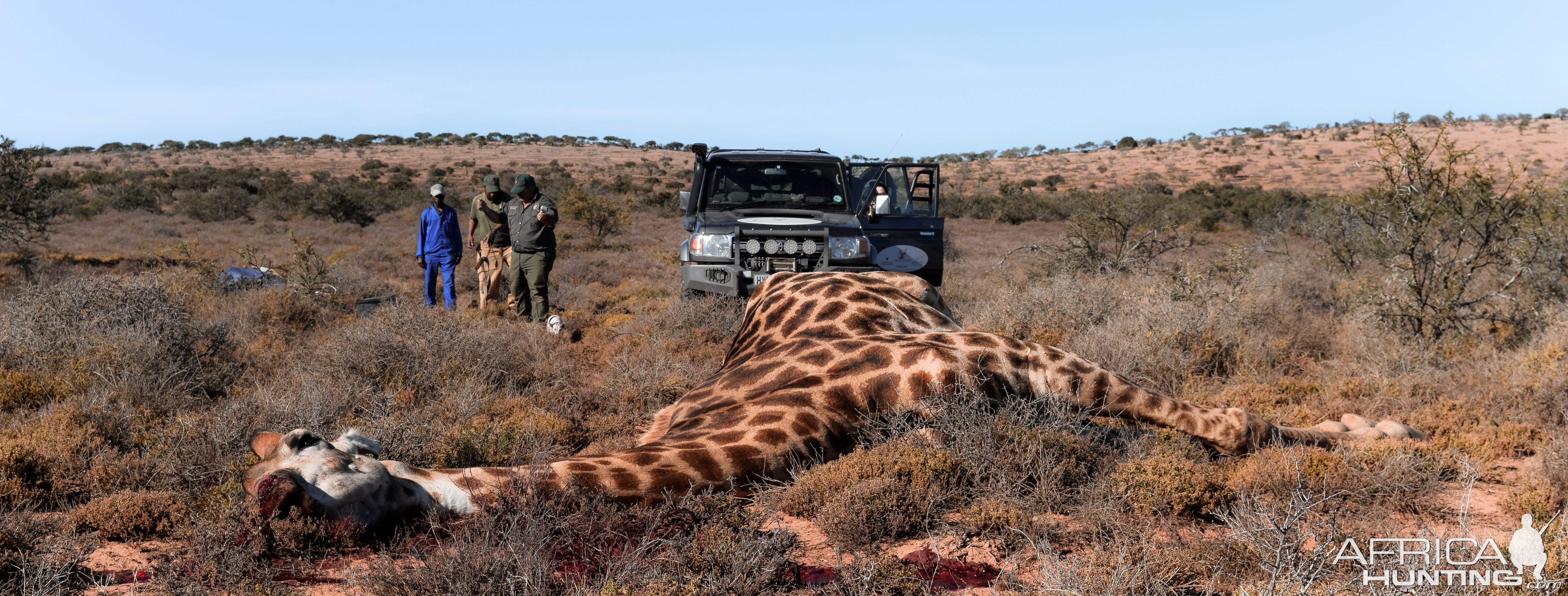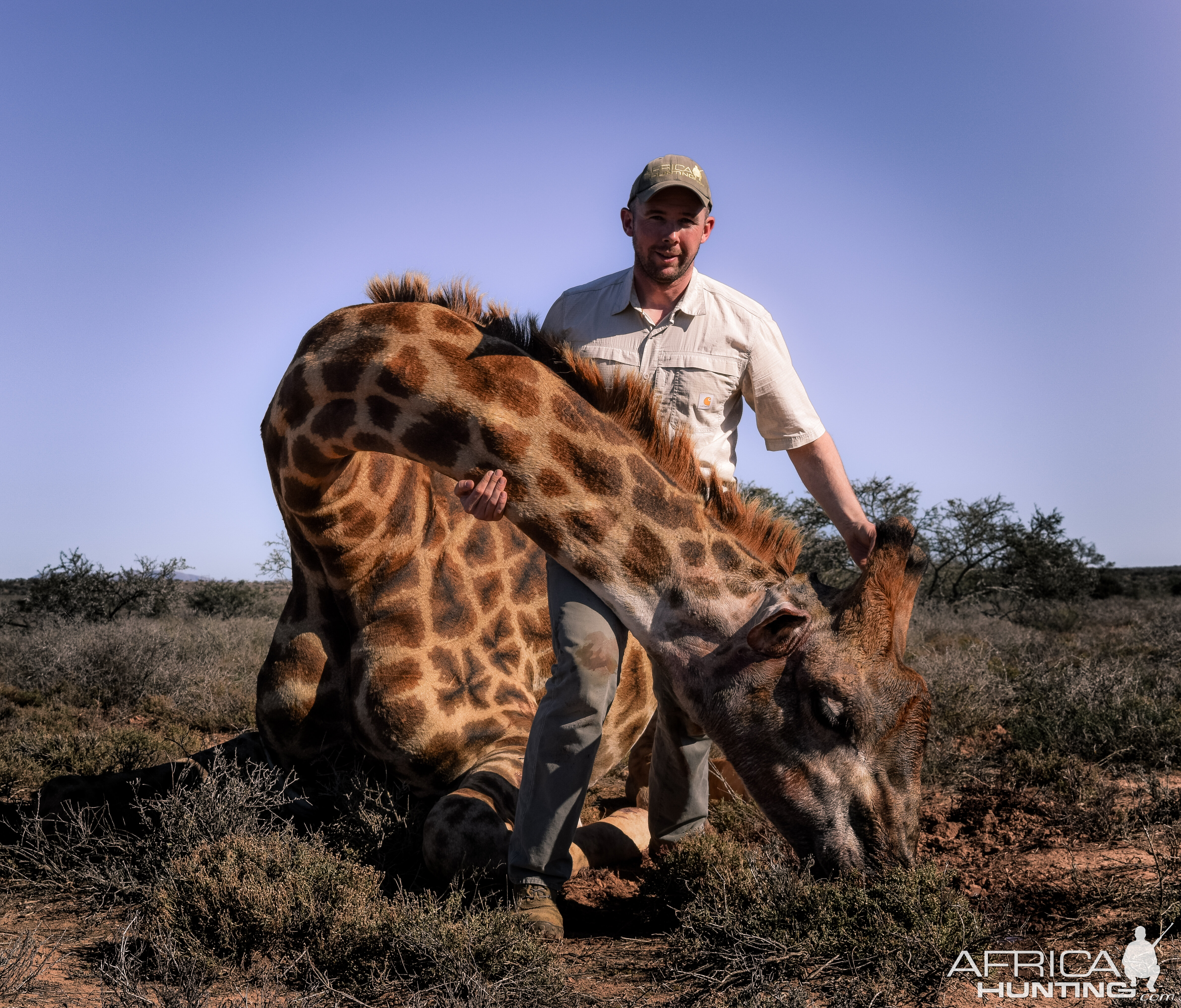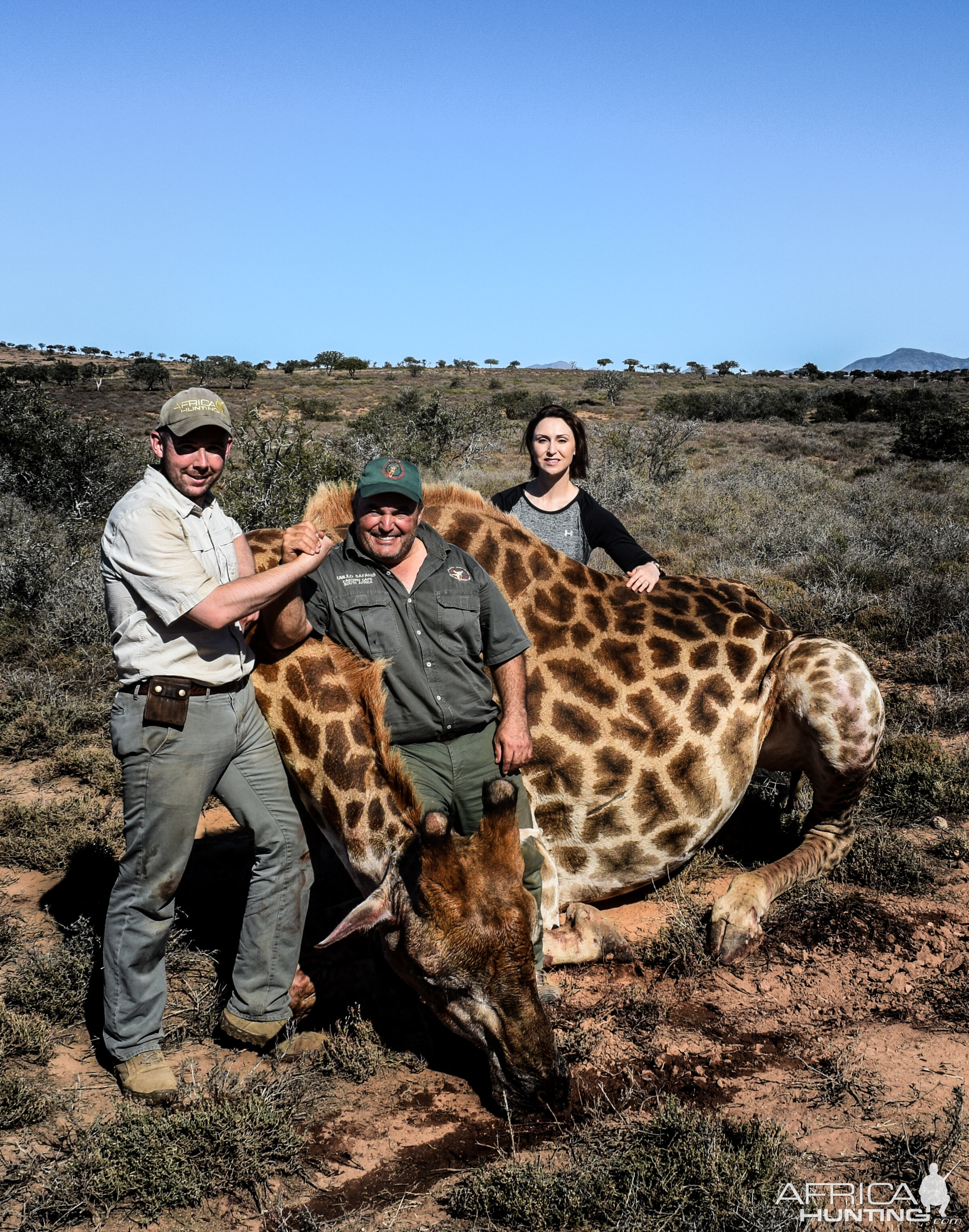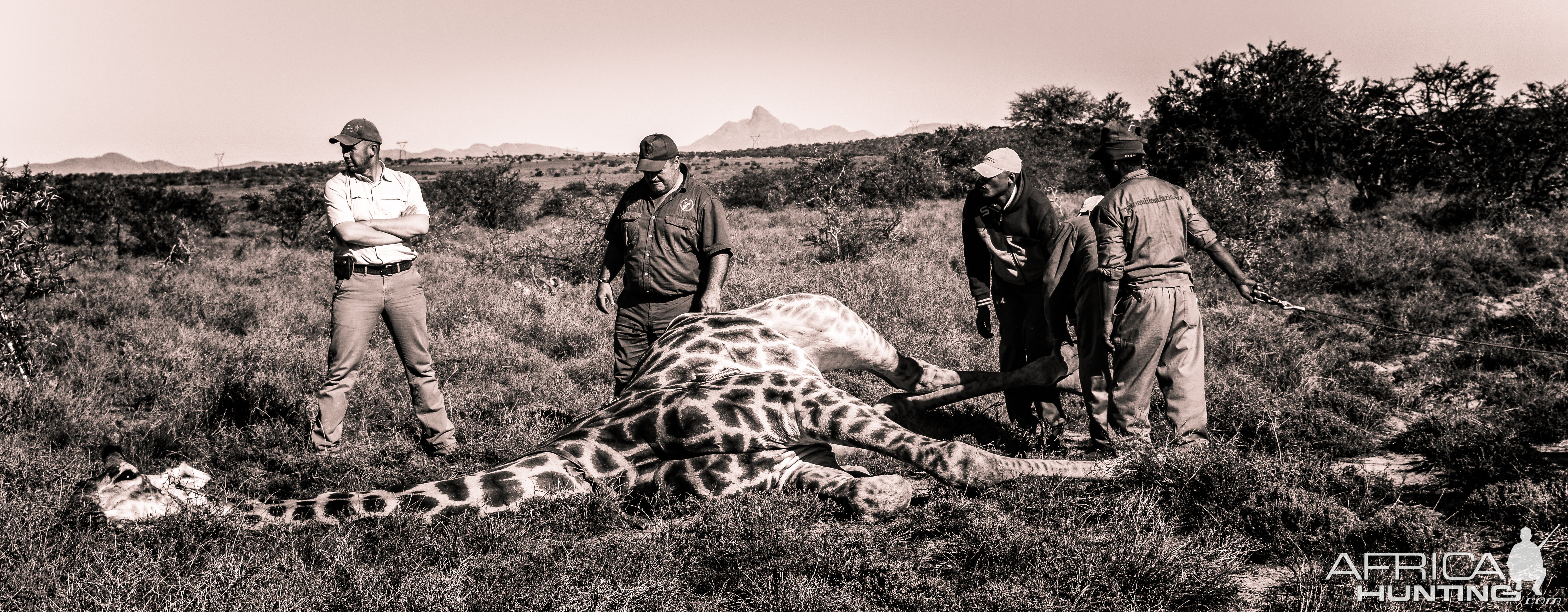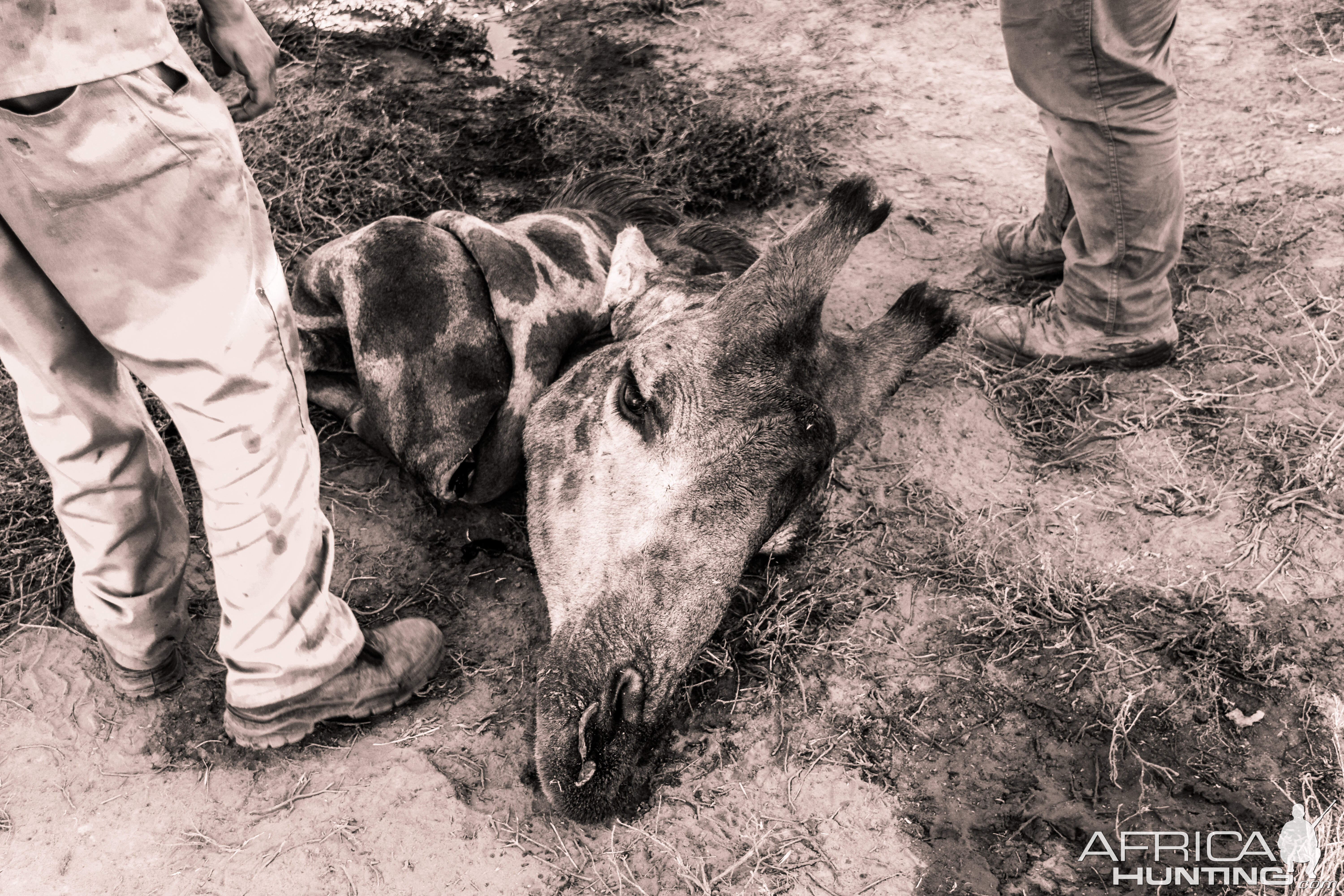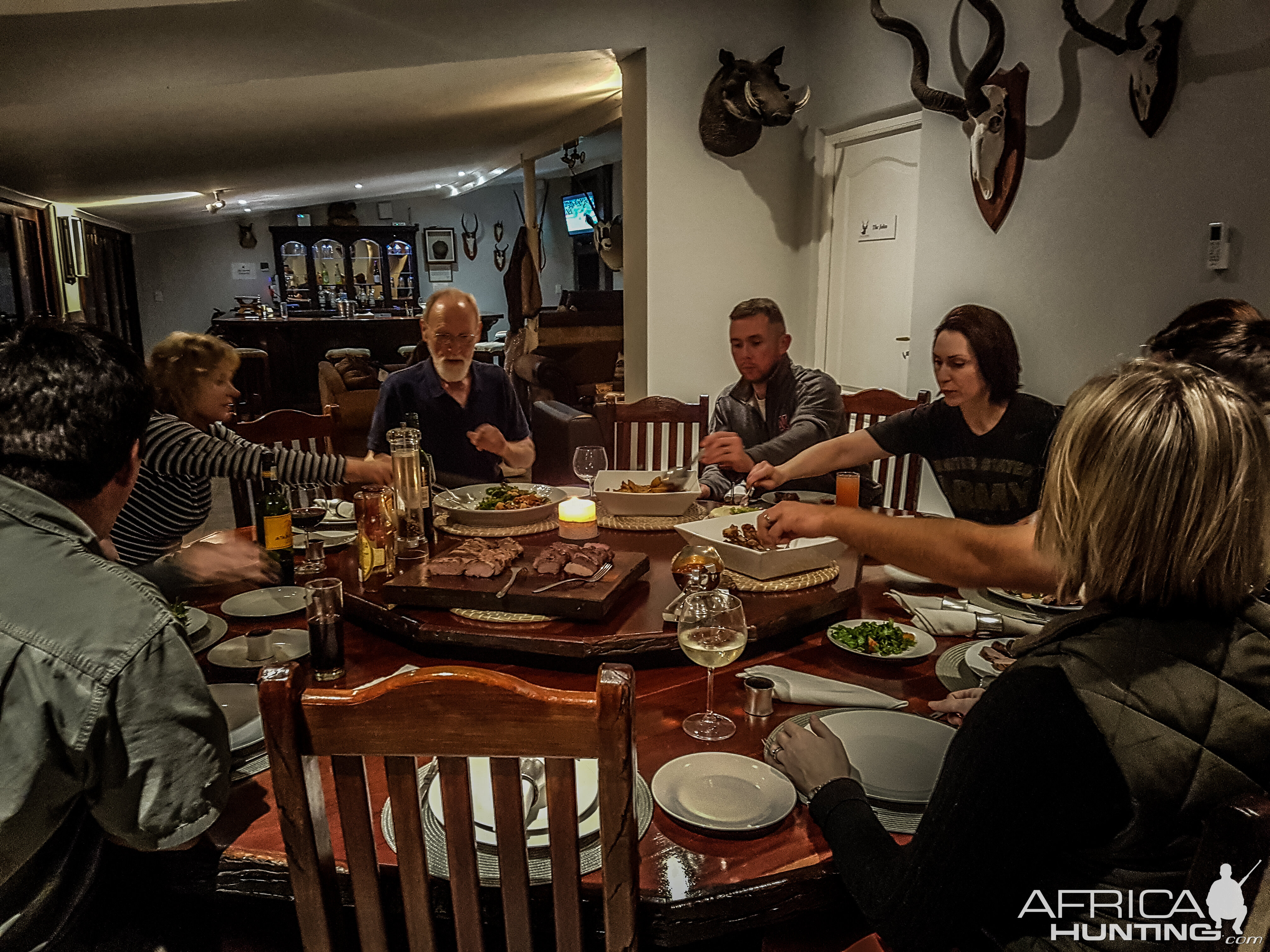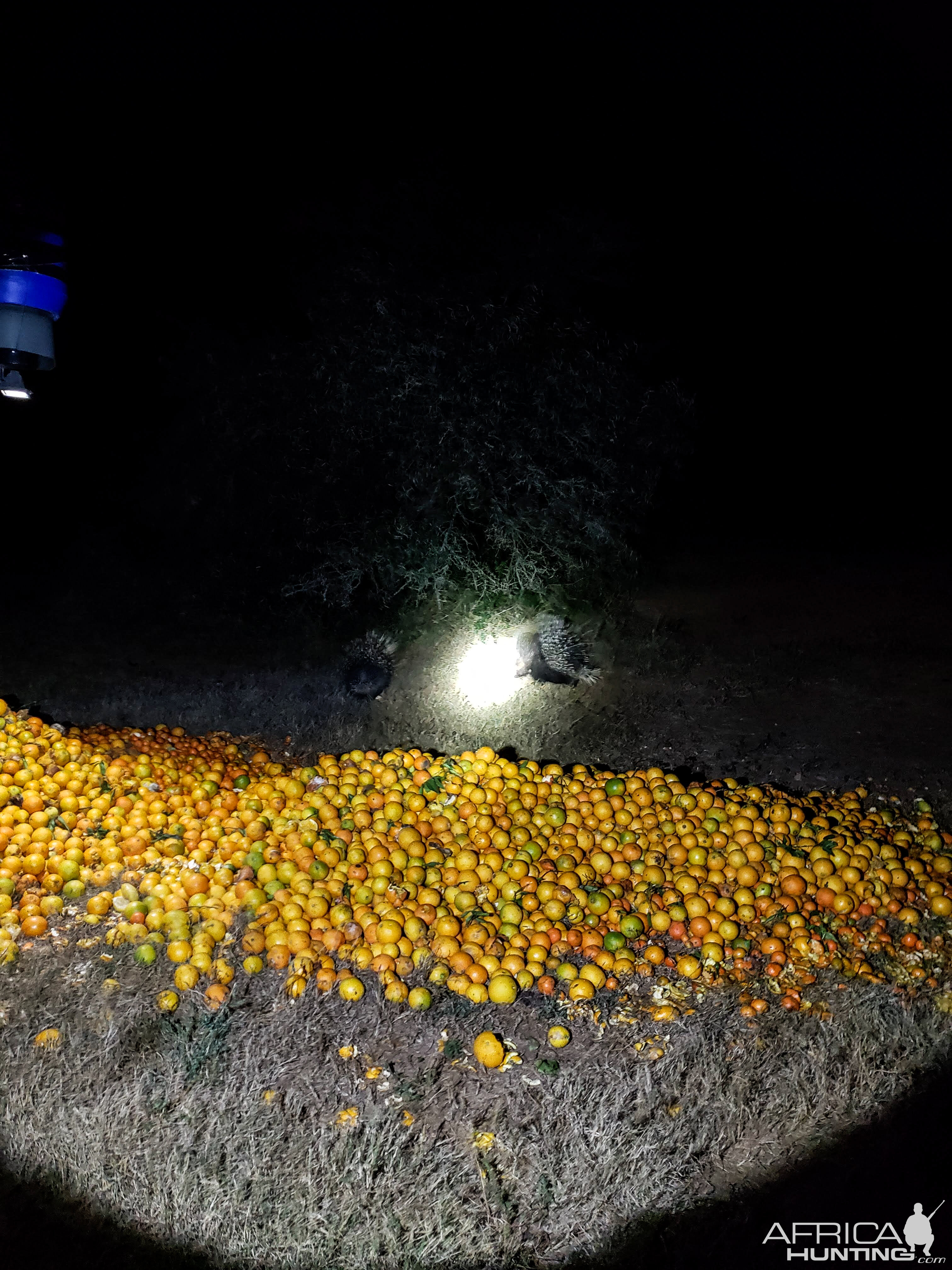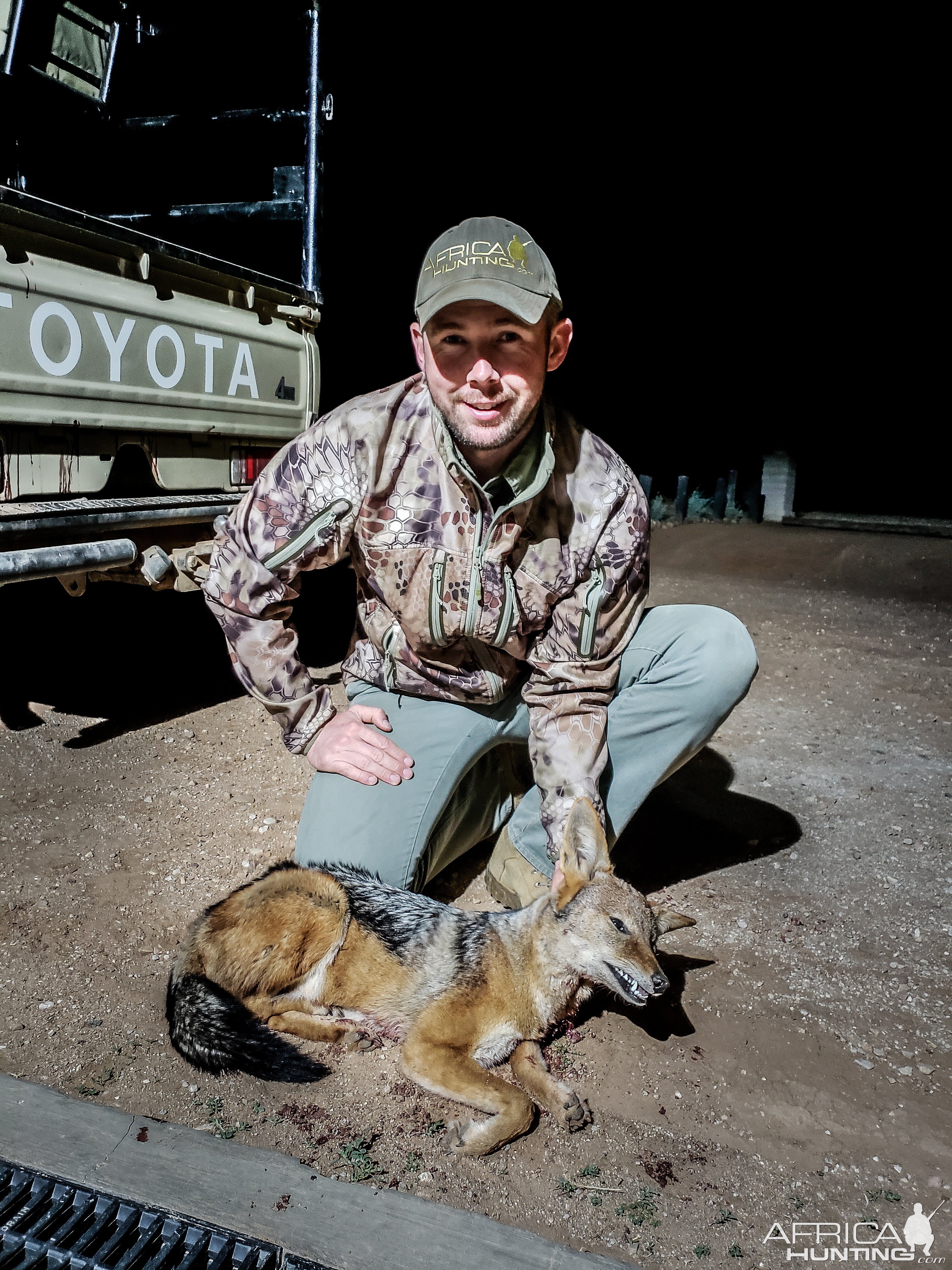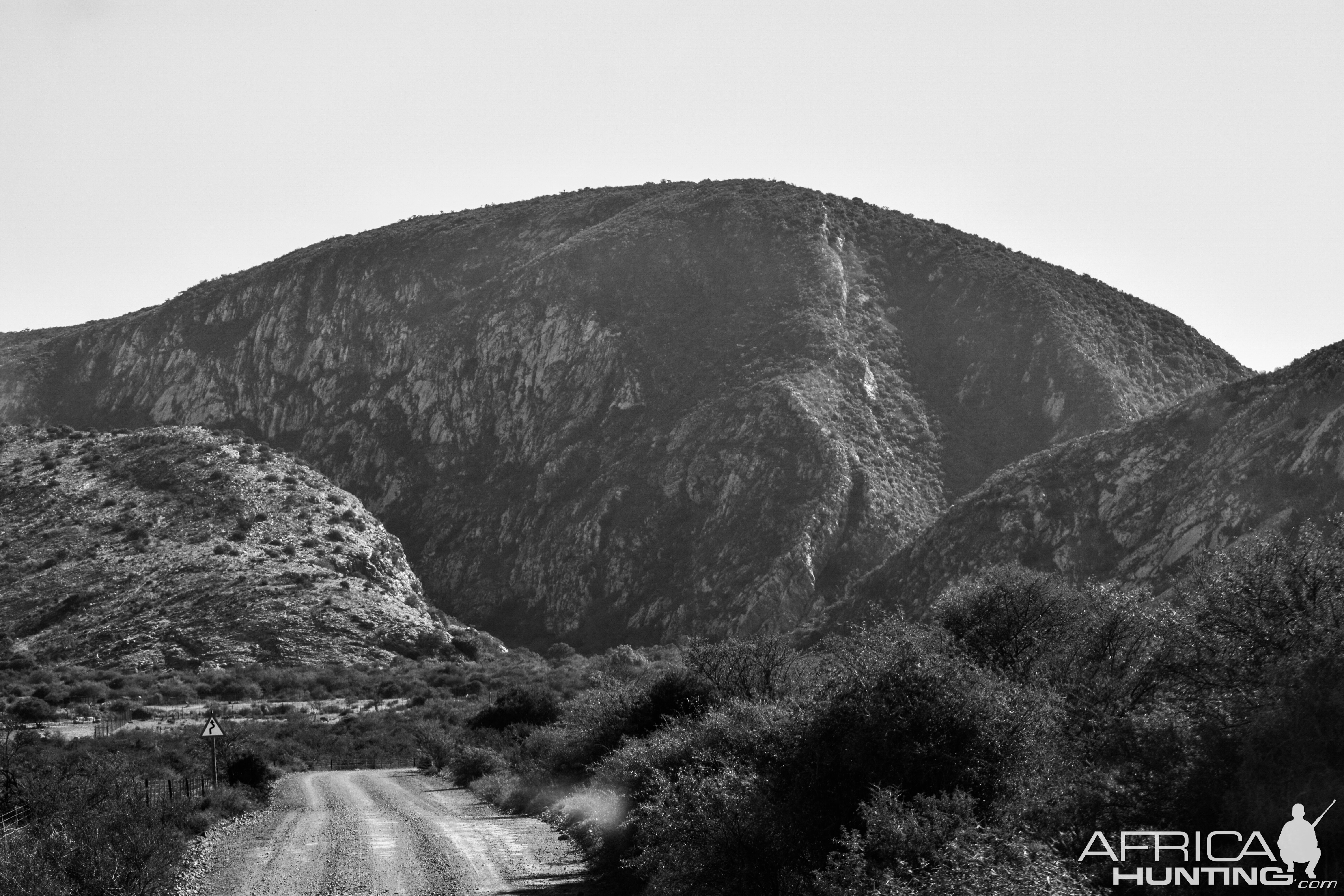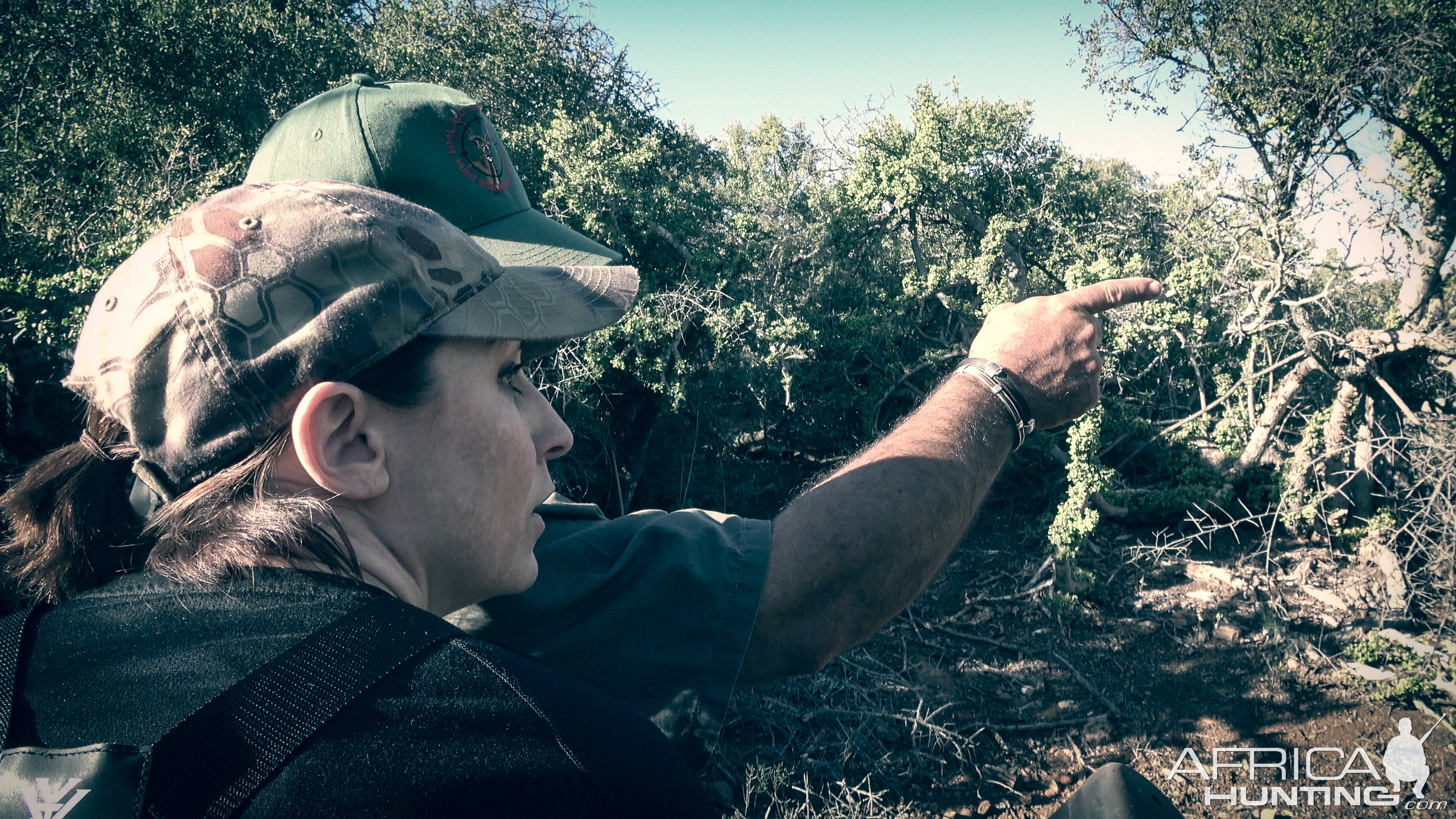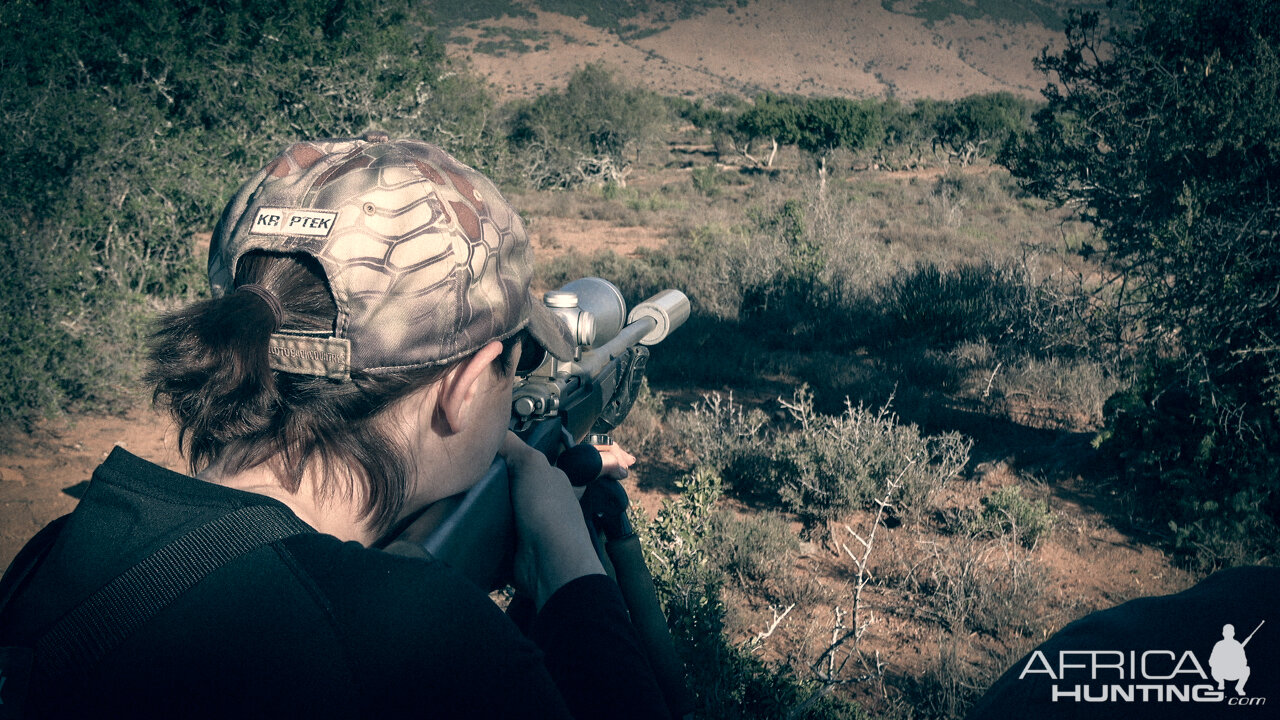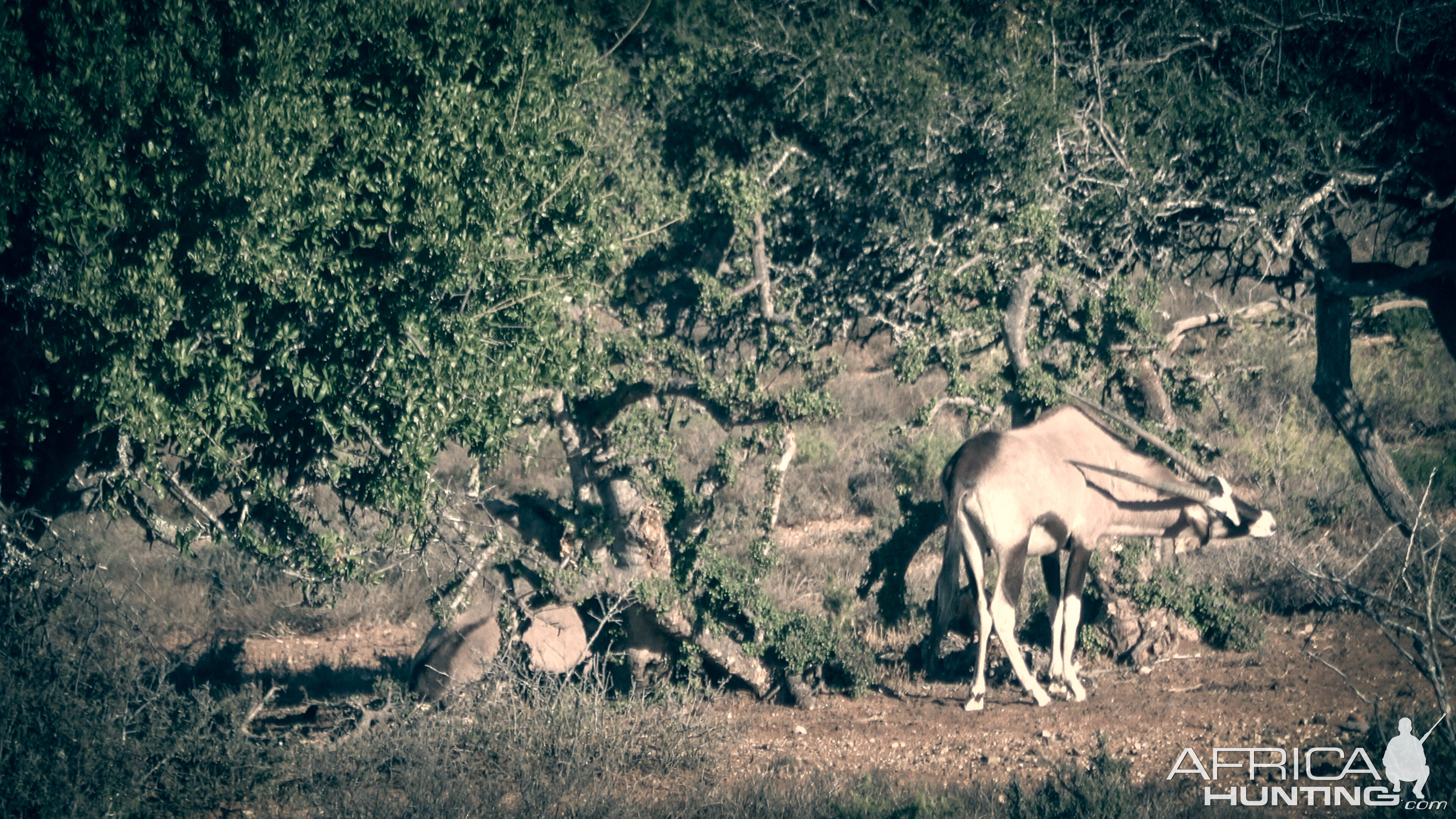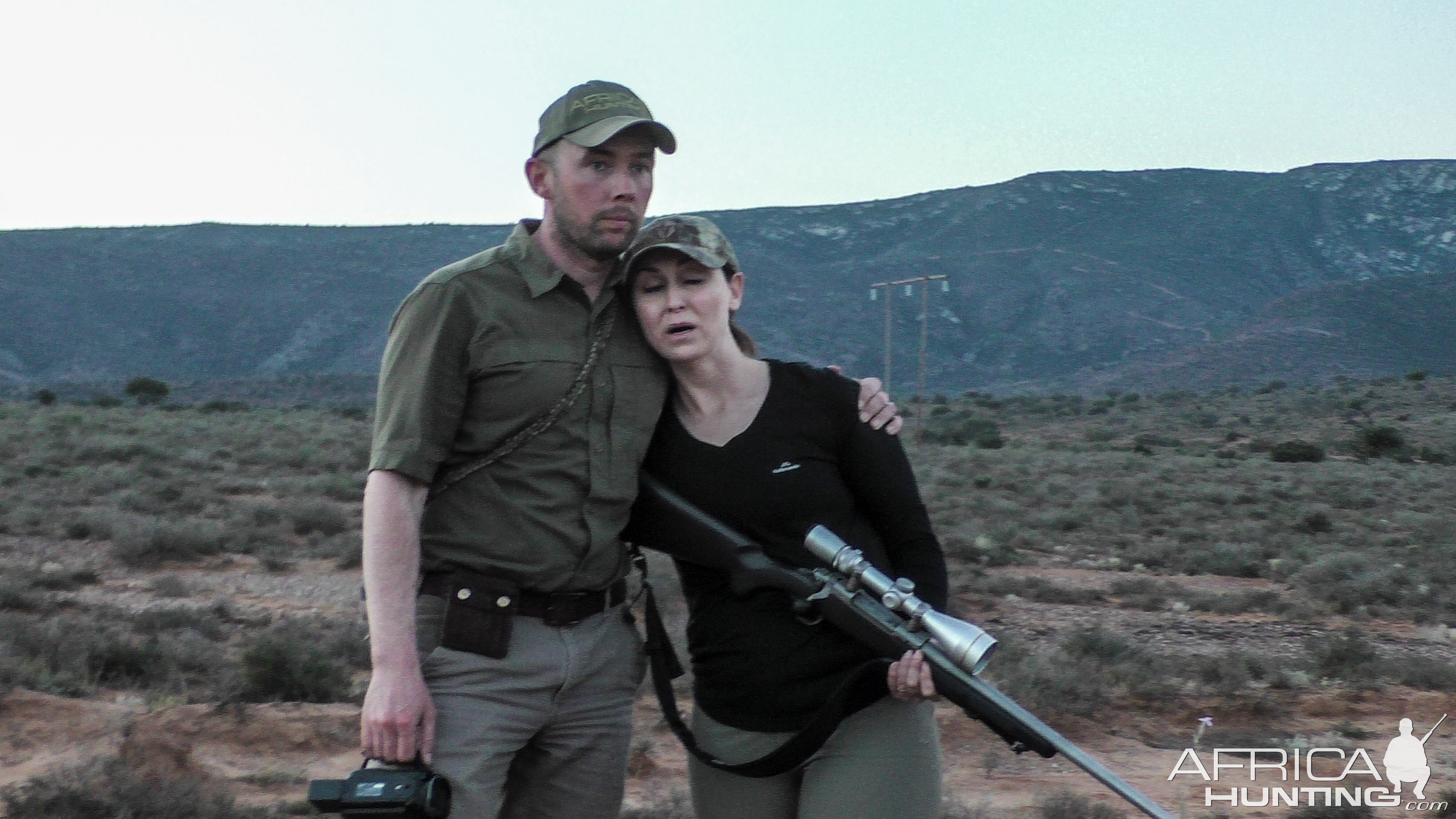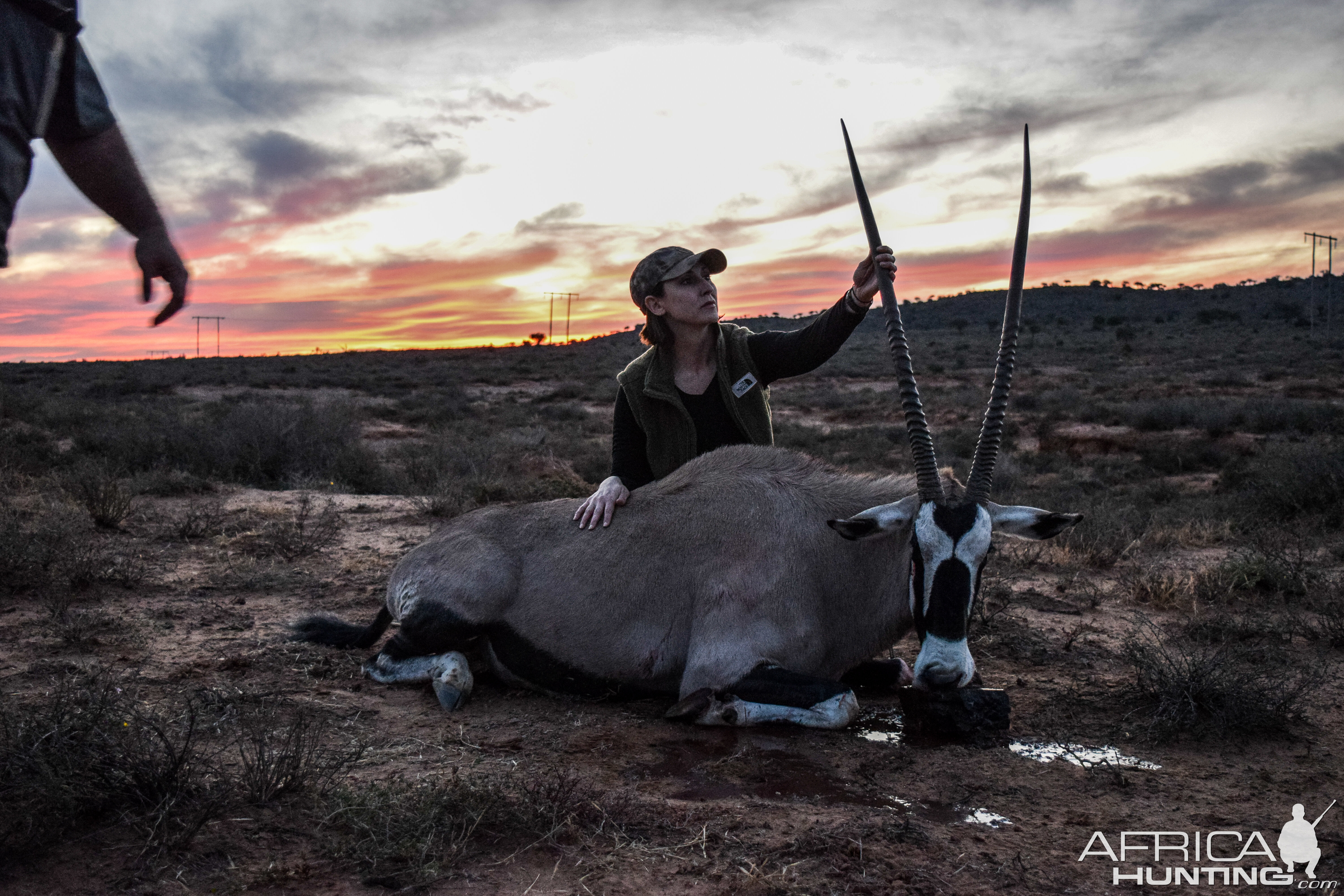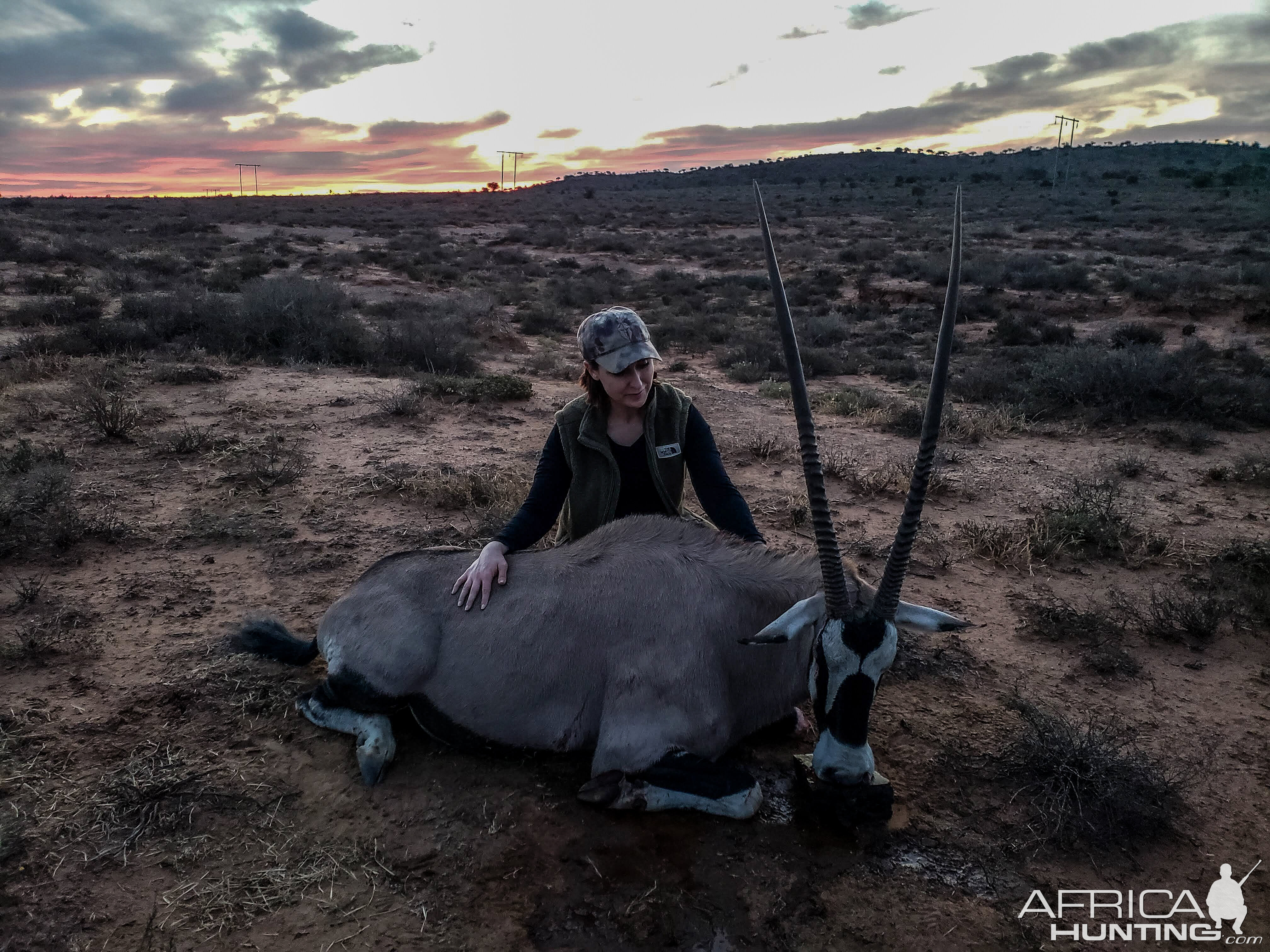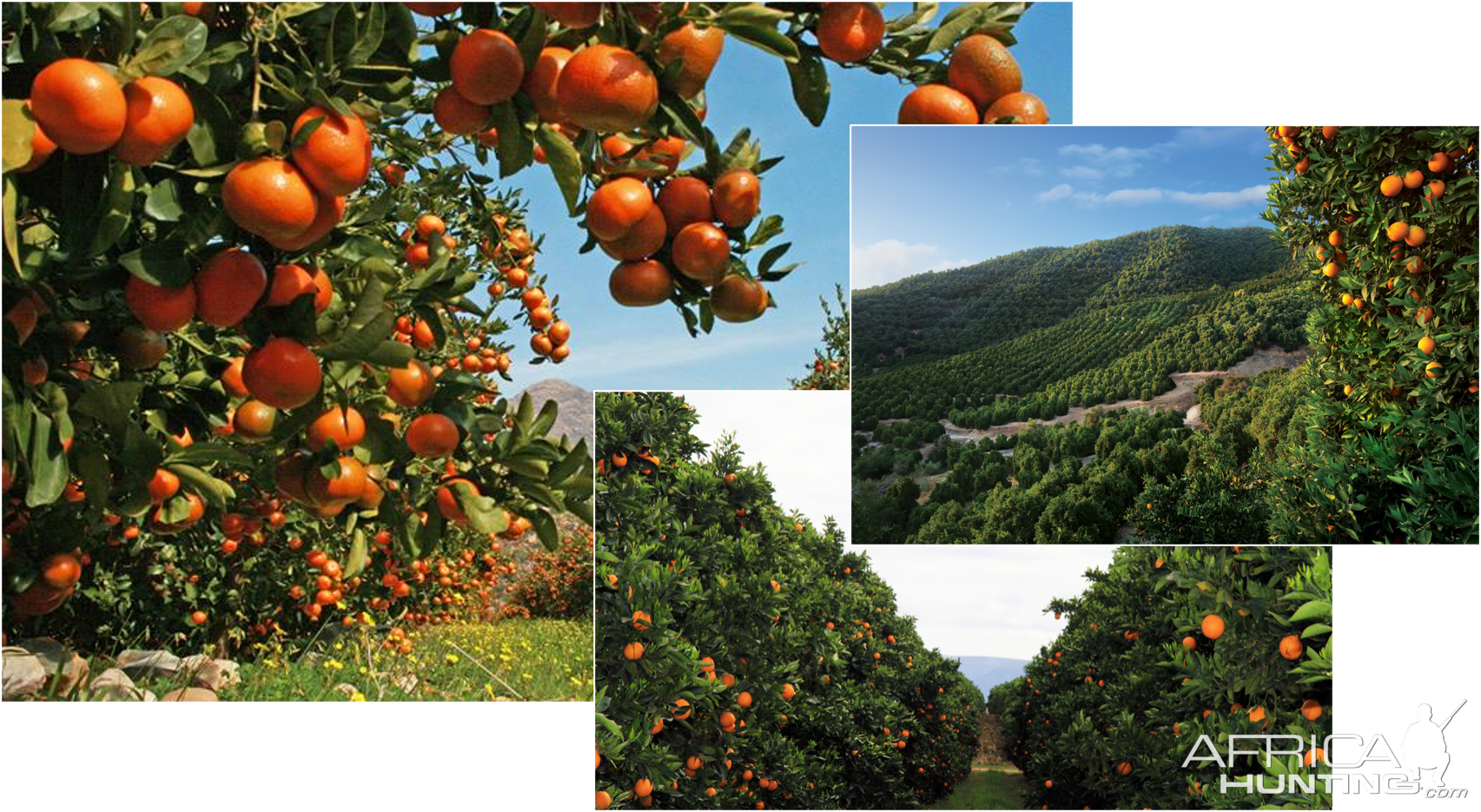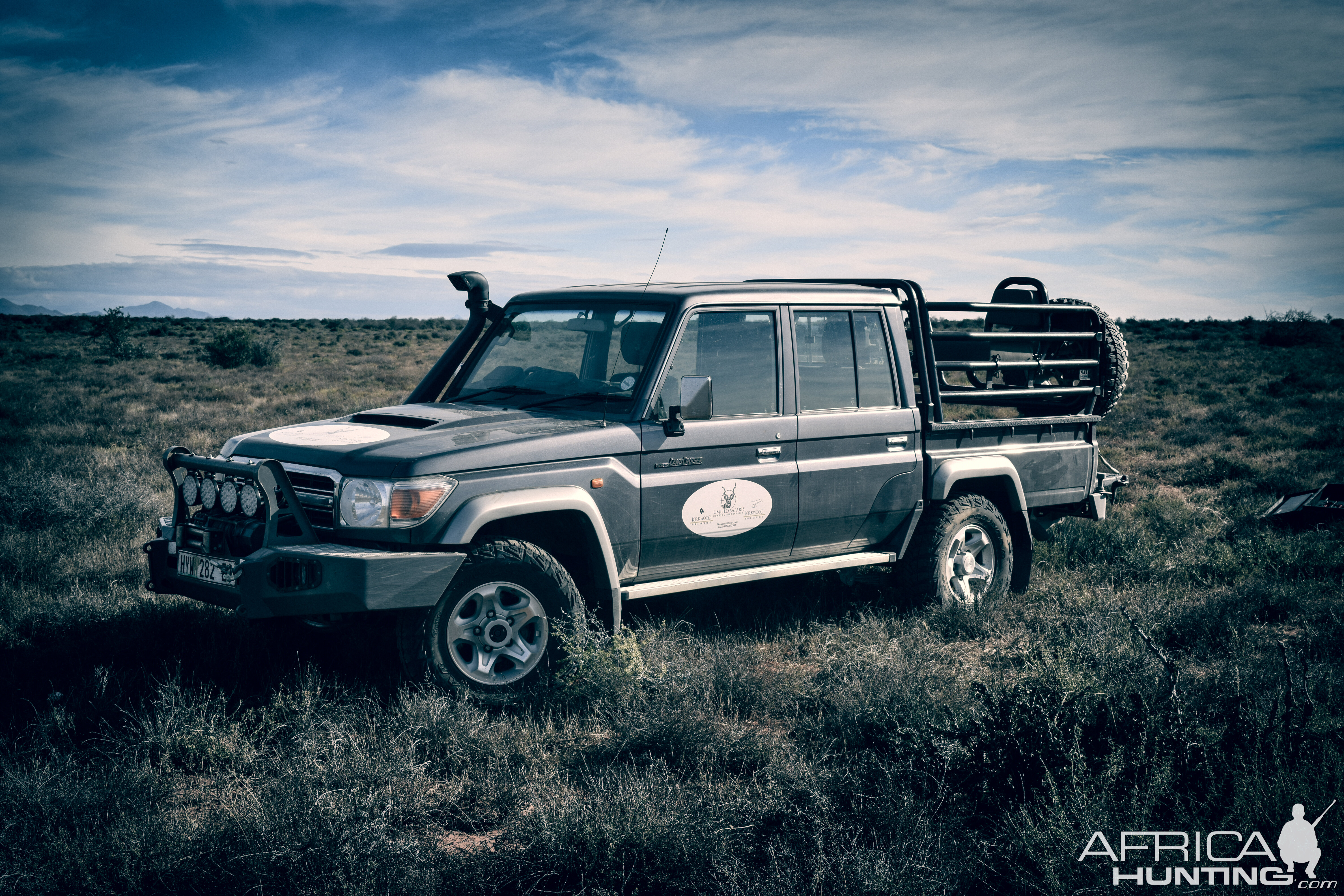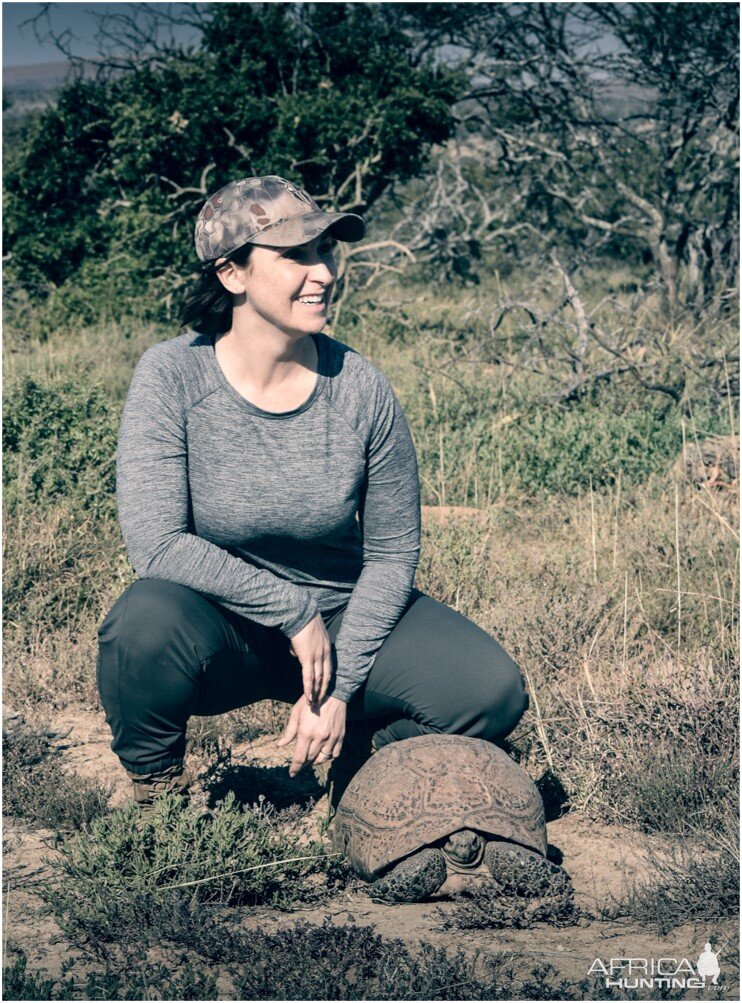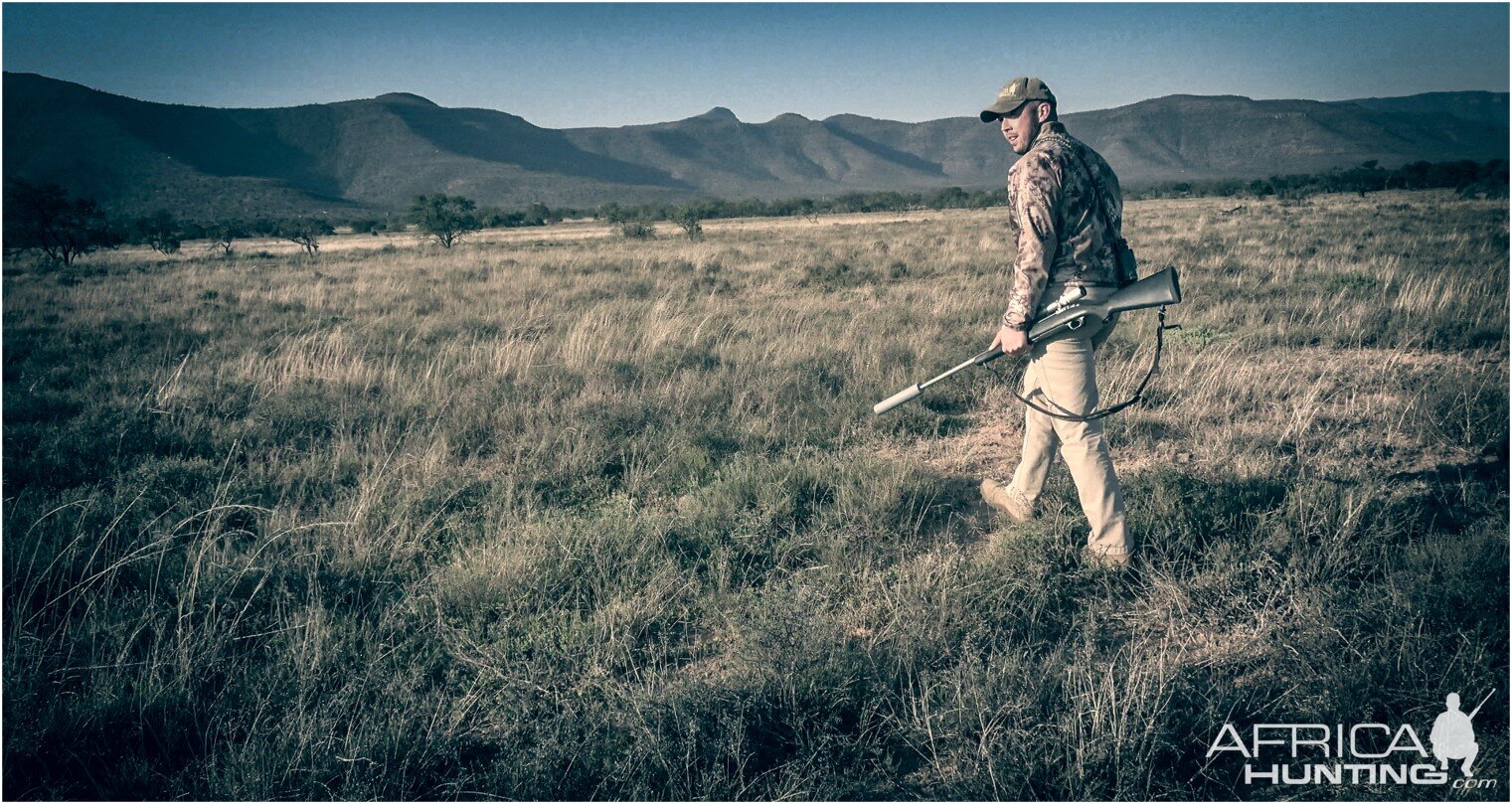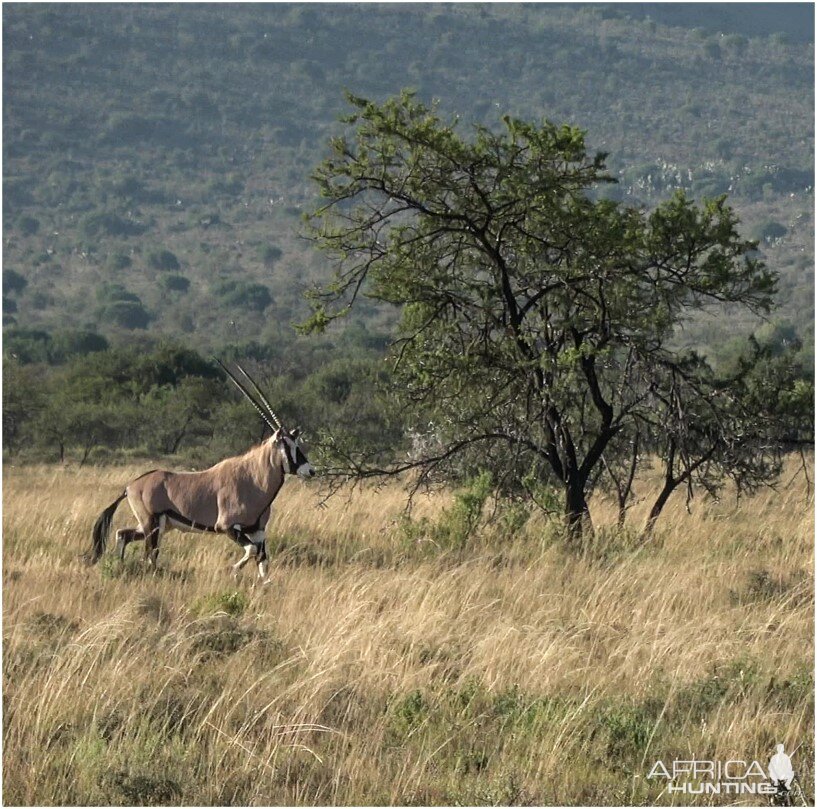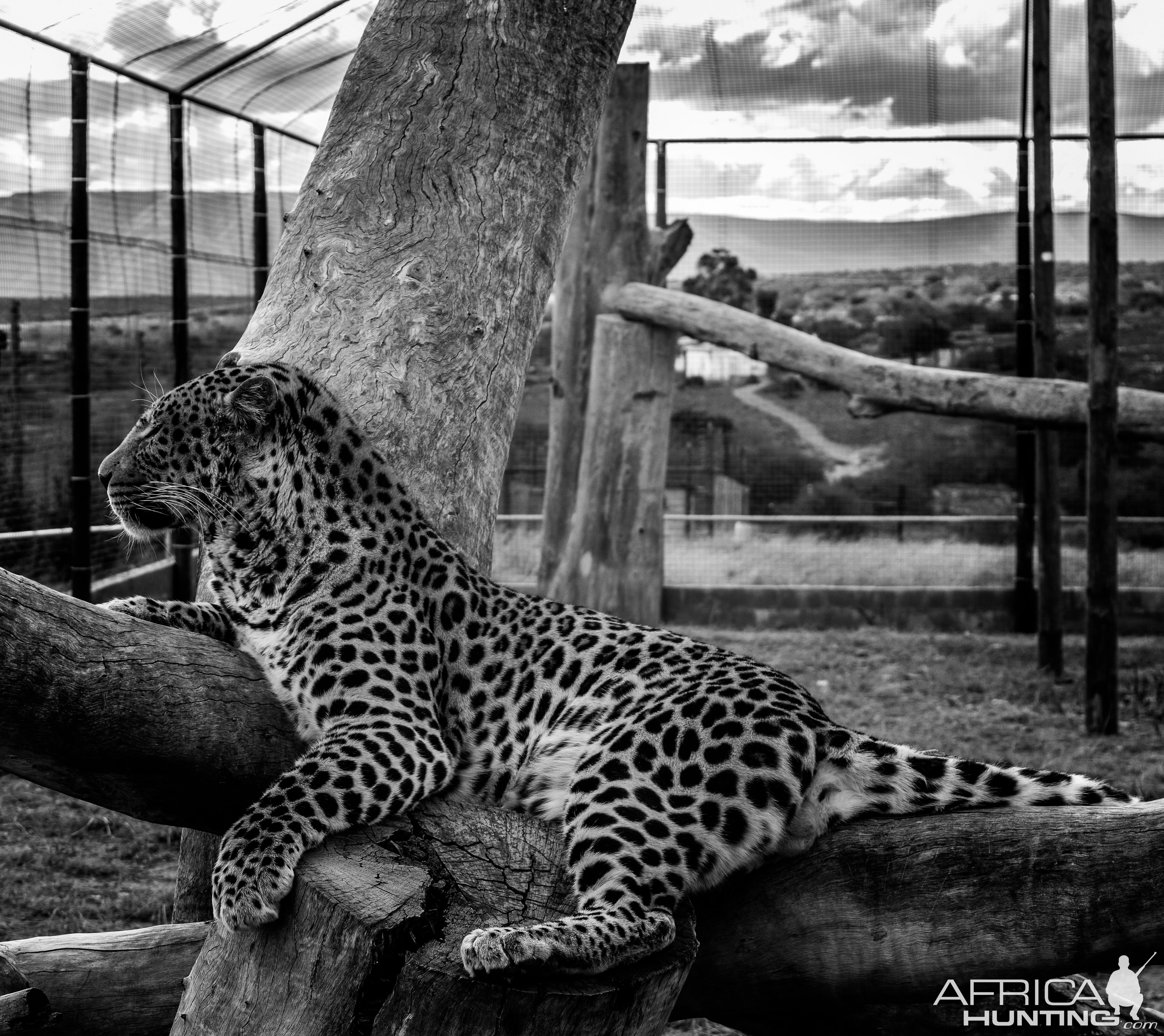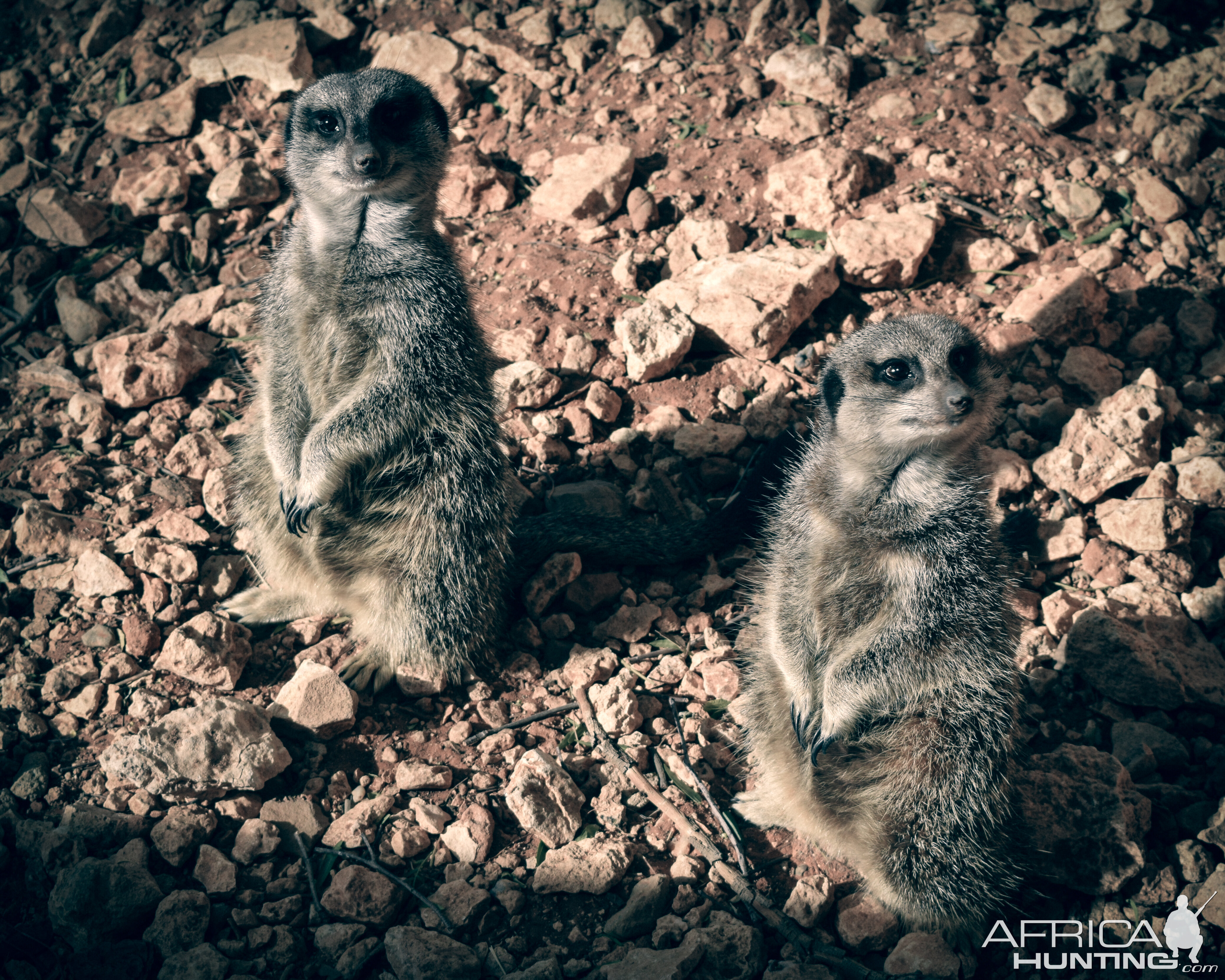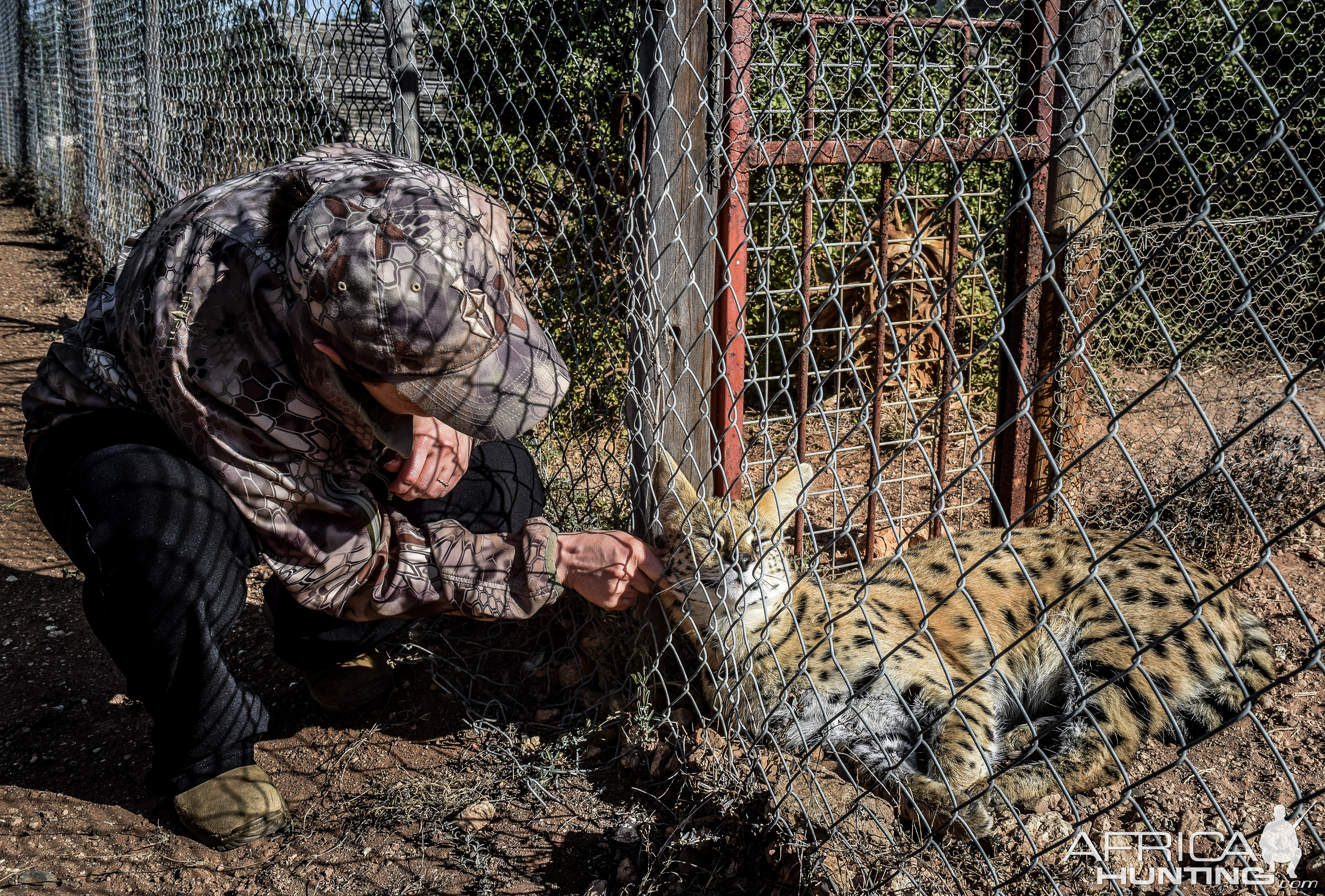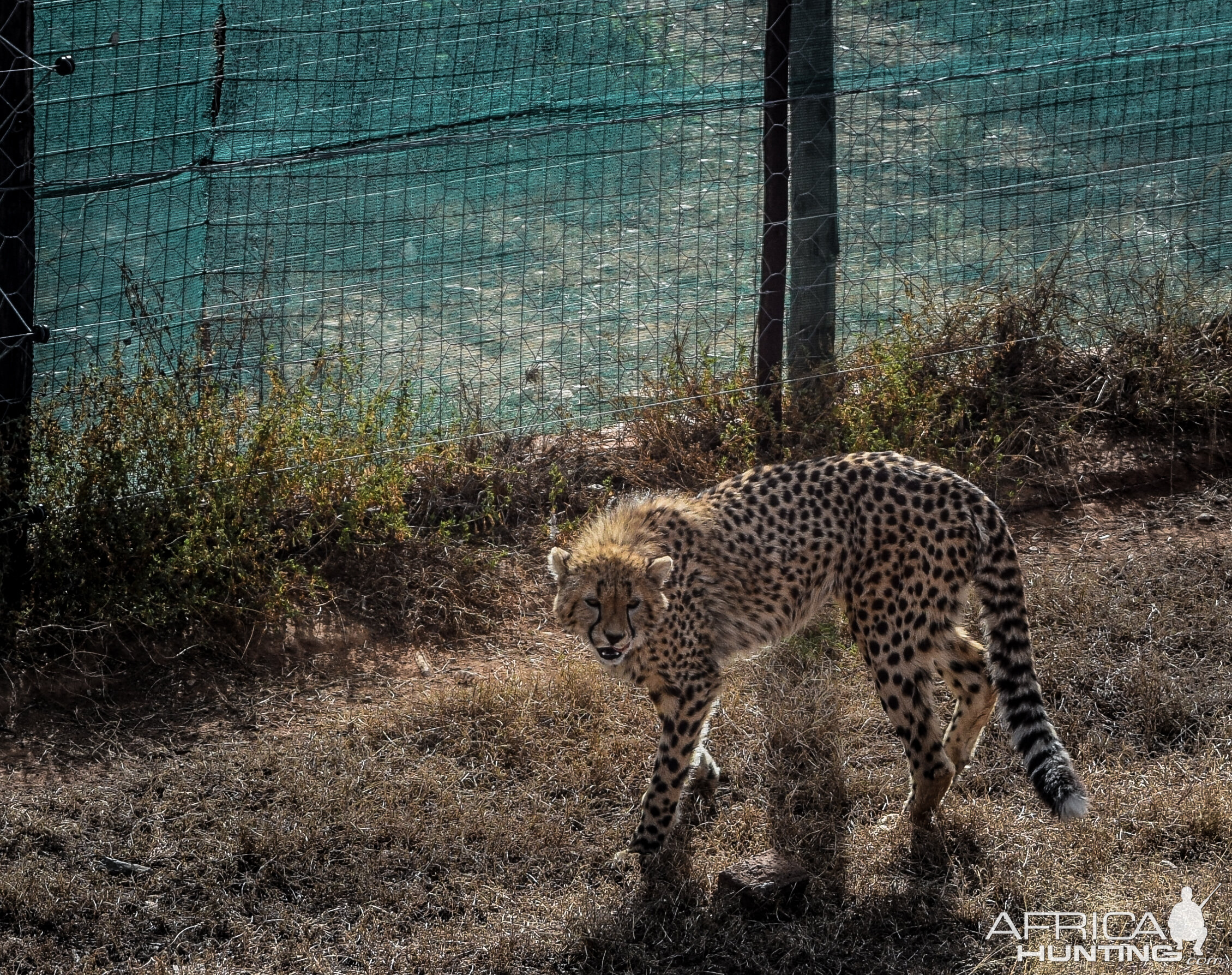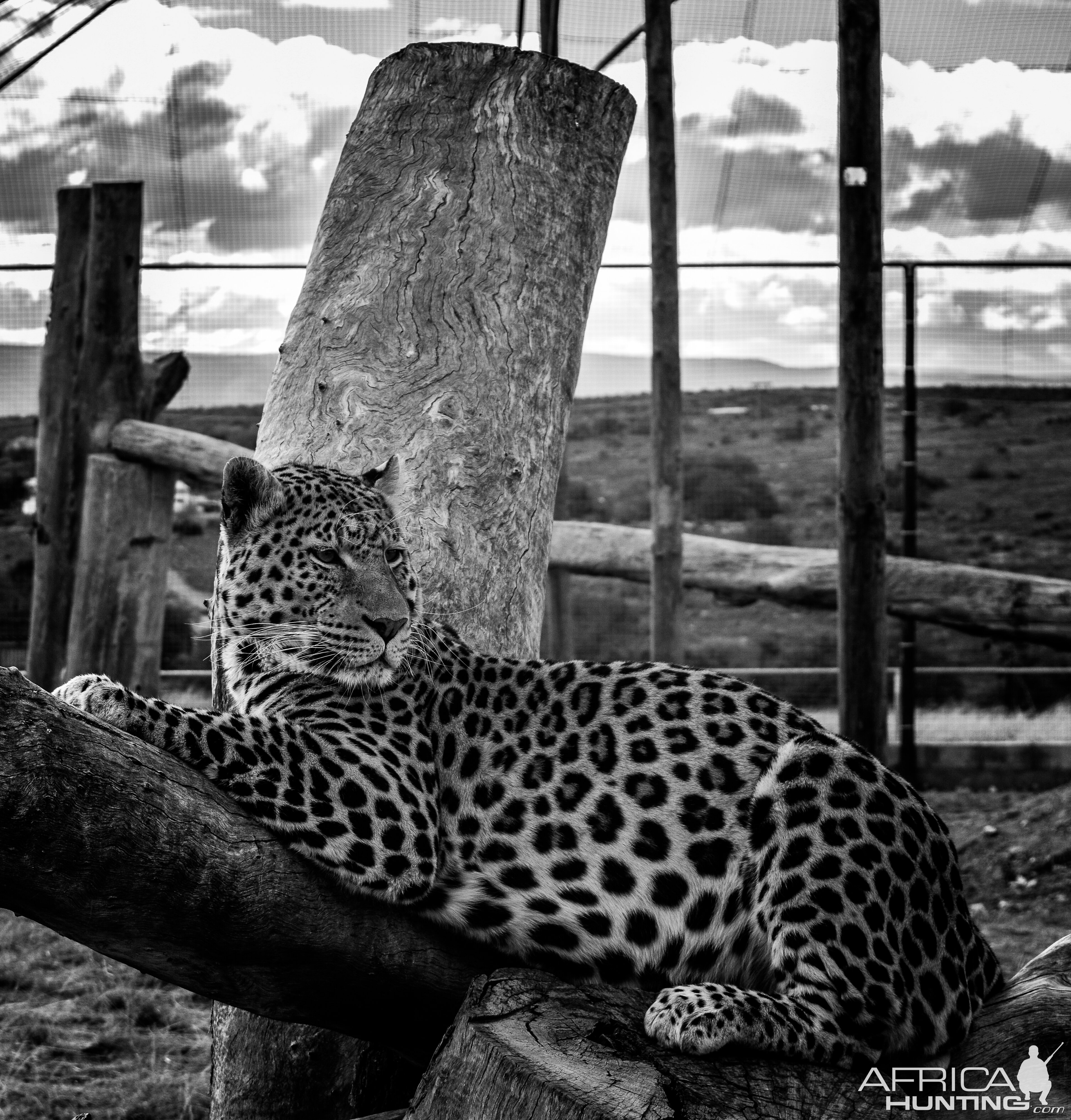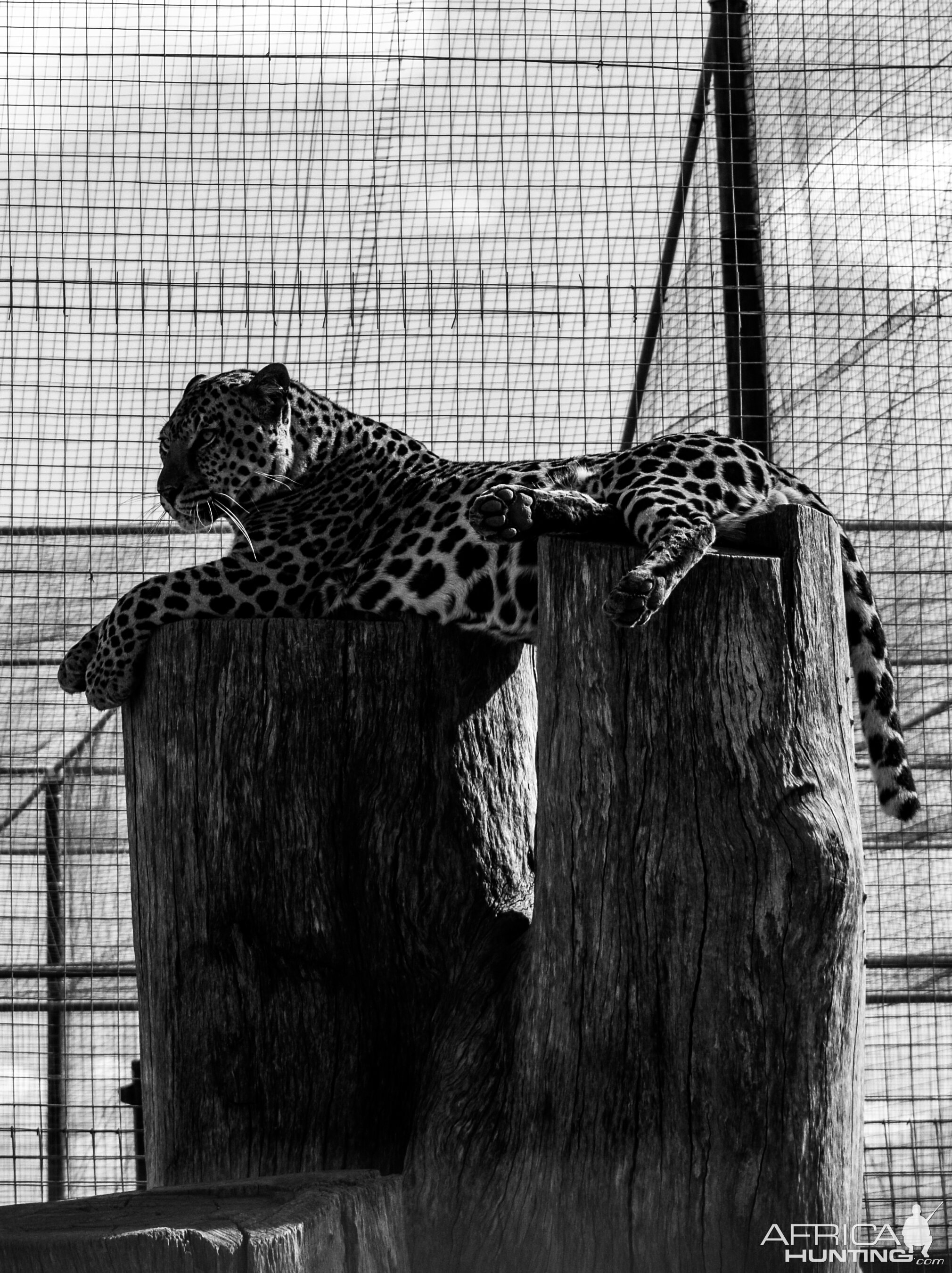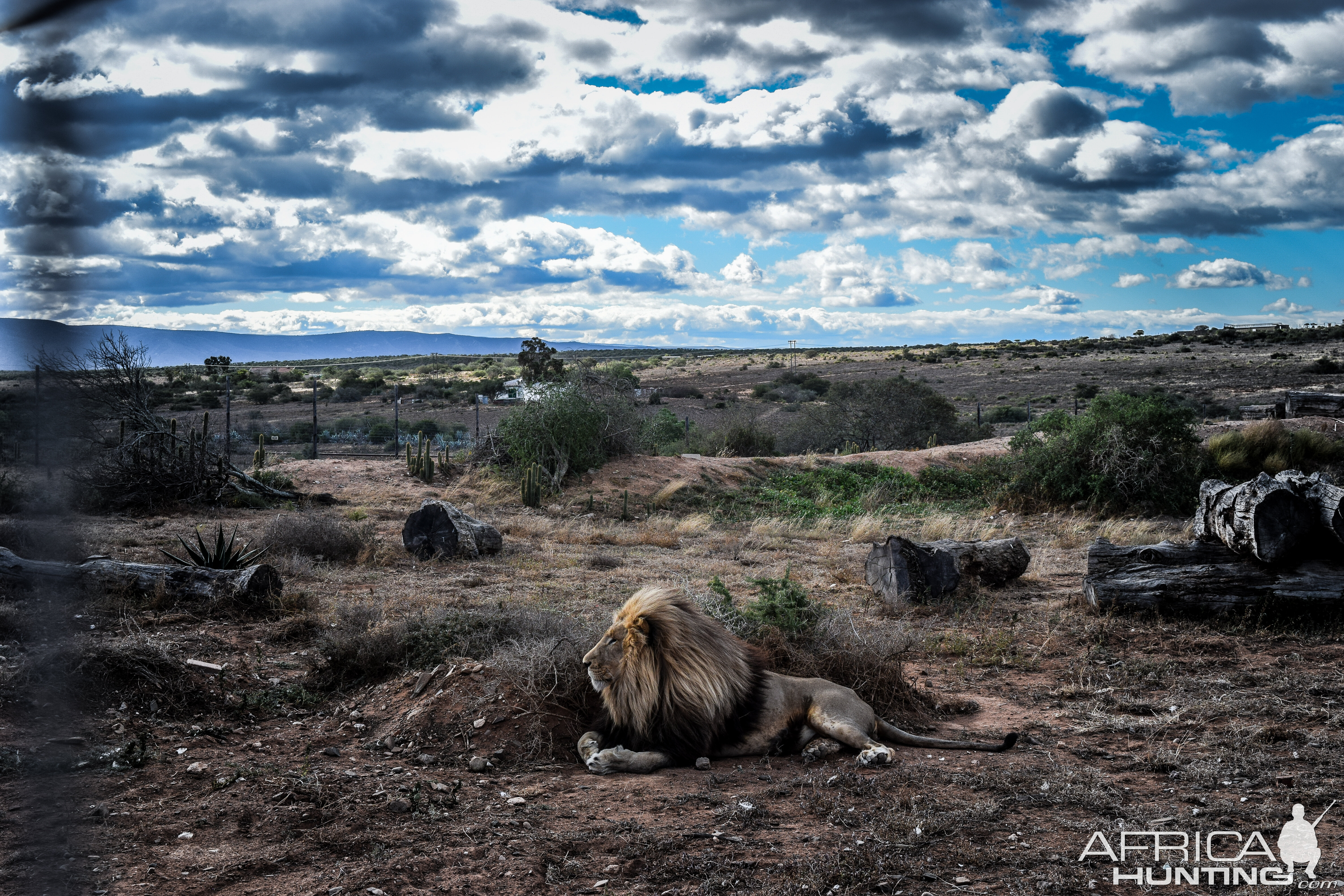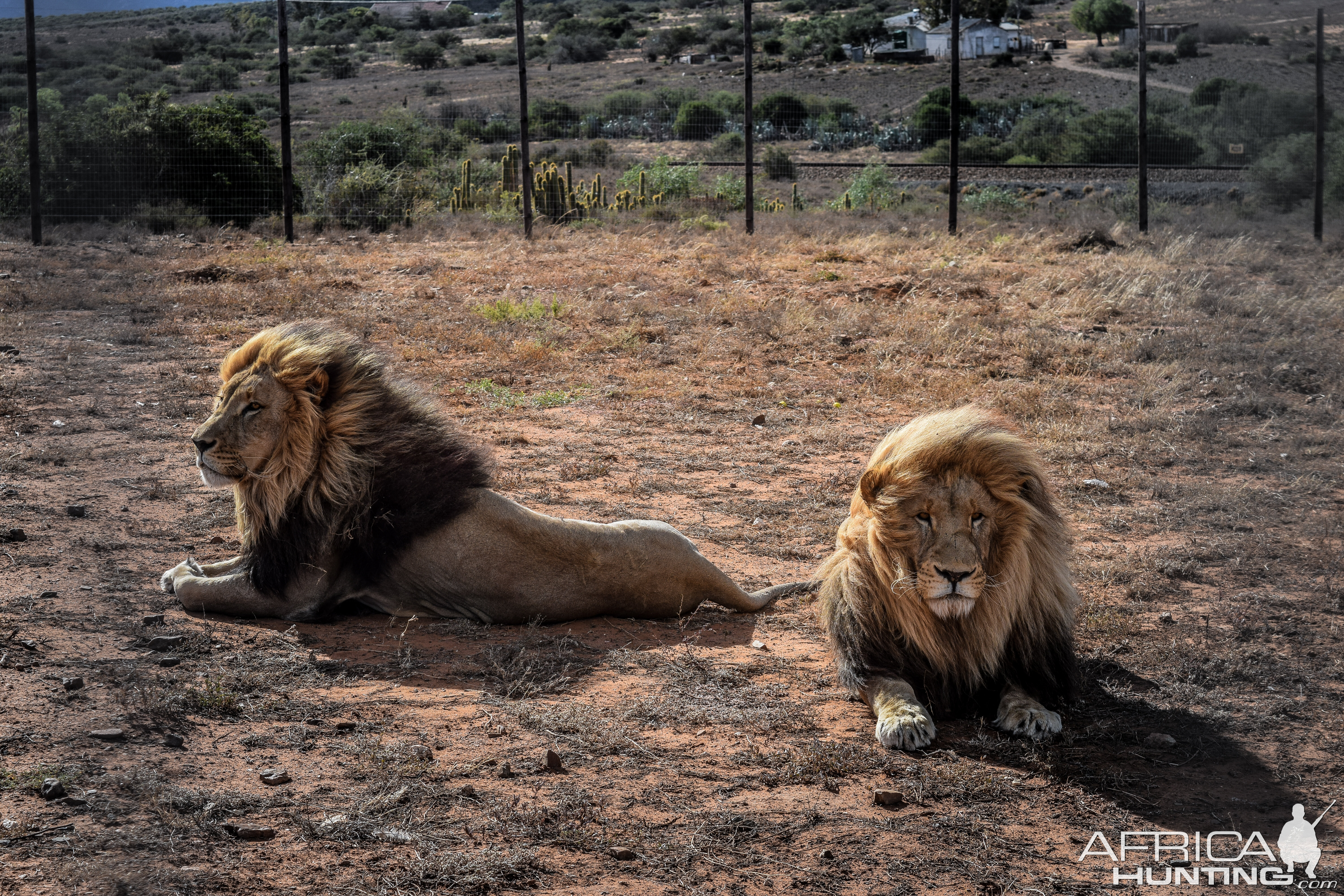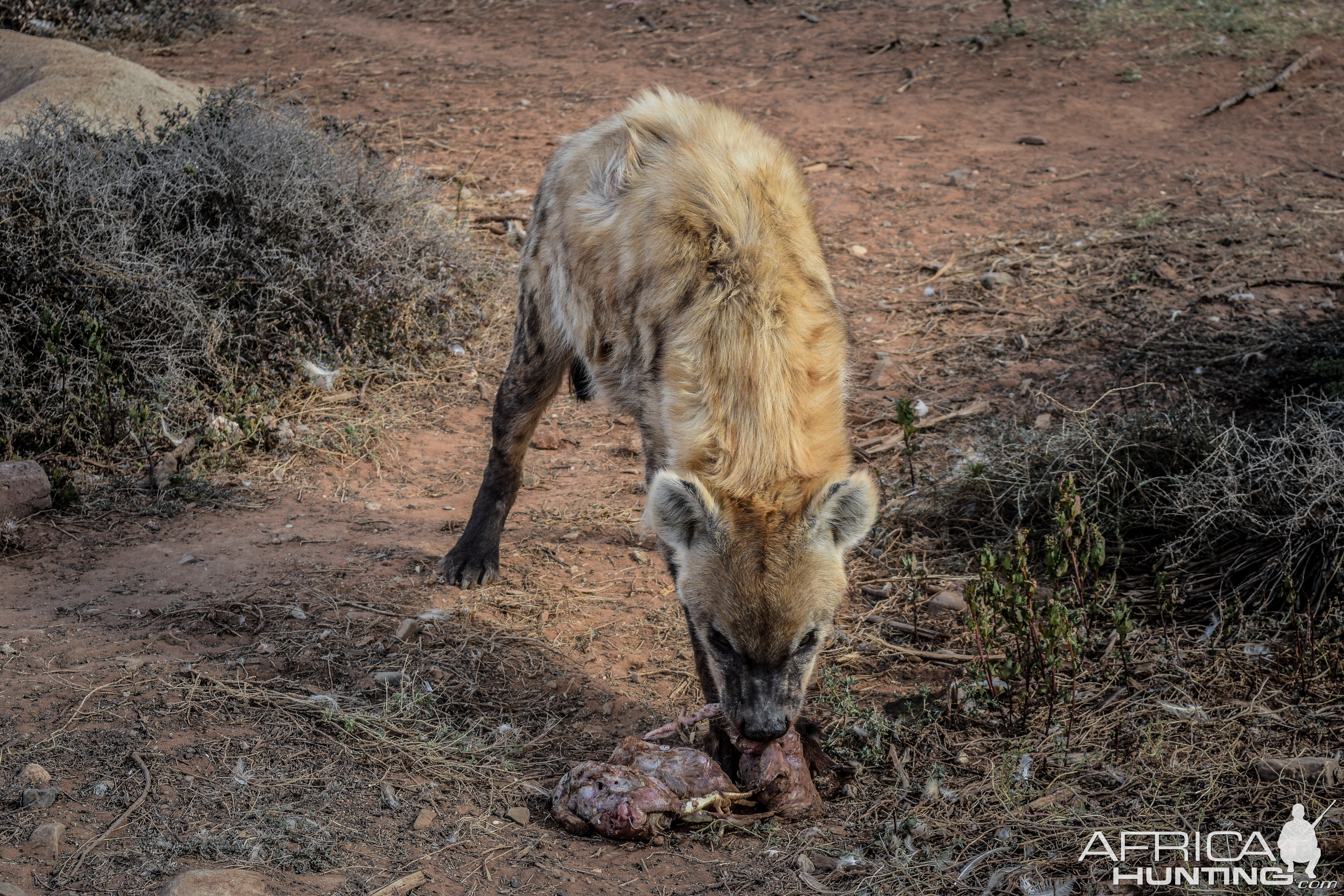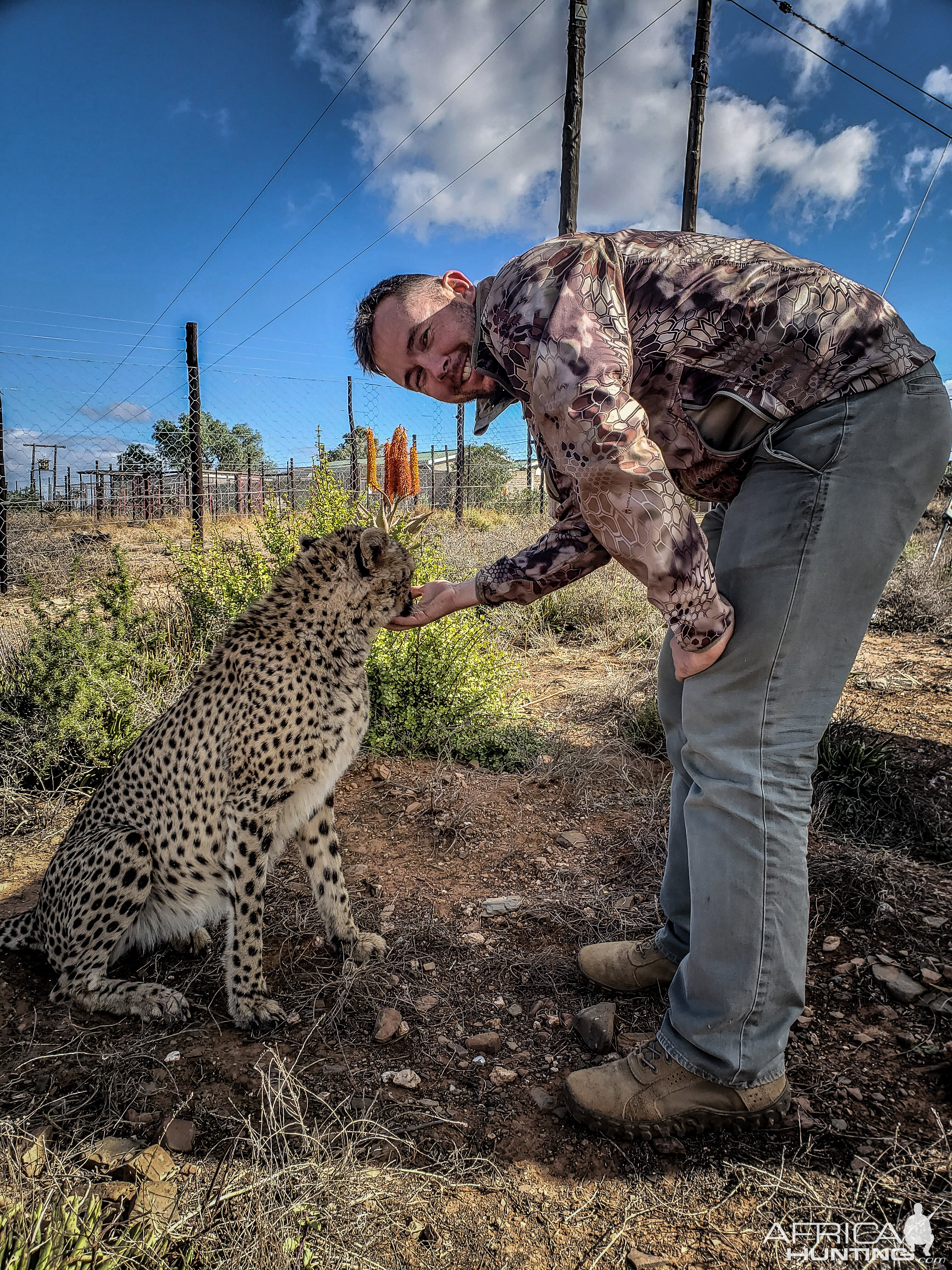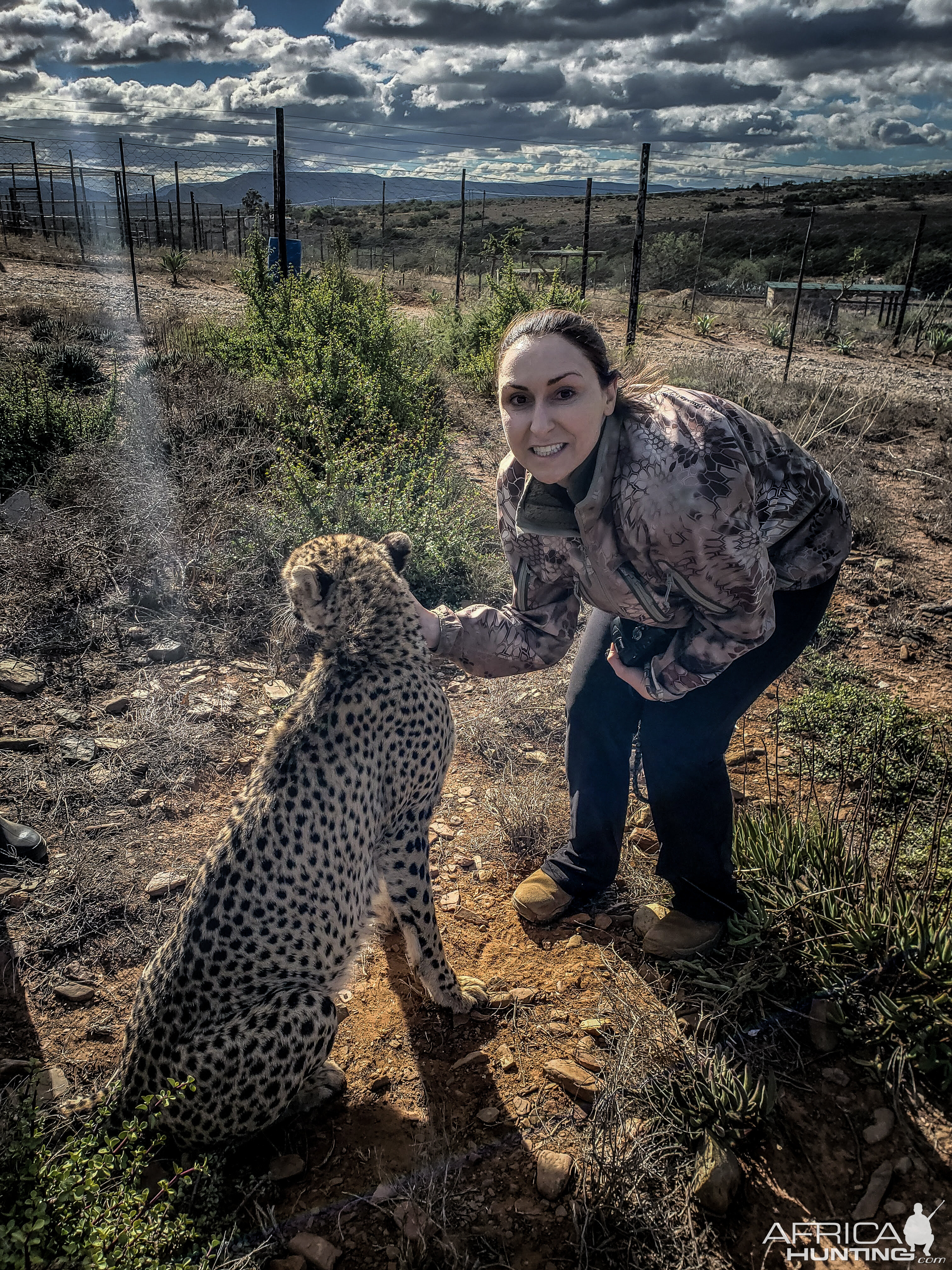Chapter VI
Jen’sbok matriarch
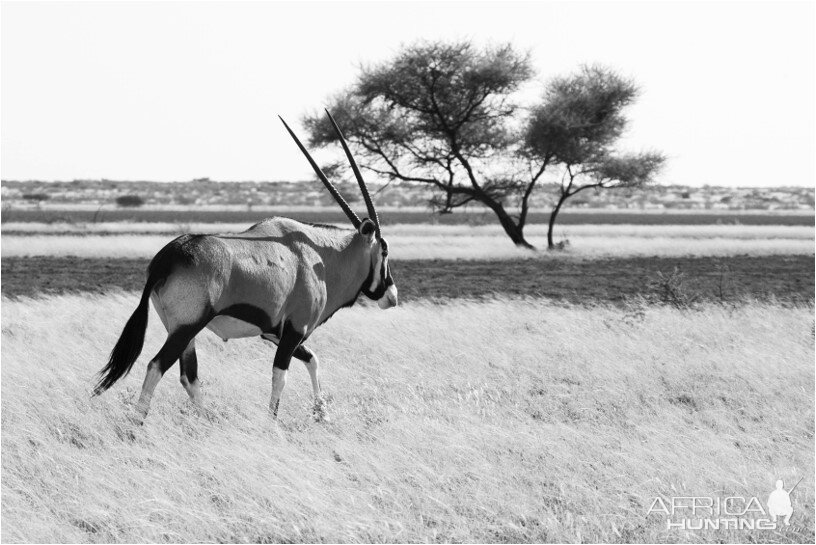
The vast high plateau lay behind the aging matriarch and her two companions now. They’d made their way down from the relative safety of the high ground earlier in the day. Briefly, they’d passed a group of their fellow gemsbok grazing through a valley. The group was large, but not particularly welcoming of outsiders, and so they moved on.
The female gemsbok paused along a low embankment that surrounded a small depression. From this spot, she looked back across the valley, with its low, rolling hills feeding into the steep slopes that lead back up towards the plateau beyond. She would return towards the high ground as the sun began to set, but it wasn’t time yet. An itch garnered her attention and she cocked her head back to scratch the spot near her hind legs with long, straight horns. The two males with her stayed close, providing the eyes and ears to ensure the small group’s security, while the matriarch made her leisurely walk.
They continued to the next hill but paused in the low ground to feed. The hill was relatively clear of vegetation, but still afforded the gemsbok matriarch a commanding view of the valley from its gentle slopes. She fed on a low bush while her two companions milled about nearby. A truck approached down the main dirt road, kicking up plumes of dust and dirt in its wake. It turned off onto the smaller dirt road that wound around the hill and into the valley beyond. As the vehicle sounds grew louder, the matriarch led her small group away, traversing the hill about halfway up. They headed toward a ridge that would allow them to cross over to the backside of the hill. As they moved, the matriarch looked up at the sun. It was sitting deep in the western sky, nearing the horizon. Sunset would arrive in about an hour.
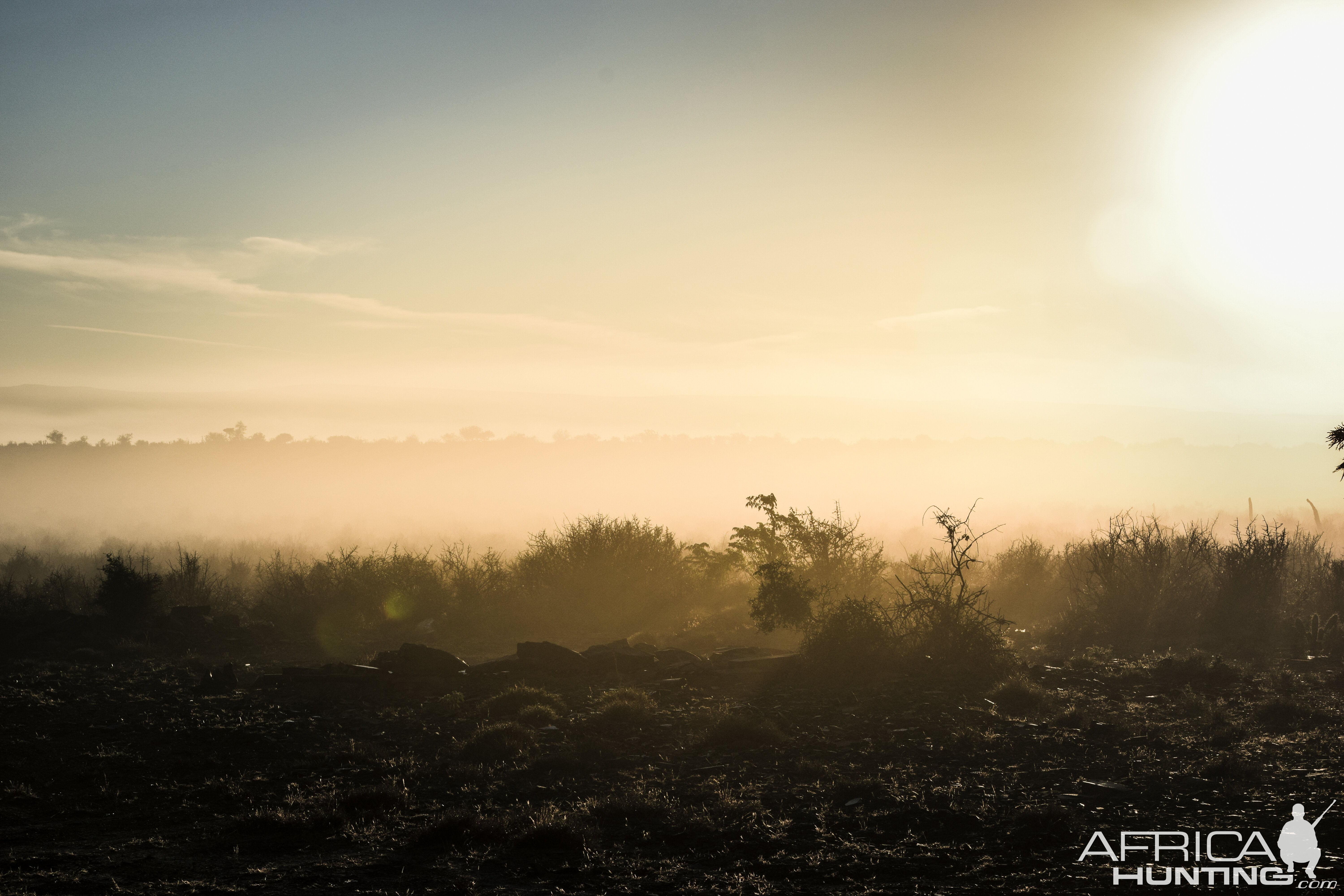
Jen hunted gemsbok on our first safari, in Limpopo province. After getting close to a group of gemsbok at last light, Jen took a shot at a tough angle. As night set in, the search for the hit animal had to wait for the next morning. Ultimately, we were unable to recover the gemsbok, a really tough and unfortunate situation for all of us.
On this, our second safari, Jen planned to also make a second attempt at a gemsbok, or as we affectionately like to refer to them, a Jen’s bok. Early in our trip, Francois suggest we look for gemsbok on the property of a childhood friend of his, Johnny Henderson. Johnny’s property was on the opposite side of the north-south mountain range that the Umlilo lodge butted up against. We were on the west side, this property on the east. As a kid, Francois’s dad used to fly them over the mountains in his plane to get to the Henderson farm. Sadly, this option was no longer available, and we would have to drive- a significant detour to the north to access the mountain pass.
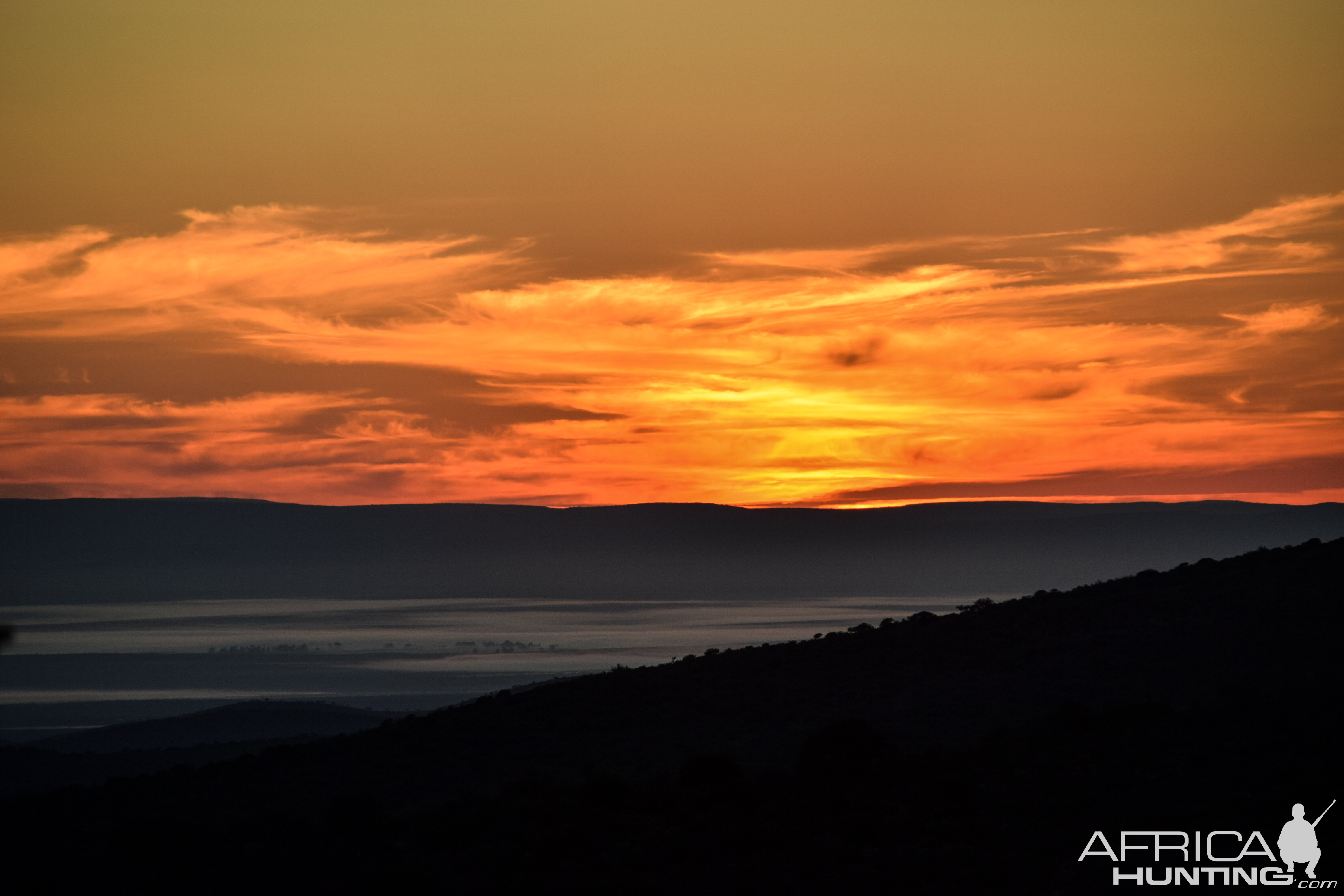
We set off before first light on the R75 highway, which would lead us from the Umlilo lodge, through the pass. The morning chill and early hour kept everyone quiet and contemplative as we cruised along the road. With the first hints of sunrise peaking over the mountain tops, the R75 turned east and increased in elevation, approaching the pass. As we crested the apex, the entire valley was visible before us, painted in shades of deep purple and blue and gray, as the sun continued its gradual climb. Much of the valley was shrouded in morning fog, a new experience for us in South Africa, a country usually clear and dry.
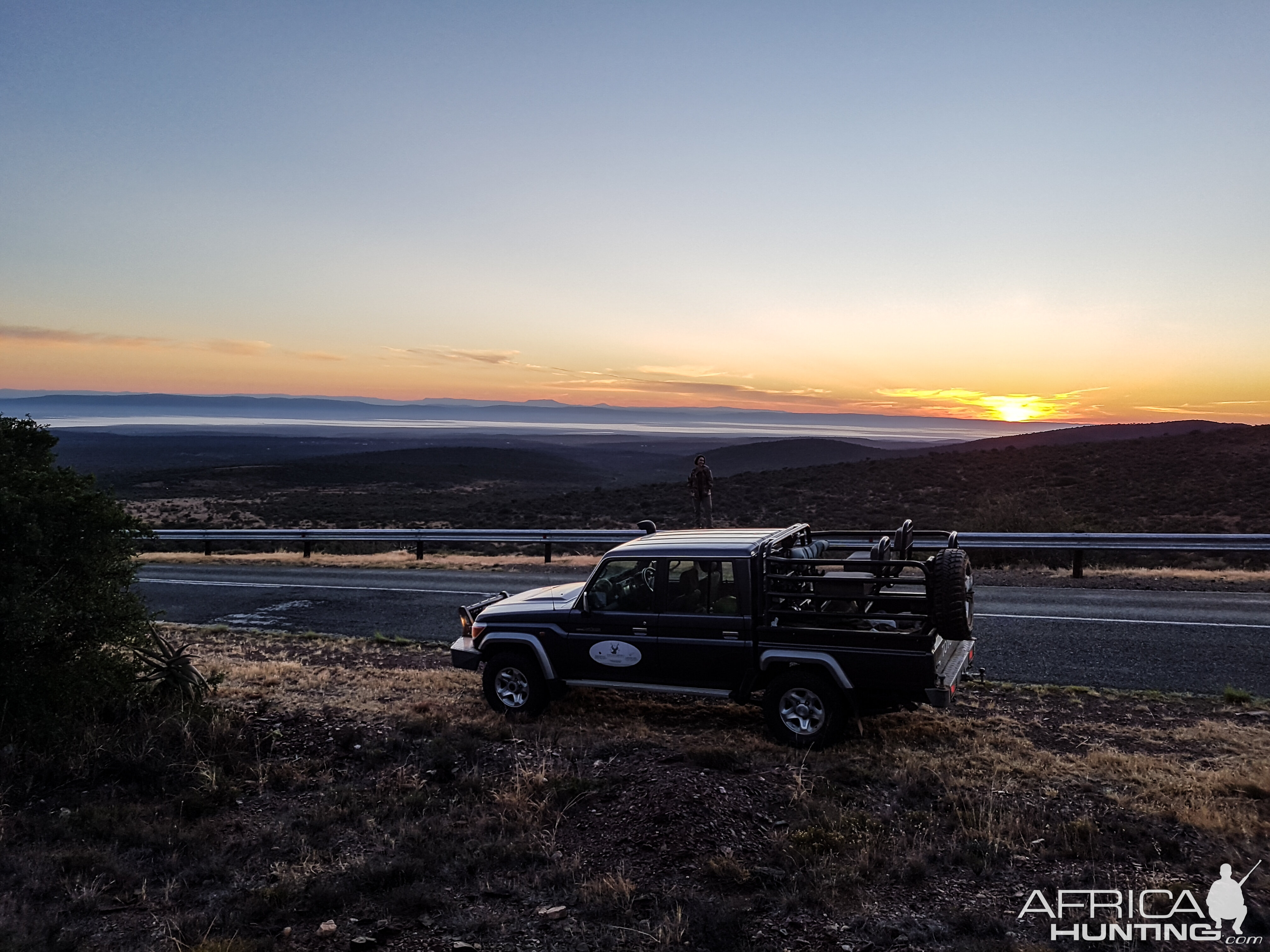
To our south was a large lake. Francois related that the lake was formed after the erecting of the Darlington Dam. Interestingly, Johnny and his family obtained much of their wealth due to this dam. The Henderson family has traditional Boer roots in farming and livestock management, a tradition that continues to this day. Long ago, the government decided to build the Darlington Dam on Sunday’s River, forming Lake Mentz. Coincidentally, the Sunday’s River flows through the mountains, past Kirkwood. A branch of the Sunday’s, the Kariegarivier, flows through the Umlilo property, with the lodge built on the bluff overlooking one of its dry riverbeds. On building the dam, the government flooded much of the Henderson’s lands. After lengthy court battles, the Hendersons were richly and rightly compensated for the impact of the government’s decisions.
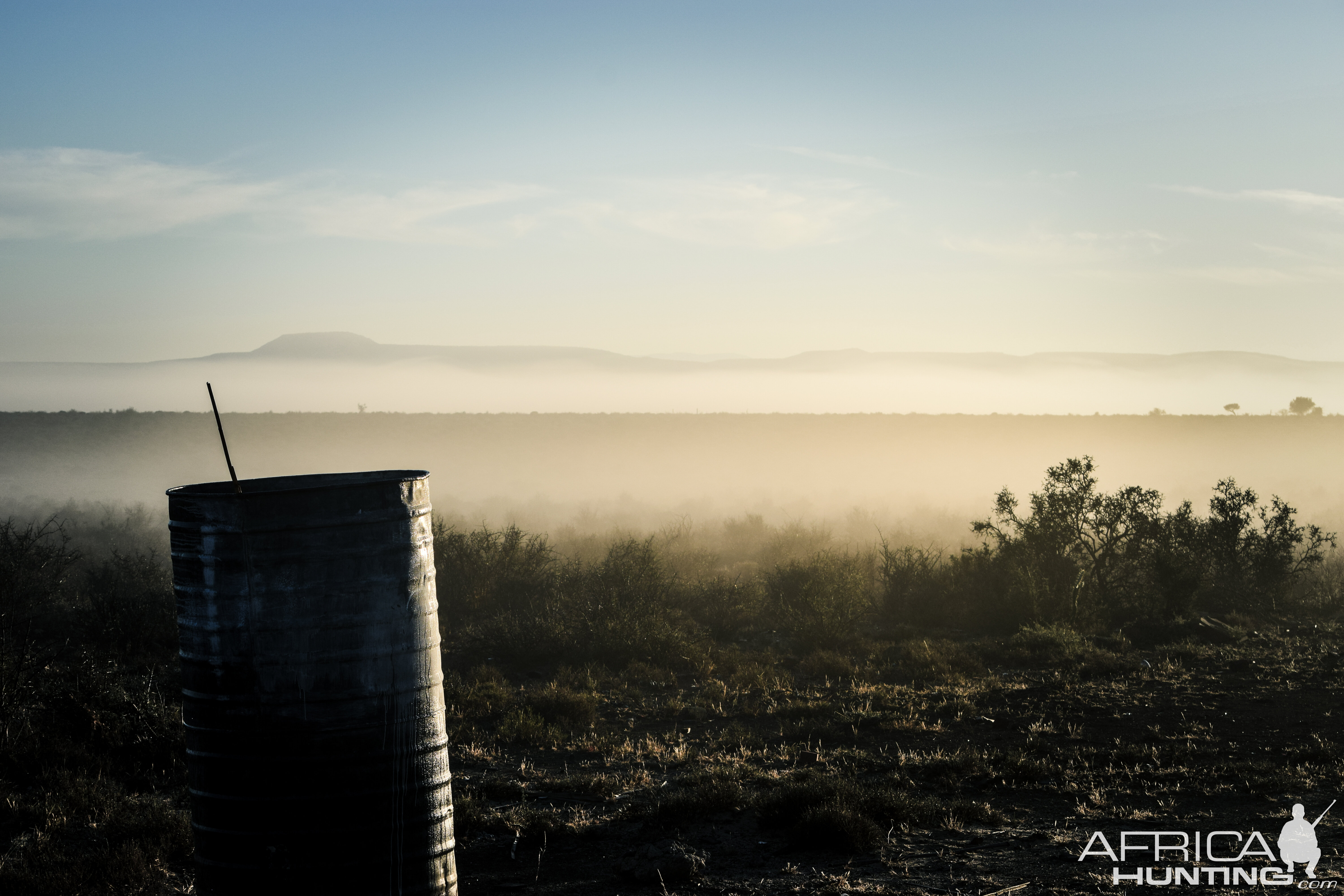
Our trip to Henderson’s was ultimately unsuccessful in terms of gemsbok. While there, we did spot ample game, including eland and waterbuck. Additionally, we stopped by their game breeding enclosure and got to see some young sable and a herd of cape buffalo up close. In the herd were lots of females and young males and one, clearly dominant, breeder bull. He will make an impressive trophy once he’s past breeding age; but, for now, he’s safe to pass on his excellent genetics.
As sunset approached, Francois suggested we check in with Johnny for sundowners. I love that word- sundowner. It refers to having a drink with friends around sunset, hence sundowner. It’s a great way to end any day, but especially here in Africa. We drive down to Johnny’s house, a fabulous place built similar to many safari lodges, with a grass roof and large, open-concept rooms. A giant fireplace sits in the middle of the living room with a great buffalo mount hung. The house is actually in the shape of an H, as is the pool, in a not-so-subtle nod to the Henderson name. Johnny is a great guy, very hospitable and friendly. We enjoy our sundowners, before heading back to Umlilo.
With the lack of success at Johnny’s place, Francois decides to take us to another place, also to the north. This time, as we drive along the R75, at the town of Kleinpoort, rather than continuing east, we turn west. The road quickly shifts from pavement to dirt to potholes. Eventually, we arrive at a gate labeled Royal Karoo Safaris. This is Francois’s first time testing out this concession, so we’ll see if the drive was worth it.
The Royal Karoo lodge is built at the base of a high and particularly steep set of mountains, with most of the concession encompassing this particular mountain range and the plateau at the top in particular. We picked up a local game scout at the lodge and then headed down the road towards the trail that leads to the top of the plateau. After a short drive, the game scout indicated we should turn right onto a trail.
As luck would have it, on the way to the trail, we spotted a group of gemsbok on a hillside near the bottom. We stopped the truck and dismounted to see if there were any eligible candidates in the group. As we stalked up the hillside, thick with brush, we passed a group of nyala females, their orange fur peaking through gaps in the bushes. While they knew we were there, they didn’t spook, and just casually walked away, blending into the foliage. Luckily, they did not head towards the group of gemsbok we were stalking.
Soon, we’d moved within range and could see a large group of gemsbok milling about in the shade. Some were laying down, others grazing. Francois scanned the group and found a good one tucked away behind some thron bushes and a tree. He was facing away from us and we could make out his back and majestic horns extending away from his head. We just needed him to stand up and present a shot, as his current position risked a miss or bad hit if we attempted anything.
After waiting for what seemed like an eternity, Francois decided to see if we could test our luck and get the gemsbok to react. The time was approaching midday, which meant that if we left the group to their own devices, we might be waiting for four or five hours before they decided to get up. Francois picked up two rocks and hit them together.
No response.
He tried again. Nothing.
Francois gave a shout and hit the rocks together multiple times.
Again, no response from the gemsbok. Clearly, these guys were committed to taking full advantage of their afternoon siesta. We decided to move closer in the hopes of getting a better shot or getting the antelope to stand up
We inched along, 60 yards, 50 yards, 45 yards. All of a sudden, one of the gemsbok spooked and took off running. In rapid succession, all the others joined him in a cloud of dust. We’d missed our opportunity. It was time to find a different group of gemsbok.
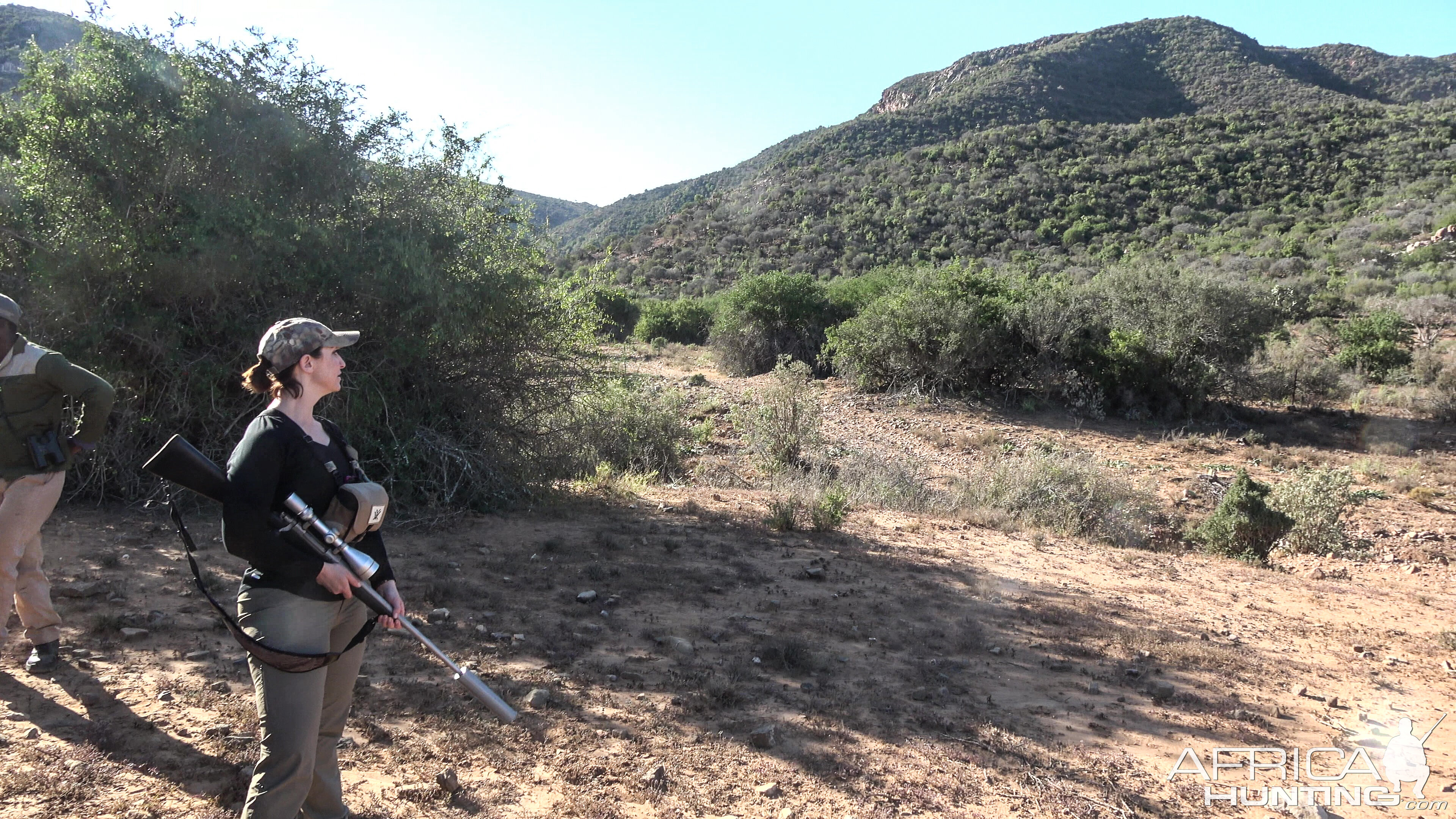
We returned to the truck and followed the dirt road, a set of switch backs leading towards the top of the mountain. After each switch back, the trail’s steepness increased, each turn sharper and sharper. Jen was sitting inside the cab, while I was in the back with Tully and the local scout. Soon, I found myself holding on to one of the metal bars in the truck bed with a death grip. The incline continued to increase! Eventually, we reached a small, sharp switchback that turned into a 45 degree ascent – I wish I was exaggerating. I could feel the front wheels of the Toyota desperately attempting to get traction as Francois attempted the maneuver. Behind us, the edge of the road terminated into a 100 ft+ cliff face. With the tires kicking out rocks from the loose gravel and one of the front wheels unable to maintain contact with the ground at this sharp angle, I suggested to Francois that perhaps this road was a bit too much high adventure.
Francois interrogated the local scout, asking when last a truck made it up this road. The scout explained that the road had been recently excavated with a tractor… no mention of a truck or any other vehicle with four wheels heading up this route. To my relief, we decided to head back down and try our luck at a lower altitude. I might be a big baby, but sometimes, the juice isn’t worth the squeeze!
We returned to the base of the mountain and began driving along the main road, which followed the north-south path of the ridgeline. About a mile down the road, we turned back towards the mountain, intent on investigating some draws that disappeared back towards a cliff face. On our left was a sparsely vegetated hill that the dirt trail wound around.
As we rounded the bend, we spotted three gemsbok antelope walking along the hillside, about halfway up. The gemsbok, part of the oryx family, is a majestic beast, mostly tan in color, with a white belly, and a distinctive back stripe on its side and blotched on its face. Both the male and female sport long, straight horns. The female’s horns are actually demonstrably longer than the males, but slightly thinner. In this group of three gemsbok, there were two middle-aged males and an older female, a matriarch. Their beautiful coloration contrasted wonderfully against the tan grassy hillside.
The animals had yet to spook, so we continued on the trail and Francois indicated a bush up ahead. As we drove by the bush, we carefully dismounted while the truck continued on its way. The bush was poor cover indeed, just a lone thorn bush with almost no leaves. The gemsbok were passing in front of us at about 175 yards and Francois quickly set up the shooting sticks for Jen. The antelope caught sight of the movement and quickened their pace. By the time Jen was set, they had disappeared over a saddle near the hilltop.
We decided to see about catching them on the other side of the hill. Mounting back up into the Land Cruiser, we set off at an aggressive pace on a dirt track that didn’t even earn the distinction of “trail.” After about ten minutes of getting jostled and tossed about in the truck, we reached the north end of the hill and turned back onto the main road, headed south. The sun was starting to sink deep into the western sky- we probably had less than 90 minutes of daylight left.
Still no gemsbok spotted, but Francois had a hunch. Since we hadn’t seen them yet, they were likely still milling abut on the hill. By driving past the hill on its western side, we might turn them and push them back towards the east. The plan was to drive to the eastern base of the hill and hike up. With luck, we’d encounter the gemsbok somewhere along the way!
At the eastern base of the hill, we halted. Tully took the wheel and headed back out to the main road. He would act as a bird dog, letting us know if the gemsbok changed direction. Our ascent was steep, but not uncomfortably so, across loose and rocky terrain, interspersed with long grass. Three quarters of the way up the slope, we reached a crude, manmade wall of stacked rocks that appeared to run along the hillside, but who’s purpose was not apparent. We followed this a ways towards the west, past a couple thorn bushes, expecting antelope around every corner. The sky was beginning to take on a grayish hue, with shades of purple, as the sun continued its descent. Not much light left now.

With a quick motion, Francois had us halt. Jen and I couldn’t see anything but Francois assured us the gemsbok were approaching. Jen settled the rifle on the sticks and waited for the “OK” to shoot. Francois watched the approaching antelope to try and distinguish which was which. Confirming that the matriarch was still leading the two males around, he let Jen know that this would be another frontal chest shot, as they were walking up the hillside, right towards us. The opportunity to shoot would be very short as they would likely notice us as soon as Jen could see them through the scope.
Sure enough, we first saw horns, then face, and then the chest of the female gemsbok. The oryx immediately alerted, but it was too late. Jen squeezed the trigger and sent a shot right into its chest. With a clatter of dust and rocks, the three gemsbok bolted. We quickly moved forward and spotted them down the hill already. With some haste, as dusk was upon us, we pursued down the hill.
The two males were already gone and the female was limping along below us. Jen put another shot into the gemsbok and it ran a ways further away from us. One more shot and the pursuit of a gemsbok, which had taken Jen two safaris to achieve, was finally over. The majestic old matriarch was laid to rest, but she would live on in our memories and memorialized in our home as a mount. A great conclusion to a long day. We made the drive back to the Umlilo lodge in darkness, contented and quietly, each left to their own thoughts.




